Head Start Your Radiology Residency [Online] ↗️
- Radiology Thesis – More than 400 Research Topics (2022)!

Please login to bookmark
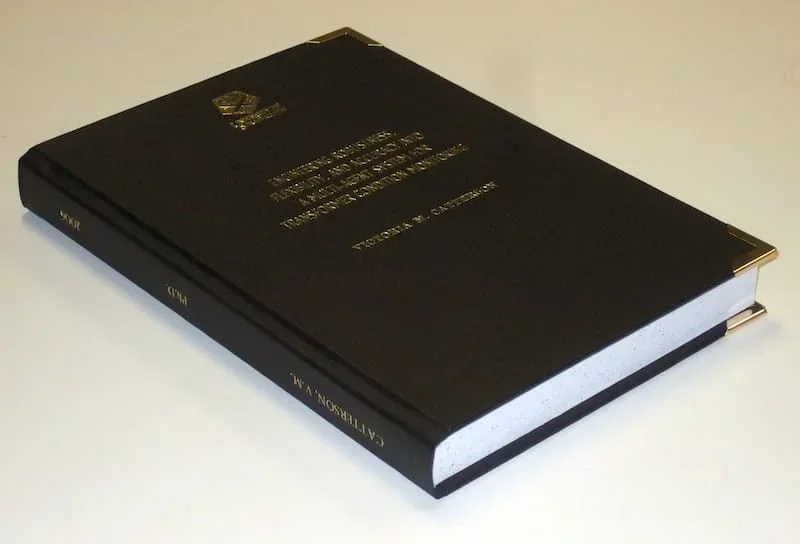
Introduction
A thesis or dissertation, as some people would like to call it, is an integral part of the Radiology curriculum, be it MD, DNB, or DMRD. We have tried to aggregate radiology thesis topics from various sources for reference.
Not everyone is interested in research, and writing a Radiology thesis can be daunting. But there is no escape from preparing, so it is better that you accept this bitter truth and start working on it instead of cribbing about it (like other things in life. #PhilosophyGyan!)
Start working on your thesis as early as possible and finish your thesis well before your exams, so you do not have that stress at the back of your mind. Also, your thesis may need multiple revisions, so be prepared and allocate time accordingly.
Tips for Choosing Radiology Thesis and Research Topics
Keep it simple silly (kiss).
Retrospective > Prospective
Retrospective studies are better than prospective ones, as you already have the data you need when choosing to do a retrospective study. Prospective studies are better quality, but as a resident, you may not have time (, energy and enthusiasm) to complete these.
Choose a simple topic that answers a single/few questions
Original research is challenging, especially if you do not have prior experience. I would suggest you choose a topic that answers a single or few questions. Most topics that I have listed are along those lines. Alternatively, you can choose a broad topic such as “Role of MRI in evaluation of perianal fistulas.”
You can choose a novel topic if you are genuinely interested in research AND have a good mentor who will guide you. Once you have done that, make sure that you publish your study once you are done with it.
Get it done ASAP.
In most cases, it makes sense to stick to a thesis topic that will not take much time. That does not mean you should ignore your thesis and ‘Ctrl C + Ctrl V’ from a friend from another university. Thesis writing is your first step toward research methodology so do it as sincerely as possible. Do not procrastinate in preparing the thesis. As soon as you have been allotted a guide, start researching topics and writing a review of the literature.
At the same time, do not invest a lot of time in writing/collecting data for your thesis. You should not be busy finishing your thesis a few months before the exam. Some people could not appear for the exam because they could not submit their thesis in time. So DO NOT TAKE thesis lightly.
Do NOT Copy-Paste
Reiterating once again, do not simply choose someone else’s thesis topic. Find out what are kind of cases that your Hospital caters to. It is better to do a good thesis on a common topic than a crappy one on a rare one.
Books to help you write a Radiology Thesis
Event country/university has a different format for thesis; hence these book recommendations may not work for everyone.

- Amazon Kindle Edition
- Gupta, Piyush (Author)
- English (Publication Language)
- 206 Pages - 10/12/2020 (Publication Date) - Jaypee Brothers Medical Publishers (P) Ltd. (Publisher)
In A Hurry? Download a PDF list of Radiology Research Topics!
Sign up below to get this PDF directly to your email address.
100% Privacy Guaranteed. Your information will not be shared. Unsubscribe anytime with a single click.
List of Radiology Research /Thesis / Dissertation Topics
- State of the art of MRI in the diagnosis of hepatic focal lesions
- Multimodality imaging evaluation of sacroiliitis in newly diagnosed patients of spondyloarthropathy
- Multidetector computed tomography in oesophageal varices
- Role of positron emission tomography with computed tomography in the diagnosis of cancer Thyroid
- Evaluation of focal breast lesions using ultrasound elastography
- Role of MRI diffusion tensor imaging in the assessment of traumatic spinal cord injuries
- Sonographic imaging in male infertility
- Comparison of color Doppler and digital subtraction angiography in occlusive arterial disease in patients with lower limb ischemia
- The role of CT urography in Haematuria
- Role of functional magnetic resonance imaging in making brain tumor surgery safer
- Prediction of pre-eclampsia and fetal growth restriction by uterine artery Doppler
- Role of grayscale and color Doppler ultrasonography in the evaluation of neonatal cholestasis
- Validity of MRI in the diagnosis of congenital anorectal anomalies
- Role of sonography in assessment of clubfoot
- Role of diffusion MRI in preoperative evaluation of brain neoplasms
- Imaging of upper airways for pre-anaesthetic evaluation purposes and for laryngeal afflictions.
- A study of multivessel (arterial and venous) Doppler velocimetry in intrauterine growth restriction
- Multiparametric 3tesla MRI of suspected prostatic malignancy.
- Role of Sonography in Characterization of Thyroid Nodules for differentiating benign from
- Role of advances magnetic resonance imaging sequences in multiple sclerosis
- Role of multidetector computed tomography in evaluation of jaw lesions
- Role of Ultrasound and MR Imaging in the Evaluation of Musculotendinous Pathologies of Shoulder Joint
- Role of perfusion computed tomography in the evaluation of cerebral blood flow, blood volume and vascular permeability of cerebral neoplasms
- MRI flow quantification in the assessment of the commonest csf flow abnormalities
- Role of diffusion-weighted MRI in evaluation of prostate lesions and its histopathological correlation
- CT enterography in evaluation of small bowel disorders
- Comparison of perfusion magnetic resonance imaging (PMRI), magnetic resonance spectroscopy (MRS) in and positron emission tomography-computed tomography (PET/CT) in post radiotherapy treated gliomas to detect recurrence
- Role of multidetector computed tomography in evaluation of paediatric retroperitoneal masses
- Role of Multidetector computed tomography in neck lesions
- Estimation of standard liver volume in Indian population
- Role of MRI in evaluation of spinal trauma
- Role of modified sonohysterography in female factor infertility: a pilot study.
- The role of pet-CT in the evaluation of hepatic tumors
- Role of 3D magnetic resonance imaging tractography in assessment of white matter tracts compromise in supratentorial tumors
- Role of dual phase multidetector computed tomography in gallbladder lesions
- Role of multidetector computed tomography in assessing anatomical variants of nasal cavity and paranasal sinuses in patients of chronic rhinosinusitis.
- magnetic resonance spectroscopy in multiple sclerosis
- Evaluation of thyroid nodules by ultrasound elastography using acoustic radiation force impulse (ARFI) imaging
- Role of Magnetic Resonance Imaging in Intractable Epilepsy
- Evaluation of suspected and known coronary artery disease by 128 slice multidetector CT.
- Role of regional diffusion tensor imaging in the evaluation of intracranial gliomas and its histopathological correlation
- Role of chest sonography in diagnosing pneumothorax
- Role of CT virtual cystoscopy in diagnosis of urinary bladder neoplasia
- Role of MRI in assessment of valvular heart diseases
- High resolution computed tomography of temporal bone in unsafe chronic suppurative otitis media
- Multidetector CT urography in the evaluation of hematuria
- Contrast-induced nephropathy in diagnostic imaging investigations with intravenous iodinated contrast media
- Comparison of dynamic susceptibility contrast-enhanced perfusion magnetic resonance imaging and single photon emission computed tomography in patients with little’s disease
- Role of Multidetector Computed Tomography in Bowel Lesions.
- Role of diagnostic imaging modalities in evaluation of post liver transplantation recipient complications.
- Role of multislice CT scan and barium swallow in the estimation of oesophageal tumour length
- Malignant Lesions-A Prospective Study.
- Value of ultrasonography in assessment of acute abdominal diseases in pediatric age group
- Role of three dimensional multidetector CT hysterosalpingography in female factor infertility
- Comparative evaluation of multi-detector computed tomography (MDCT) virtual tracheo-bronchoscopy and fiberoptic tracheo-bronchoscopy in airway diseases
- Role of Multidetector CT in the evaluation of small bowel obstruction
- Sonographic evaluation in adhesive capsulitis of shoulder
- Utility of MR Urography Versus Conventional Techniques in Obstructive Uropathy
- MRI of the postoperative knee
- Role of 64 slice-multi detector computed tomography in diagnosis of bowel and mesenteric injury in blunt abdominal trauma.
- Sonoelastography and triphasic computed tomography in the evaluation of focal liver lesions
- Evaluation of Role of Transperineal Ultrasound and Magnetic Resonance Imaging in Urinary Stress incontinence in Women
- Multidetector computed tomographic features of abdominal hernias
- Evaluation of lesions of major salivary glands using ultrasound elastography
- Transvaginal ultrasound and magnetic resonance imaging in female urinary incontinence
- MDCT colonography and double-contrast barium enema in evaluation of colonic lesions
- Role of MRI in diagnosis and staging of urinary bladder carcinoma
- Spectrum of imaging findings in children with febrile neutropenia.
- Spectrum of radiographic appearances in children with chest tuberculosis.
- Role of computerized tomography in evaluation of mediastinal masses in pediatric
- Diagnosing renal artery stenosis: Comparison of multimodality imaging in diabetic patients
- Role of multidetector CT virtual hysteroscopy in the detection of the uterine & tubal causes of female infertility
- Role of multislice computed tomography in evaluation of crohn’s disease
- CT quantification of parenchymal and airway parameters on 64 slice MDCT in patients of chronic obstructive pulmonary disease
- Comparative evaluation of MDCT and 3t MRI in radiographically detected jaw lesions.
- Evaluation of diagnostic accuracy of ultrasonography, colour Doppler sonography and low dose computed tomography in acute appendicitis
- Ultrasonography , magnetic resonance cholangio-pancreatography (MRCP) in assessment of pediatric biliary lesions
- Multidetector computed tomography in hepatobiliary lesions.
- Evaluation of peripheral nerve lesions with high resolution ultrasonography and colour Doppler
- Multidetector computed tomography in pancreatic lesions
- Multidetector Computed Tomography in Paediatric abdominal masses.
- Evaluation of focal liver lesions by colour Doppler and MDCT perfusion imaging
- Sonographic evaluation of clubfoot correction during Ponseti treatment
- Role of multidetector CT in characterization of renal masses
- Study to assess the role of Doppler ultrasound in evaluation of arteriovenous (av) hemodialysis fistula and the complications of hemodialysis vasular access
- Comparative study of multiphasic contrast-enhanced CT and contrast-enhanced MRI in the evaluation of hepatic mass lesions
- Sonographic spectrum of rheumatoid arthritis
- Diagnosis & staging of liver fibrosis by ultrasound elastography in patients with chronic liver diseases
- Role of multidetector computed tomography in assessment of jaw lesions.
- Role of high-resolution ultrasonography in the differentiation of benign and malignant thyroid lesions
- Radiological evaluation of aortic aneurysms in patients selected for endovascular repair
- Role of conventional MRI, and diffusion tensor imaging tractography in evaluation of congenital brain malformations
- To evaluate the status of coronary arteries in patients with non-valvular atrial fibrillation using 256 multirow detector CT scan
- A comparative study of ultrasonography and CT – arthrography in diagnosis of chronic ligamentous and meniscal injuries of knee
- Multi detector computed tomography evaluation in chronic obstructive pulmonary disease and correlation with severity of disease
- Diffusion weighted and dynamic contrast enhanced magnetic resonance imaging in chemoradiotherapeutic response evaluation in cervical cancer.
- High resolution sonography in the evaluation of non-traumatic painful wrist
- The role of trans-vaginal ultrasound versus magnetic resonance imaging in diagnosis & evaluation of cancer cervix
- Role of multidetector row computed tomography in assessment of maxillofacial trauma
- Imaging of vascular complication after liver transplantation.
- Role of magnetic resonance perfusion weighted imaging & spectroscopy for grading of glioma by correlating perfusion parameter of the lesion with the final histopathological grade
- Magnetic resonance evaluation of abdominal tuberculosis.
- Diagnostic usefulness of low dose spiral HRCT in diffuse lung diseases
- Role of dynamic contrast enhanced and diffusion weighted magnetic resonance imaging in evaluation of endometrial lesions
- Contrast enhanced digital mammography anddigital breast tomosynthesis in early diagnosis of breast lesion
- Evaluation of Portal Hypertension with Colour Doppler flow imaging and magnetic resonance imaging
- Evaluation of musculoskeletal lesions by magnetic resonance imaging
- Role of diffusion magnetic resonance imaging in assessment of neoplastic and inflammatory brain lesions
- Radiological spectrum of chest diseases in HIV infected children High resolution ultrasonography in neck masses in children
- with surgical findings
- Sonographic evaluation of peripheral nerves in type 2 diabetes mellitus.
- Role of perfusion computed tomography in the evaluation of neck masses and correlation
- Role of ultrasonography in the diagnosis of knee joint lesions
- Role of ultrasonography in evaluation of various causes of pelvic pain in first trimester of pregnancy.
- Role of Magnetic Resonance Angiography in the Evaluation of Diseases of Aorta and its Branches
- MDCT fistulography in evaluation of fistula in Ano
- Role of multislice CT in diagnosis of small intestine tumors
- Role of high resolution CT in differentiation between benign and malignant pulmonary nodules in children
- A study of multidetector computed tomography urography in urinary tract abnormalities
- Role of high resolution sonography in assessment of ulnar nerve in patients with leprosy.
- Pre-operative radiological evaluation of locally aggressive and malignant musculoskeletal tumours by computed tomography and magnetic resonance imaging.
- The role of ultrasound & MRI in acute pelvic inflammatory disease
- Ultrasonography compared to computed tomographic arthrography in the evaluation of shoulder pain
- Role of Multidetector Computed Tomography in patients with blunt abdominal trauma.
- The Role of Extended field-of-view Sonography and compound imaging in Evaluation of Breast Lesions
- Evaluation of focal pancreatic lesions by Multidetector CT and perfusion CT
- Evaluation of breast masses on sono-mammography and colour Doppler imaging
- Role of CT virtual laryngoscopy in evaluation of laryngeal masses
- Triple phase multi detector computed tomography in hepatic masses
- Role of transvaginal ultrasound in diagnosis and treatment of female infertility
- Role of ultrasound and color Doppler imaging in assessment of acute abdomen due to female genetal causes
- High resolution ultrasonography and color Doppler ultrasonography in scrotal lesion
- Evaluation of diagnostic accuracy of ultrasonography with colour Doppler vs low dose computed tomography in salivary gland disease
- Role of multidetector CT in diagnosis of salivary gland lesions
- Comparison of diagnostic efficacy of ultrasonography and magnetic resonance cholangiopancreatography in obstructive jaundice: A prospective study
- Evaluation of varicose veins-comparative assessment of low dose CT venogram with sonography: pilot study
- Role of mammotome in breast lesions
- The role of interventional imaging procedures in the treatment of selected gynecological disorders
- Role of transcranial ultrasound in diagnosis of neonatal brain insults
- Role of multidetector CT virtual laryngoscopy in evaluation of laryngeal mass lesions
- Evaluation of adnexal masses on sonomorphology and color Doppler imaginig
- Role of radiological imaging in diagnosis of endometrial carcinoma
- Comprehensive imaging of renal masses by magnetic resonance imaging
- The role of 3D & 4D ultrasonography in abnormalities of fetal abdomen
- Diffusion weighted magnetic resonance imaging in diagnosis and characterization of brain tumors in correlation with conventional MRI
- Role of diffusion weighted MRI imaging in evaluation of cancer prostate
- Role of multidetector CT in diagnosis of urinary bladder cancer
- Role of multidetector computed tomography in the evaluation of paediatric retroperitoneal masses.
- Comparative evaluation of gastric lesions by double contrast barium upper G.I. and multi detector computed tomography
- Evaluation of hepatic fibrosis in chronic liver disease using ultrasound elastography
- Role of MRI in assessment of hydrocephalus in pediatric patients
- The role of sonoelastography in characterization of breast lesions
- The influence of volumetric tumor doubling time on survival of patients with intracranial tumours
- Role of perfusion computed tomography in characterization of colonic lesions
- Role of proton MRI spectroscopy in the evaluation of temporal lobe epilepsy
- Role of Doppler ultrasound and multidetector CT angiography in evaluation of peripheral arterial diseases.
- Role of multidetector computed tomography in paranasal sinus pathologies
- Role of virtual endoscopy using MDCT in detection & evaluation of gastric pathologies
- High resolution 3 Tesla MRI in the evaluation of ankle and hindfoot pain.
- Transperineal ultrasonography in infants with anorectal malformation
- CT portography using MDCT versus color Doppler in detection of varices in cirrhotic patients
- Role of CT urography in the evaluation of a dilated ureter
- Characterization of pulmonary nodules by dynamic contrast-enhanced multidetector CT
- Comprehensive imaging of acute ischemic stroke on multidetector CT
- The role of fetal MRI in the diagnosis of intrauterine neurological congenital anomalies
- Role of Multidetector computed tomography in pediatric chest masses
- Multimodality imaging in the evaluation of palpable & non-palpable breast lesion.
- Sonographic Assessment Of Fetal Nasal Bone Length At 11-28 Gestational Weeks And Its Correlation With Fetal Outcome.
- Role Of Sonoelastography And Contrast-Enhanced Computed Tomography In Evaluation Of Lymph Node Metastasis In Head And Neck Cancers
- Role Of Renal Doppler And Shear Wave Elastography In Diabetic Nephropathy
- Evaluation Of Relationship Between Various Grades Of Fatty Liver And Shear Wave Elastography Values
- Evaluation and characterization of pelvic masses of gynecological origin by USG, color Doppler and MRI in females of reproductive age group
- Radiological evaluation of small bowel diseases using computed tomographic enterography
- Role of coronary CT angiography in patients of coronary artery disease
- Role of multimodality imaging in the evaluation of pediatric neck masses
- Role of CT in the evaluation of craniocerebral trauma
- Role of magnetic resonance imaging (MRI) in the evaluation of spinal dysraphism
- Comparative evaluation of triple phase CT and dynamic contrast-enhanced MRI in patients with liver cirrhosis
- Evaluation of the relationship between carotid intima-media thickness and coronary artery disease in patients evaluated by coronary angiography for suspected CAD
- Assessment of hepatic fat content in fatty liver disease by unenhanced computed tomography
- Correlation of vertebral marrow fat on spectroscopy and diffusion-weighted MRI imaging with bone mineral density in postmenopausal women.
- Comparative evaluation of CT coronary angiography with conventional catheter coronary angiography
- Ultrasound evaluation of kidney length & descending colon diameter in normal and intrauterine growth-restricted fetuses
- A prospective study of hepatic vein waveform and splenoportal index in liver cirrhosis: correlation with child Pugh’s classification and presence of esophageal varices.
- CT angiography to evaluate coronary artery by-pass graft patency in symptomatic patient’s functional assessment of myocardium by cardiac MRI in patients with myocardial infarction
- MRI evaluation of HIV positive patients with central nervous system manifestations
- MDCT evaluation of mediastinal and hilar masses
- Evaluation of rotator cuff & labro-ligamentous complex lesions by MRI & MRI arthrography of shoulder joint
- Role of imaging in the evaluation of soft tissue vascular malformation
- Role of MRI and ultrasonography in the evaluation of multifidus muscle pathology in chronic low back pain patients
- Role of ultrasound elastography in the differential diagnosis of breast lesions
- Role of magnetic resonance cholangiopancreatography in evaluating dilated common bile duct in patients with symptomatic gallstone disease.
- Comparative study of CT urography & hybrid CT urography in patients with haematuria.
- Role of MRI in the evaluation of anorectal malformations
- Comparison of ultrasound-Doppler and magnetic resonance imaging findings in rheumatoid arthritis of hand and wrist
- Role of Doppler sonography in the evaluation of renal artery stenosis in hypertensive patients undergoing coronary angiography for coronary artery disease.
- Comparison of radiography, computed tomography and magnetic resonance imaging in the detection of sacroiliitis in ankylosing spondylitis.
- Mr evaluation of painful hip
- Role of MRI imaging in pretherapeutic assessment of oral and oropharyngeal malignancy
- Evaluation of diffuse lung diseases by high resolution computed tomography of the chest
- Mr evaluation of brain parenchyma in patients with craniosynostosis.
- Diagnostic and prognostic value of cardiovascular magnetic resonance imaging in dilated cardiomyopathy
- Role of multiparametric magnetic resonance imaging in the detection of early carcinoma prostate
- Role of magnetic resonance imaging in white matter diseases
- Role of sonoelastography in assessing the response to neoadjuvant chemotherapy in patients with locally advanced breast cancer.
- Role of ultrasonography in the evaluation of carotid and femoral intima-media thickness in predialysis patients with chronic kidney disease
- Role of H1 MRI spectroscopy in focal bone lesions of peripheral skeleton choline detection by MRI spectroscopy in breast cancer and its correlation with biomarkers and histological grade.
- Ultrasound and MRI evaluation of axillary lymph node status in breast cancer.
- Role of sonography and magnetic resonance imaging in evaluating chronic lateral epicondylitis.
- Comparative of sonography including Doppler and sonoelastography in cervical lymphadenopathy.
- Evaluation of Umbilical Coiling Index as Predictor of Pregnancy Outcome.
- Computerized Tomographic Evaluation of Azygoesophageal Recess in Adults.
- Lumbar Facet Arthropathy in Low Backache.
- “Urethral Injuries After Pelvic Trauma: Evaluation with Uretrography
- Role Of Ct In Diagnosis Of Inflammatory Renal Diseases
- Role Of Ct Virtual Laryngoscopy In Evaluation Of Laryngeal Masses
- “Ct Portography Using Mdct Versus Color Doppler In Detection Of Varices In
- Cirrhotic Patients”
- Role Of Multidetector Ct In Characterization Of Renal Masses
- Role Of Ct Virtual Cystoscopy In Diagnosis Of Urinary Bladder Neoplasia
- Role Of Multislice Ct In Diagnosis Of Small Intestine Tumors
- “Mri Flow Quantification In The Assessment Of The Commonest CSF Flow Abnormalities”
- “The Role Of Fetal Mri In Diagnosis Of Intrauterine Neurological CongenitalAnomalies”
- Role Of Transcranial Ultrasound In Diagnosis Of Neonatal Brain Insults
- “The Role Of Interventional Imaging Procedures In The Treatment Of Selected Gynecological Disorders”
- Role Of Radiological Imaging In Diagnosis Of Endometrial Carcinoma
- “Role Of High-Resolution Ct In Differentiation Between Benign And Malignant Pulmonary Nodules In Children”
- Role Of Ultrasonography In The Diagnosis Of Knee Joint Lesions
- “Role Of Diagnostic Imaging Modalities In Evaluation Of Post Liver Transplantation Recipient Complications”
- “Diffusion-Weighted Magnetic Resonance Imaging In Diagnosis And
- Characterization Of Brain Tumors In Correlation With Conventional Mri”
- The Role Of PET-CT In The Evaluation Of Hepatic Tumors
- “Role Of Computerized Tomography In Evaluation Of Mediastinal Masses In Pediatric patients”
- “Trans Vaginal Ultrasound And Magnetic Resonance Imaging In Female Urinary Incontinence”
- Role Of Multidetector Ct In Diagnosis Of Urinary Bladder Cancer
- “Role Of Transvaginal Ultrasound In Diagnosis And Treatment Of Female Infertility”
- Role Of Diffusion-Weighted Mri Imaging In Evaluation Of Cancer Prostate
- “Role Of Positron Emission Tomography With Computed Tomography In Diagnosis Of Cancer Thyroid”
- The Role Of CT Urography In Case Of Haematuria
- “Value Of Ultrasonography In Assessment Of Acute Abdominal Diseases In Pediatric Age Group”
- “Role Of Functional Magnetic Resonance Imaging In Making Brain Tumor Surgery Safer”
- The Role Of Sonoelastography In Characterization Of Breast Lesions
- “Ultrasonography, Magnetic Resonance Cholangiopancreatography (MRCP) In Assessment Of Pediatric Biliary Lesions”
- “Role Of Ultrasound And Color Doppler Imaging In Assessment Of Acute Abdomen Due To Female Genital Causes”
- “Role Of Multidetector Ct Virtual Laryngoscopy In Evaluation Of Laryngeal Mass Lesions”
- MRI Of The Postoperative Knee
- Role Of Mri In Assessment Of Valvular Heart Diseases
- The Role Of 3D & 4D Ultrasonography In Abnormalities Of Fetal Abdomen
- State Of The Art Of Mri In Diagnosis Of Hepatic Focal Lesions
- Role Of Multidetector Ct In Diagnosis Of Salivary Gland Lesions
- “Role Of Virtual Endoscopy Using Mdct In Detection & Evaluation Of Gastric Pathologies”
- The Role Of Ultrasound & Mri In Acute Pelvic Inflammatory Disease
- “Diagnosis & Staging Of Liver Fibrosis By Ultraso Und Elastography In
- Patients With Chronic Liver Diseases”
- Role Of Mri In Evaluation Of Spinal Trauma
- Validity Of Mri In Diagnosis Of Congenital Anorectal Anomalies
- Imaging Of Vascular Complication After Liver Transplantation
- “Contrast-Enhanced Digital Mammography And Digital Breast Tomosynthesis In Early Diagnosis Of Breast Lesion”
- Role Of Mammotome In Breast Lesions
- “Role Of MRI Diffusion Tensor Imaging (DTI) In Assessment Of Traumatic Spinal Cord Injuries”
- “Prediction Of Pre-eclampsia And Fetal Growth Restriction By Uterine Artery Doppler”
- “Role Of Multidetector Row Computed Tomography In Assessment Of Maxillofacial Trauma”
- “Role Of Diffusion Magnetic Resonance Imaging In Assessment Of Neoplastic And Inflammatory Brain Lesions”
- Role Of Diffusion Mri In Preoperative Evaluation Of Brain Neoplasms
- “Role Of Multidetector Ct Virtual Hysteroscopy In The Detection Of The
- Uterine & Tubal Causes Of Female Infertility”
- Role Of Advances Magnetic Resonance Imaging Sequences In Multiple Sclerosis Magnetic Resonance Spectroscopy In Multiple Sclerosis
- “Role Of Conventional Mri, And Diffusion Tensor Imaging Tractography In Evaluation Of Congenital Brain Malformations”
- Role Of MRI In Evaluation Of Spinal Trauma
- Diagnostic Role Of Diffusion-weighted MR Imaging In Neck Masses
- “The Role Of Transvaginal Ultrasound Versus Magnetic Resonance Imaging In Diagnosis & Evaluation Of Cancer Cervix”
- “Role Of 3d Magnetic Resonance Imaging Tractography In Assessment Of White Matter Tracts Compromise In Supra Tentorial Tumors”
- Role Of Proton MR Spectroscopy In The Evaluation Of Temporal Lobe Epilepsy
- Role Of Multislice Computed Tomography In Evaluation Of Crohn’s Disease
- Role Of MRI In Assessment Of Hydrocephalus In Pediatric Patients
- The Role Of MRI In Diagnosis And Staging Of Urinary Bladder Carcinoma
- USG and MRI correlation of congenital CNS anomalies
- HRCT in interstitial lung disease
- X-Ray, CT and MRI correlation of bone tumors
- “Study on the diagnostic and prognostic utility of X-Rays for cases of pulmonary tuberculosis under RNTCP”
- “Role of magnetic resonance imaging in the characterization of female adnexal pathology”
- “CT angiography of carotid atherosclerosis and NECT brain in cerebral ischemia, a correlative analysis”
- Role of CT scan in the evaluation of paranasal sinus pathology
- USG and MRI correlation on shoulder joint pathology
- “Radiological evaluation of a patient presenting with extrapulmonary tuberculosis”
- CT and MRI correlation in focal liver lesions”
- Comparison of MDCT virtual cystoscopy with conventional cystoscopy in bladder tumors”
- “Bleeding vessels in life-threatening hemoptysis: Comparison of 64 detector row CT angiography with conventional angiography prior to endovascular management”
- “Role of transarterial chemoembolization in unresectable hepatocellular carcinoma”
- “Comparison of color flow duplex study with digital subtraction angiography in the evaluation of peripheral vascular disease”
- “A Study to assess the efficacy of magnetization transfer ratio in differentiating tuberculoma from neurocysticercosis”
- “MR evaluation of uterine mass lesions in correlation with transabdominal, transvaginal ultrasound using HPE as a gold standard”
- “The Role of power Doppler imaging with trans rectal ultrasonogram guided prostate biopsy in the detection of prostate cancer”
- “Lower limb arteries assessed with doppler angiography – A prospective comparative study with multidetector CT angiography”
- “Comparison of sildenafil with papaverine in penile doppler by assessing hemodynamic changes”
- “Evaluation of efficacy of sonosalphingogram for assessing tubal patency in infertile patients with hysterosalpingogram as the gold standard”
- Role of CT enteroclysis in the evaluation of small bowel diseases
- “MRI colonography versus conventional colonoscopy in the detection of colonic polyposis”
- “Magnetic Resonance Imaging of anteroposterior diameter of the midbrain – differentiation of progressive supranuclear palsy from Parkinson disease”
- “MRI Evaluation of anterior cruciate ligament tears with arthroscopic correlation”
- “The Clinicoradiological profile of cerebral venous sinus thrombosis with prognostic evaluation using MR sequences”
- “Role of MRI in the evaluation of pelvic floor integrity in stress incontinent patients” “Doppler ultrasound evaluation of hepatic venous waveform in portal hypertension before and after propranolol”
- “Role of transrectal sonography with colour doppler and MRI in evaluation of prostatic lesions with TRUS guided biopsy correlation”
- “Ultrasonographic evaluation of painful shoulders and correlation of rotator cuff pathologies and clinical examination”
- “Colour Doppler Evaluation of Common Adult Hepatic tumors More Than 2 Cm with HPE and CECT Correlation”
- “Clinical Relevance of MR Urethrography in Obliterative Posterior Urethral Stricture”
- “Prediction of Adverse Perinatal Outcome in Growth Restricted Fetuses with Antenatal Doppler Study”
- Radiological evaluation of spinal dysraphism using CT and MRI
- “Evaluation of temporal bone in cholesteatoma patients by high resolution computed tomography”
- “Radiological evaluation of primary brain tumours using computed tomography and magnetic resonance imaging”
- “Three dimensional colour doppler sonographic assessment of changes in volume and vascularity of fibroids – before and after uterine artery embolization”
- “In phase opposed phase imaging of bone marrow differentiating neoplastic lesions”
- “Role of dynamic MRI in replacing the isotope renogram in the functional evaluation of PUJ obstruction”
- Characterization of adrenal masses with contrast-enhanced CT – washout study
- A study on accuracy of magnetic resonance cholangiopancreatography
- “Evaluation of median nerve in carpal tunnel syndrome by high-frequency ultrasound & color doppler in comparison with nerve conduction studies”
- “Correlation of Agatston score in patients with obstructive and nonobstructive coronary artery disease following STEMI”
- “Doppler ultrasound assessment of tumor vascularity in locally advanced breast cancer at diagnosis and following primary systemic chemotherapy.”
- “Validation of two-dimensional perineal ultrasound and dynamic magnetic resonance imaging in pelvic floor dysfunction.”
- “Role of MR urethrography compared to conventional urethrography in the surgical management of obliterative urethral stricture.”
Search Diagnostic Imaging Research Topics
You can also search research-related resources on our custom search engine .
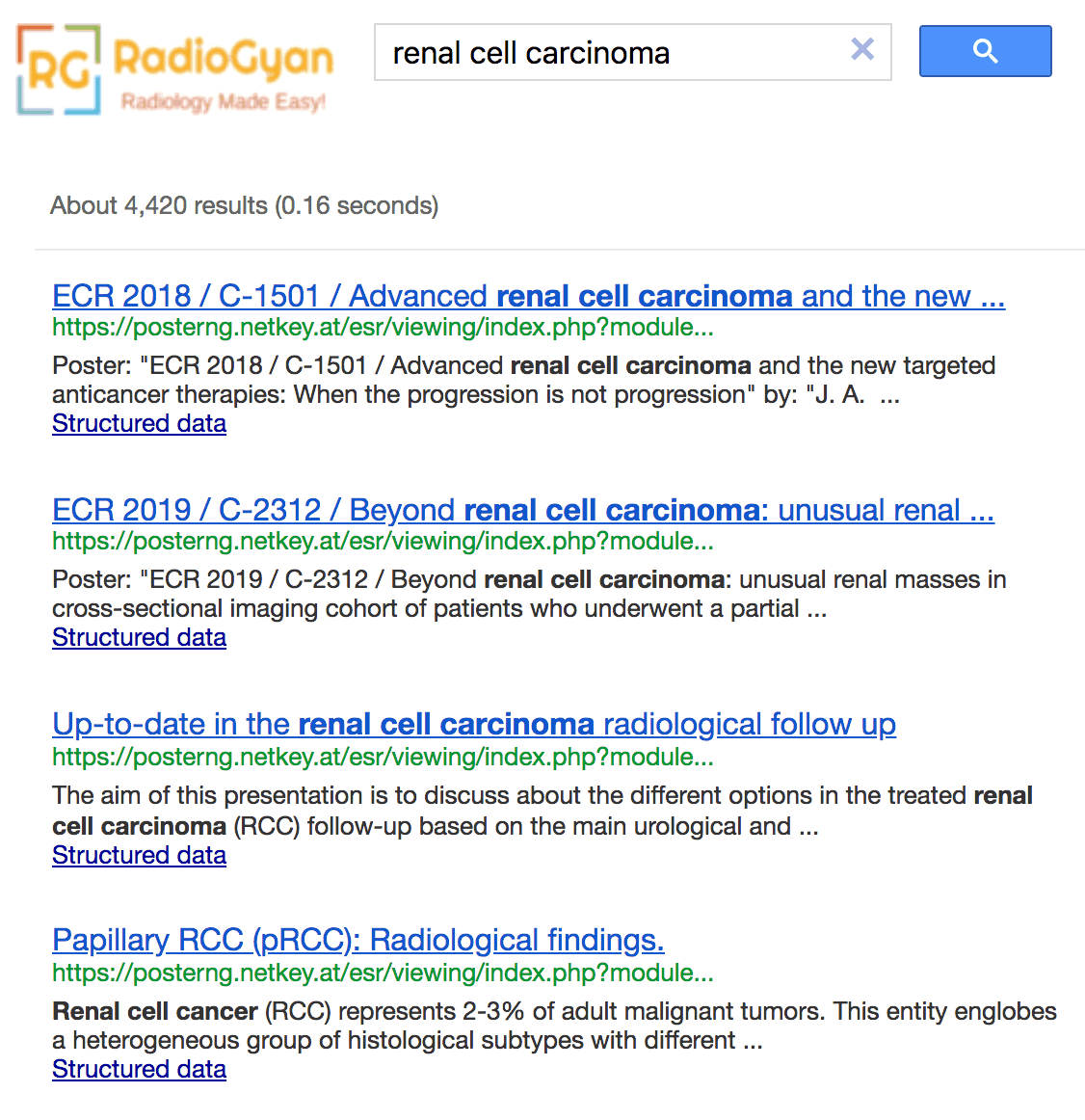
Free Resources for Preparing Radiology Thesis
- Radiology thesis topics- Benha University – Free to download thesis
- Radiology thesis topics – Faculty of Medical Science Delhi
- Radiology thesis topics – IPGMER
- Fetal Radiology thesis Protocols
- Radiology thesis and dissertation topics
- Radiographics
Proofreading Your Thesis:
Make sure you use Grammarly to correct your spelling , grammar , and plagiarism for your thesis. Grammarly has affordable paid subscriptions, windows/macOS apps, and FREE browser extensions. It is an excellent tool to avoid inadvertent spelling mistakes in your research projects. It has an extensive built-in vocabulary, but you should make an account and add your own medical glossary to it.

Guidelines for Writing a Radiology Thesis:
These are general guidelines and not about radiology specifically. You can share these with colleagues from other departments as well. Special thanks to Dr. Sanjay Yadav sir for these. This section is best seen on a desktop. Here are a couple of handy presentations to start writing a thesis:
Read the general guidelines for writing a thesis (the page will take some time to load- more than 70 pages!
A format for thesis protocol with a sample patient information sheet, sample patient consent form, sample application letter for thesis, and sample certificate.
Resources and References:
- Guidelines for thesis writing.
- Format for thesis protocol
- Thesis protocol writing guidelines DNB
- Informed consent form for Research studies from AIIMS
- Radiology Informed consent forms in local Indian languages.
- Sample Informed Consent form for Research in Hindi
- Guide to write a thesis by Dr. P R Sharma
- Guidelines for thesis writing by Dr. Pulin Gupta.
- Preparing MD/DNB thesis by A Indrayan
- Another good thesis reference protocol
Hopefully, this post will make the tedious task of writing a Radiology thesis a little bit easier for you. Best of luck with writing your thesis and your residency too!
More guides for residents :
- Guide for the MD/DMRD/DNB radiology exam!
Guide for First-Year Radiology Residents
- FRCR Exam: THE Most Comprehensive Guide (2022)!
- Radiology Practical Exams Questions compilation for MD/DNB/DMRD !
- Radiology Exam Resources (Oral Recalls, Instruments, etc )!
- Tips and Tricks for DNB/MD Radiology Practical Exam
- FRCR 2B exam- Tips and Tricks !
- FRCR exam preparation – An alternative take!
- Why did I take up Radiology?
- Radiology Conferences – A comprehensive guide!
- ECR (European Congress Of Radiology)
European Diploma in Radiology (EDiR) – The Complete Guide!
- Radiology NEET PG guide – How to select THE best college for post-graduation in Radiology (includes personal insights)!
- Interventional Radiology – All Your Questions Answered!
- What It Means To Be A Radiologist: A Guide For Medical Students!
- Radiology Mentors for Medical Students (Post NEET-PG)
- MD vs DNB Radiology: Which Path is Right for Your Career?
- DNB Radiology OSCE – Tips and Tricks
More radiology resources here: Radiology resources This page will be updated regularly. Kindly leave your feedback in the comments or send us a message here . Also, you can comment below regarding your department’s thesis topics.
Note: All topics have been compiled from available online resources. If anyone has an issue with any radiology thesis topics displayed here, you can message us here , and we can delete them. These are only sample guidelines. Thesis guidelines differ from institution to institution.
Image source: Thesis complete! (2018). Flickr. Retrieved 12 August 2018, from https://www.flickr.com/photos/cowlet/354911838 by Victoria Catterson
About The Author
Dr. amar udare, md, related posts ↓.
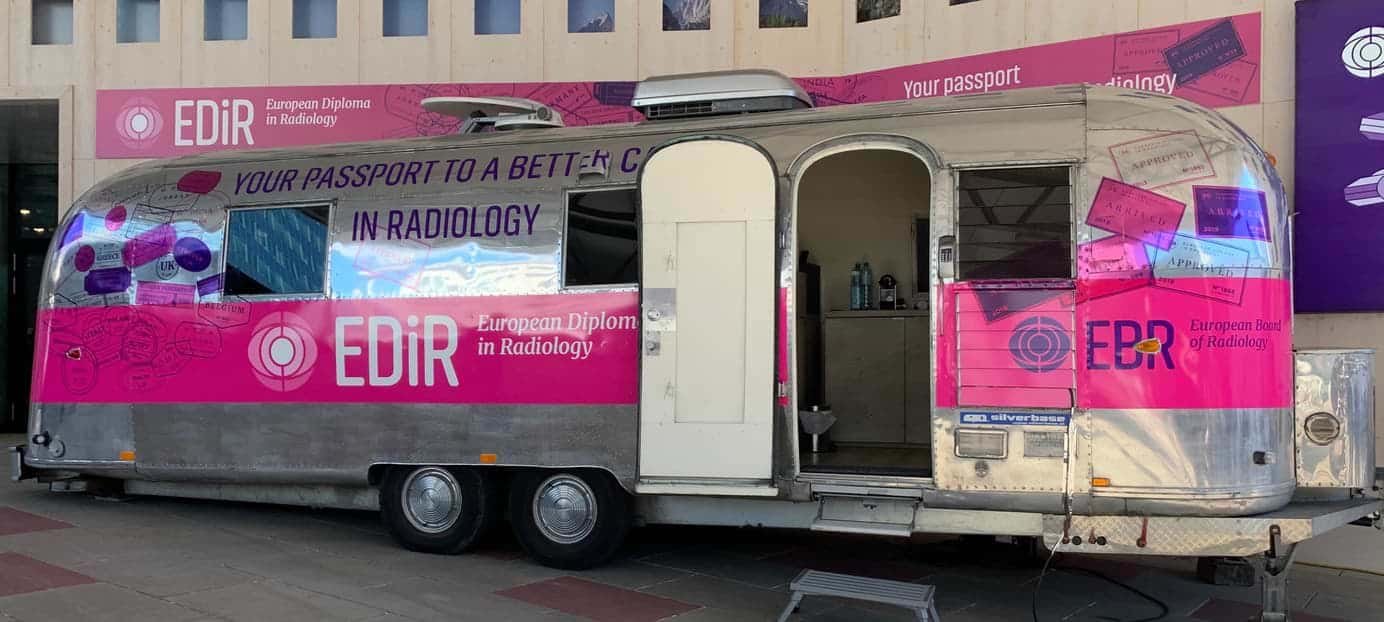
7 thoughts on “Radiology Thesis – More than 400 Research Topics (2022)!”
Amazing & The most helpful site for Radiology residents…
Thank you for your kind comments 🙂
Dr. I saw your Tips is very amazing and referable. But Dr. Can you help me with the thesis of Evaluation of Diagnostic accuracy of X-ray radiograph in knee joint lesion.
Wow! These are excellent stuff. You are indeed a teacher. God bless
Glad you liked these!
happy to see this
Glad I could help :).
Leave a Comment Cancel Reply
Your email address will not be published. Required fields are marked *
Get Radiology Updates to Your Inbox!
This site is for use by medical professionals. To continue, you must accept our use of cookies and the site's Terms of Use. Learn more Accept!
Wish to be a BETTER Radiologist? Join 14000 Radiology Colleagues !
Enter your email address below to access HIGH YIELD radiology content, updates, and resources.
No spam, only VALUE! Unsubscribe anytime with a single click.
Radiology Research Paper Topics

Radiology research paper topics encompass a wide range of fascinating areas within the field of medical imaging. This page aims to provide students studying health sciences with a comprehensive collection of radiology research paper topics to inspire and guide their research endeavors. By delving into various categories and exploring ten thought-provoking topics within each, students can gain insights into the diverse research possibilities in radiology. From advancements in imaging technology to the evaluation of diagnostic accuracy and the impact of radiological interventions, these topics offer a glimpse into the exciting world of radiology research. Additionally, expert advice is provided to help students choose the most suitable research topics and navigate the process of writing a research paper in radiology. By leveraging iResearchNet’s writing services, students can further enhance their research papers with professional assistance, ensuring the highest quality and adherence to academic standards. Explore the realm of radiology research paper topics and unleash your potential to contribute to the advancement of medical imaging and patient care.
100 Radiology Research Paper Topics
Radiology encompasses a broad spectrum of imaging techniques used to diagnose diseases, monitor treatment progress, and guide interventions. This comprehensive list of radiology research paper topics serves as a valuable resource for students in the field of health sciences who are seeking inspiration and guidance for their research endeavors. The following ten categories highlight different areas within radiology, each containing ten thought-provoking topics. Exploring these topics will provide students with a deeper understanding of the diverse research possibilities and current trends within the field of radiology.
Academic Writing, Editing, Proofreading, And Problem Solving Services
Get 10% off with 24start discount code.
Diagnostic Imaging Techniques
- Comparative analysis of imaging modalities: CT, MRI, and PET-CT.
- The role of artificial intelligence in radiological image interpretation.
- Advancements in digital mammography for breast cancer screening.
- Emerging techniques in nuclear medicine imaging.
- Image-guided biopsy: Enhancing accuracy and safety.
- Application of radiomics in predicting treatment response.
- Dual-energy CT: Expanding diagnostic capabilities.
- Radiological evaluation of traumatic brain injuries.
- Imaging techniques for evaluating cardiovascular diseases.
- Radiographic evaluation of pulmonary nodules: Challenges and advancements.
Interventional Radiology
- Minimally invasive treatments for liver tumors: Embolization techniques.
- Radiofrequency ablation in the management of renal cell carcinoma.
- Role of interventional radiology in the treatment of peripheral artery disease.
- Transarterial chemoembolization in hepatocellular carcinoma.
- Evaluation of uterine artery embolization for the treatment of fibroids.
- Percutaneous vertebroplasty and kyphoplasty: Efficacy and complications.
- Endovascular repair of abdominal aortic aneurysms: Long-term outcomes.
- Interventional radiology in the management of deep vein thrombosis.
- Transcatheter aortic valve replacement: Imaging considerations.
- Emerging techniques in interventional oncology.
Radiation Safety and Dose Optimization
- Strategies for reducing radiation dose in pediatric imaging.
- Imaging modalities with low radiation exposure: Current advancements.
- Effective use of dose monitoring systems in radiology departments.
- The impact of artificial intelligence on radiation dose optimization.
- Optimization of radiation therapy treatment plans: Balancing efficacy and safety.
- Radioprotective measures for patients and healthcare professionals.
- The role of radiology in addressing radiation-induced risks.
- Evaluating the long-term effects of radiation exposure in diagnostic imaging.
- Radiation dose tracking and reporting: Implementing best practices.
- Patient education and communication regarding radiation risks.
Radiology in Oncology
- Imaging techniques for early detection and staging of lung cancer.
- Quantitative imaging biomarkers for predicting treatment response in solid tumors.
- Radiogenomics: Linking imaging features to genetic profiles in cancer.
- The role of imaging in assessing tumor angiogenesis.
- Radiological evaluation of lymphoma: Challenges and advancements.
- Imaging-guided interventions in the treatment of hepatocellular carcinoma.
- Assessment of tumor heterogeneity using functional imaging techniques.
- Radiomics and machine learning in predicting treatment outcomes in cancer.
- Multimodal imaging in the evaluation of brain tumors.
- Imaging surveillance after cancer treatment: Optimizing follow-up protocols.
Radiology in Musculoskeletal Disorders
- Imaging modalities in the evaluation of sports-related injuries.
- The role of imaging in diagnosing and monitoring rheumatoid arthritis.
- Assessment of bone health using dual-energy X-ray absorptiometry (DXA).
- Imaging techniques for evaluating osteoarthritis progression.
- Imaging-guided interventions in the management of musculoskeletal tumors.
- Role of imaging in diagnosing and managing spinal disorders.
- Evaluation of traumatic injuries using radiography, CT, and MRI.
- Imaging of joint prostheses: Complications and assessment techniques.
- Imaging features and classifications of bone fractures.
- Musculoskeletal ultrasound in the diagnosis of soft tissue injuries.
Neuroradiology
- Advanced neuroimaging techniques for early detection of neurodegenerative diseases.
- Imaging evaluation of acute stroke: Current guidelines and advancements.
- Role of functional MRI in mapping brain functions.
- Imaging of brain tumors: Classification and treatment planning.
- Diffusion tensor imaging in assessing white matter integrity.
- Neuroimaging in the evaluation of multiple sclerosis.
- Imaging techniques for the assessment of epilepsy.
- Radiological evaluation of neurovascular diseases.
- Imaging of cranial nerve disorders: Diagnosis and management.
- Radiological assessment of developmental brain abnormalities.
Pediatric Radiology
- Radiation dose reduction strategies in pediatric imaging.
- Imaging evaluation of congenital heart diseases in children.
- Role of imaging in the diagnosis and management of pediatric oncology.
- Imaging of pediatric gastrointestinal disorders.
- Evaluation of developmental hip dysplasia using ultrasound and radiography.
- Imaging features and management of pediatric musculoskeletal infections.
- Neuroimaging in the assessment of pediatric neurodevelopmental disorders.
- Radiological evaluation of pediatric respiratory conditions.
- Imaging techniques for the evaluation of pediatric abdominal emergencies.
- Imaging-guided interventions in pediatric patients.
Breast Imaging
- Advances in digital mammography for early breast cancer detection.
- The role of tomosynthesis in breast imaging.
- Imaging evaluation of breast implants: Complications and assessment.
- Radiogenomic analysis of breast cancer subtypes.
- Contrast-enhanced mammography: Diagnostic benefits and challenges.
- Emerging techniques in breast MRI for high-risk populations.
- Evaluation of breast density and its implications for cancer risk.
- Role of molecular breast imaging in dense breast tissue evaluation.
- Radiological evaluation of male breast disorders.
- The impact of artificial intelligence on breast cancer screening.
Cardiac Imaging
- Imaging evaluation of coronary artery disease: Current techniques and challenges.
- Role of cardiac CT angiography in the assessment of structural heart diseases.
- Imaging of cardiac tumors: Diagnosis and treatment considerations.
- Advanced imaging techniques for assessing myocardial viability.
- Evaluation of valvular heart diseases using echocardiography and MRI.
- Cardiac magnetic resonance imaging in the evaluation of cardiomyopathies.
- Role of nuclear cardiology in the assessment of cardiac function.
- Imaging evaluation of congenital heart diseases in adults.
- Radiological assessment of cardiac arrhythmias.
- Imaging-guided interventions in structural heart diseases.
Abdominal and Pelvic Imaging
- Evaluation of hepatobiliary diseases using imaging techniques.
- Imaging features and classification of renal masses.
- Radiological assessment of gastrointestinal bleeding.
- Imaging evaluation of pancreatic diseases: Challenges and advancements.
- Evaluation of pelvic floor disorders using MRI and ultrasound.
- Role of imaging in diagnosing and staging gynecological cancers.
- Imaging of abdominal and pelvic trauma: Current guidelines and techniques.
- Radiological evaluation of genitourinary disorders.
- Imaging features of abdominal and pelvic infections.
- Assessment of abdominal and pelvic vascular diseases using imaging techniques.
This comprehensive list of radiology research paper topics highlights the vast range of research possibilities within the field of medical imaging. Each category offers unique insights and avenues for exploration, enabling students to delve into various aspects of radiology. By choosing a topic of interest and relevance, students can contribute to the advancement of medical imaging and patient care. The provided topics serve as a starting point for students to engage in in-depth research and produce high-quality research papers.
Radiology: Exploring the Range of Research Paper Topics
Introduction: Radiology plays a crucial role in modern healthcare, providing valuable insights into the diagnosis, treatment, and monitoring of various medical conditions. As a dynamic and rapidly evolving field, radiology offers a wide range of research opportunities for students in the health sciences. This article aims to explore the diverse spectrum of research paper topics within radiology, shedding light on the current trends, innovations, and challenges in the field.
Radiology in Diagnostic Imaging : Diagnostic imaging is one of the core areas of radiology, encompassing various modalities such as X-ray, computed tomography (CT), magnetic resonance imaging (MRI), ultrasound, and nuclear medicine. Research topics in this domain may include advancements in imaging techniques, comparative analysis of modalities, radiomics, and the integration of artificial intelligence in image interpretation. Students can explore how these technological advancements enhance diagnostic accuracy, improve patient outcomes, and optimize radiation exposure.
Interventional Radiology : Interventional radiology focuses on minimally invasive procedures performed under image guidance. Research topics in this area can cover a wide range of interventions, such as angioplasty, embolization, radiofrequency ablation, and image-guided biopsies. Students can delve into the latest techniques, outcomes, and complications associated with interventional procedures, as well as explore the emerging role of interventional radiology in managing various conditions, including vascular diseases, cancer, and pain management.
Radiation Safety and Dose Optimization : Radiation safety is a critical aspect of radiology practice. Research in this field aims to minimize radiation exposure to patients and healthcare professionals while maintaining optimal diagnostic image quality. Topics may include strategies for reducing radiation dose in pediatric imaging, dose monitoring systems, the impact of artificial intelligence on radiation dose optimization, and radioprotective measures. Students can investigate how to strike a balance between effective imaging and patient safety, exploring advancements in dose reduction techniques and the implementation of best practices.
Radiology in Oncology : Radiology plays a vital role in the diagnosis, staging, and treatment response assessment in cancer patients. Research topics in this area can encompass the use of imaging techniques for early detection, tumor characterization, response prediction, and treatment planning. Students can explore the integration of radiomics, machine learning, and molecular imaging in oncology research, as well as advancements in functional imaging and image-guided interventions.
Radiology in Neuroimaging : Neuroimaging is a specialized field within radiology that focuses on imaging the brain and central nervous system. Research topics in neuroimaging can cover areas such as stroke imaging, neurodegenerative diseases, brain tumors, neurovascular disorders, and functional imaging for mapping brain functions. Students can explore the latest imaging techniques, image analysis tools, and their clinical applications in understanding and diagnosing various neurological conditions.
Radiology in Musculoskeletal Imaging : Musculoskeletal imaging involves the evaluation of bone, joint, and soft tissue disorders. Research topics in this area can encompass imaging techniques for sports-related injuries, arthritis, musculoskeletal tumors, spinal disorders, and trauma. Students can explore the role of advanced imaging modalities such as MRI and ultrasound in diagnosing and managing musculoskeletal conditions, as well as the use of imaging-guided interventions for treatment.
Pediatric Radiology : Pediatric radiology focuses on imaging children, who have unique anatomical and physiological considerations. Research topics in this field may include radiation dose reduction strategies in pediatric imaging, imaging evaluation of congenital anomalies, pediatric oncology imaging, and imaging assessment of developmental disorders. Students can explore how to tailor imaging protocols for children, minimize radiation exposure, and improve diagnostic accuracy in pediatric patients.
Breast Imaging : Breast imaging is essential for the early detection and diagnosis of breast cancer. Research topics in this area can cover advancements in mammography, tomosynthesis, breast MRI, and molecular imaging. Students can explore topics related to breast density, imaging-guided biopsies, breast cancer screening, and the impact of artificial intelligence in breast imaging. Additionally, they can investigate the use of imaging techniques for evaluating breast implants and assessing high-risk populations.
Cardiac Imaging : Cardiac imaging focuses on the evaluation of heart structure and function. Research topics in this field may include imaging techniques for coronary artery disease, valvular heart diseases, cardiomyopathies, and cardiac tumors. Students can explore the role of cardiac CT, MRI, nuclear cardiology, and echocardiography in diagnosing and managing various cardiac conditions. Additionally, they can investigate the use of imaging in guiding interventional procedures and assessing treatment outcomes.
Abdominal and Pelvic Imaging : Abdominal and pelvic imaging involves the evaluation of organs and structures within the abdominal and pelvic cavities. Research topics in this area can encompass imaging of the liver, kidneys, gastrointestinal tract, pancreas, genitourinary system, and pelvic floor. Students can explore topics related to imaging techniques, evaluation of specific diseases or conditions, and the role of imaging in guiding interventions. Additionally, they can investigate emerging modalities such as elastography and diffusion-weighted imaging in abdominal and pelvic imaging.
Radiology offers a vast array of research opportunities for students in the field of health sciences. The topics discussed in this article provide a glimpse into the breadth and depth of research possibilities within radiology. By exploring these research areas, students can contribute to advancements in diagnostic accuracy, treatment planning, and patient care. With the rapid evolution of imaging technologies and the integration of artificial intelligence, the future of radiology research holds immense potential for improving healthcare outcomes.
Choosing Radiology Research Paper Topics
Introduction: Selecting a research topic is a crucial step in the journey of writing a radiology research paper. It determines the focus of your study and influences the impact your research can have in the field. To help you make an informed choice, we have compiled expert advice on selecting radiology research paper topics. By following these tips, you can identify a relevant and engaging research topic that aligns with your interests and contributes to the advancement of radiology knowledge.
- Identify Your Interests : Start by reflecting on your own interests within the field of radiology. Consider which subspecialties or areas of radiology intrigue you the most. Are you interested in diagnostic imaging, interventional radiology, radiation safety, oncology imaging, or any other specific area? Identifying your interests will guide you in selecting a topic that excites you and keeps you motivated throughout the research process.
- Stay Updated on Current Trends : Keep yourself updated on the latest advancements, breakthroughs, and emerging trends in radiology. Read scientific journals, attend conferences, and engage in discussions with experts in the field. By staying informed, you can identify gaps in knowledge or areas that require further investigation, providing you with potential research topics that are timely and relevant.
- Consult with Faculty or Mentors : Seek guidance from your faculty members or mentors who are experienced in the field of radiology. They can provide valuable insights into potential research areas, ongoing projects, and research gaps. Discuss your research interests with them and ask for their suggestions and recommendations. Their expertise and guidance can help you narrow down your research topic and refine your research question.
- Conduct a Literature Review : Conducting a thorough literature review is an essential step in choosing a research topic. It allows you to familiarize yourself with the existing body of knowledge, identify research gaps, and build a strong foundation for your study. Analyze recent research papers, systematic reviews, and meta-analyses related to radiology to identify areas that need further investigation or where controversies exist.
- Brainstorm Research Questions : Once you have gained an understanding of the current state of research in radiology, brainstorm potential research questions. Consider the gaps or controversies you identified during your literature review. Develop research questions that address these gaps and contribute to the existing knowledge. Ensure that your research questions are clear, focused, and answerable within the scope of your study.
- Consider the Practicality and Feasibility : When selecting a research topic, consider the practicality and feasibility of conducting the study. Evaluate the availability of resources, access to data, research facilities, and ethical considerations. Assess the time frame and potential constraints that may impact your research. Choosing a topic that is feasible within your given resources and time frame will ensure a successful and manageable research experience.
- Collaborate with Peers : Consider collaborating with your peers or forming a research group to enhance your research experience. Collaborative research allows for a sharing of ideas, resources, and expertise, fostering a supportive environment. By working together, you can explore more complex research topics, conduct multicenter studies, and generate more impactful findings.
- Seek Multidisciplinary Perspectives : Radiology intersects with various other medical disciplines. Consider exploring interdisciplinary research topics that integrate radiology with fields such as oncology, cardiology, neurology, or orthopedics. By incorporating multidisciplinary perspectives, you can address complex healthcare challenges and contribute to a broader understanding of patient care.
- Choose a Topic with Clinical Relevance : Select a research topic that has direct clinical relevance. Focus on topics that can potentially influence patient outcomes, improve diagnostic accuracy, optimize treatment strategies, or enhance patient safety. By choosing a clinically relevant topic, you can contribute to the advancement of radiology practice and have a positive impact on patient care.
- Seek Ethical Considerations : Ensure that your research topic adheres to ethical considerations in radiology research. Patient privacy, confidentiality, and informed consent should be prioritized when conducting studies involving human subjects. Familiarize yourself with the ethical guidelines and regulations specific to radiology research and ensure that your study design and data collection methods are in line with these principles.
Choosing a radiology research paper topic requires careful consideration and alignment with your interests, expertise, and the current trends in the field. By following the expert advice provided in this section, you can select a research topic that is engaging, relevant, and contributes to the advancement of radiology knowledge. Remember to consult with mentors, conduct a thorough literature review, and consider practicality and feasibility. With a well-chosen research topic, you can embark on an exciting journey of exploration, innovation, and contribution to the field of radiology.
How to Write a Radiology Research Paper
Introduction: Writing a radiology research paper requires a systematic approach and attention to detail. It is essential to effectively communicate your research findings, methodology, and conclusions to contribute to the body of knowledge in the field. In this section, we will provide you with valuable tips on how to write a successful radiology research paper. By following these guidelines, you can ensure that your paper is well-structured, informative, and impactful.
- Define the Research Question : Start by clearly defining your research question or objective. It serves as the foundation of your research paper and guides your entire study. Ensure that your research question is specific, focused, and relevant to the field of radiology. Clearly articulate the purpose of your study and its potential implications.
- Conduct a Thorough Literature Review : Before diving into writing, conduct a comprehensive literature review to familiarize yourself with the existing body of knowledge in your research area. Identify key studies, seminal papers, and relevant research articles that will support your research. Analyze and synthesize the literature to identify gaps, controversies, or areas for further investigation.
- Develop a Well-Structured Outline : Create a clear and well-structured outline for your research paper. An outline serves as a roadmap and helps you organize your thoughts, arguments, and evidence. Divide your paper into logical sections such as introduction, literature review, methodology, results, discussion, and conclusion. Ensure a logical flow of ideas and information throughout the paper.
- Write an Engaging Introduction : The introduction is the opening section of your research paper and should capture the reader’s attention. Start with a compelling hook that introduces the importance of the research topic. Provide background information, context, and the rationale for your study. Clearly state the research question or objective and outline the structure of your paper.
- Conduct Rigorous Methodology : Describe your research methodology in detail, ensuring transparency and reproducibility. Explain your study design, data collection methods, sample size, inclusion/exclusion criteria, and statistical analyses. Clearly outline the steps you took to ensure scientific rigor and address potential biases. Include any ethical considerations and institutional review board approvals, if applicable.
- Present Clear and Concise Results : Present your research findings in a clear, concise, and organized manner. Use tables, figures, and charts to visually represent your data. Provide accurate and relevant statistical analyses to support your results. Explain the significance and implications of your findings and their alignment with your research question.
- Analyze and Interpret Results : In the discussion section, analyze and interpret your research results in the context of existing literature. Compare and contrast your findings with previous studies, highlighting similarities, differences, and potential explanations. Discuss any limitations or challenges encountered during the study and propose areas for future research.
- Ensure Clear and Coherent Writing : Maintain clarity, coherence, and precision in your writing. Use concise and straightforward language to convey your ideas effectively. Avoid jargon or excessive technical terms that may hinder understanding. Clearly define any acronyms or abbreviations used in your paper. Ensure that each paragraph has a clear topic sentence and flows smoothly into the next.
- Citations and References : Properly cite all the sources used in your research paper. Follow the citation style recommended by your institution or the journal you intend to submit to (e.g., APA, MLA, or Chicago). Include in-text citations for direct quotes, paraphrased information, or any borrowed ideas. Create a comprehensive reference list at the end of your paper, following the formatting guidelines.
- Revise and Edit : Take the time to revise and edit your research paper before final submission. Review the content, structure, and organization of your paper. Check for grammatical errors, spelling mistakes, and typos. Ensure that your paper adheres to the specified word count and formatting guidelines. Seek feedback from colleagues or mentors to gain valuable insights and suggestions for improvement.
Conclusion: Writing a radiology research paper requires careful planning, attention to detail, and effective communication. By following the tips provided in this section, you can write a well-structured and impactful research paper in the field of radiology. Define a clear research question, conduct a thorough literature review, develop a strong outline, and present your findings with clarity. Remember to adhere to proper citation guidelines and revise your paper before submission. With these guidelines in mind, you can contribute to the advancement of radiology knowledge and make a meaningful impact in the field.
iResearchNet’s Writing Services
Introduction: At iResearchNet, we understand the challenges faced by students in the field of health sciences when it comes to writing research papers, including those in radiology. Our writing services are designed to provide you with expert assistance and support throughout your research paper journey. With our team of experienced writers, in-depth research capabilities, and commitment to excellence, we offer a range of services that will help you achieve your academic goals and ensure the success of your radiology research papers.
- Expert Degree-Holding Writers : Our team consists of expert writers who hold advanced degrees in various fields, including radiology and health sciences. They possess extensive knowledge and expertise in their respective areas, allowing them to deliver high-quality and well-researched papers.
- Custom Written Works : We understand that each research paper is unique, and we tailor our services to meet your specific requirements. Our writers craft custom-written research papers that align with your research objectives, ensuring originality and authenticity in every piece.
- In-Depth Research : Research is at the core of any high-quality paper. Our writers conduct comprehensive and in-depth research to gather relevant literature, scientific articles, and other credible sources to support your research paper. They have access to reputable databases and libraries to ensure that your paper is backed by the latest and most reliable information.
- Custom Formatting : Formatting your research paper according to the specified guidelines can be a challenging task. Our writers are well-versed in various formatting styles, including APA, MLA, Chicago/Turabian, and Harvard. They ensure that your paper adheres to the required formatting standards, including citations, references, and overall document structure.
- Top Quality : We prioritize delivering top-quality research papers that meet the highest academic standards. Our writers pay attention to detail, ensuring accurate information, logical flow, and coherence in your paper. We conduct thorough editing and proofreading to eliminate any errors and improve the overall quality of your work.
- Customized Solutions : We understand that every student has unique research requirements. Our services are tailored to provide customized solutions that address your specific needs. Whether you need assistance with topic selection, literature review, methodology, data analysis, or any other aspect of your research paper, we are here to support you at every step.
- Flexible Pricing : We strive to make our services affordable and accessible to students. Our pricing structure is flexible, allowing you to choose the package that suits your budget and requirements. We offer competitive rates without compromising on the quality of our work.
- Short Deadlines : We recognize the importance of meeting deadlines. Our team is equipped to handle urgent orders with short turnaround times. Whether you have a tight deadline or need assistance in a time-sensitive situation, we can deliver high-quality research papers within as little as three hours.
- Timely Delivery : Punctuality is a priority for us. We understand the significance of submitting your research papers on time. Our writers work diligently to ensure that your paper is delivered within the agreed-upon timeframe, allowing you ample time for review and submission.
- 24/7 Support : We provide round-the-clock support to address any queries or concerns you may have. Our customer support team is available 24/7 to assist you with any questions related to our services, order status, or any other inquiries you may have.
- Absolute Privacy : We prioritize your privacy and confidentiality. Rest assured that all your personal information and research paper details are handled with the utmost discretion. We adhere to strict privacy policies to protect your identity and ensure confidentiality throughout the process.
- Easy Order Tracking : We provide a user-friendly platform that allows you to easily track the progress of your order. You can stay updated on the status of your research paper, communicate with your assigned writer, and receive notifications regarding the completion and delivery of your paper.
- Money Back Guarantee : We are committed to your satisfaction. In the rare event that you are not satisfied with the delivered research paper, we offer a money back guarantee. Our aim is to ensure that you are fully content with the final product and receive the value you expect.
At iResearchNet, we understand the challenges students face when it comes to writing research papers in radiology and other health sciences. Our comprehensive range of writing services is designed to provide you with expert assistance, customized solutions, and top-quality research papers. With our team of experienced writers, in-depth research capabilities, and commitment to excellence, we are dedicated to helping you succeed in your academic endeavors. Place your order with iResearchNet and experience the benefits of our professional writing services for your radiology research papers.
Unlock Your Research Potential with iResearchNet
Are you ready to take your radiology research papers to the next level? Look no further than iResearchNet. Our team of expert writers, in-depth research capabilities, and commitment to excellence make us the perfect partner for your academic success. With our range of comprehensive writing services, you can unlock your research potential and achieve outstanding results in your radiology studies.
Why settle for average when you can have exceptional? Our team of expert degree-holding writers is ready to work with you, providing custom-written research papers that meet your specific requirements. We delve deep into the world of radiology, conducting in-depth research and crafting well-structured papers that showcase your knowledge and expertise.
Don’t let the complexities of choosing a research topic hold you back. Our expert advice on selecting radiology research paper topics will guide you through the process, ensuring that you choose a topic that aligns with your interests and has the potential to make a meaningful contribution to the field of radiology.
It’s time to unleash your potential and achieve academic excellence in your radiology studies. Place your trust in iResearchNet and experience the exceptional quality and support that our writing services offer. Let us be your partner in success as you embark on your journey of writing remarkable radiology research papers.
Take the first step towards elevating your radiology research papers by contacting us today. Our dedicated support team is available 24/7 to assist you with any inquiries and guide you through the ordering process. Don’t settle for mediocrity when you can achieve greatness with iResearchNet. Unlock your research potential and exceed your academic expectations.
ORDER HIGH QUALITY CUSTOM PAPER

Most Popular Topics in Radiology 2023
Taking a look at current trends in radiology research topics.
Research is critical to the future growth of radiology. The specialty has a rich history in innovation and today’s investigators ensure a bright future for radiology by uncovering new discoveries and advancing radiologic research. Innovations in radiology have led to better patient outcomes through improved screening, diagnosis and treatment. The first step to develop a research project is identifying an interesting topic. These are just a few topics that are currently garnering interest in the field.
Medical Imaging AI
AI solutions to work seem to permeate every sector today, including radiology. These applications promise to transform the way radiologists work in the future by triaging images to help manage ever growing workloads. AI tools have the potential to enhance practice efficiency and improve diagnostic accuracy. Research into applications of AI in medical imaging continues to focus on solving specific diagnosis across all subspecialties. Radiologists are also starting to understand how AI might be incorporated into radiology workflows. RSNA leads the way in medical imaging AI research by publishing and funding research, helping radiologists learn practical applications of the technology and developing AI challenges to help create tools and harness the vast amounts of data needed. Learn about RSNA’s available resources and training in medical imaging AI.
Health Care Equity
Disparities in access to health care and screening are important to address and researchers are looking into barriers to screening for various populations and discrepancies in health outcomes across demographics. An important step toward improving care is expanding the diversity of the health care team. Populations historically underserved have been shown to have less trust in the health care system. A provider team that looks more like its patient population helps build trust. More than 50 presentations at RSNA 2022 focused on diversity, equity and inclusion topics, demonstrating the demand for continued research in the area. Find valuable resources and current health equity research here.
Photon Counting Detector CT
One popular topic in clinical radiology research, photon counting detector CT (PCD-CT), is gaining attention for its ability to reduce radiation dose while maintaining or even improving image quality. PCD-CT systems demonstrate several advantages over standard CT , including reduced electronic noise, improved spatial resolution, and lower radiation dose. The technique converts X-rays to electrical signal, facilitating small detector pixel designs, thus increased spatial resolution, without losing dose efficiency. These advances in diagnostic techniques that reduce the required radiation dose show promise for improved patient care.
COVID-19
Interest in the effects of COVID-19, both short- and long-term, continues to be strong. Research into health complications resulting from infection and disparities in access to care is a popular topic. As a growing population is diagnosed with long COVID, interest in the effects of this condition has increased. This was also a hot topic at the RSNA annual meeting with late-breaking research on the topic presented throughout the science sessions and in the Learning Center Theater. Read original research and access tools and guidelines for managing COVID-19 on the RSNA COVID-19 Resources page.
RSNA Advances Radiology Research
Once you have identified an interesting topic to research, RSNA’s Research Development Guide will help you expand on your idea and develop it into a project. The RSNA R&E Foundation funds promising research projects across all radiology subspecialties. In 2022, the Foundation introduced Emerging Issues grants , which are designed to rapidly and effectively address urgent issues that threaten the health and well-being of disparate populations.
The RSNA annual meeting is a great place to showcase your research results. Become a member to enjoy the benefits of presenting at the largest medical imaging conference and to gain access to R&E Foundation grants .
Areas of Research
The Department of Radiology has a robust research enterprise, with our faculty members and trainees taking part in scientific advances in a number of areas. Browse our Areas of Research below to learn more about our current work within each topic.
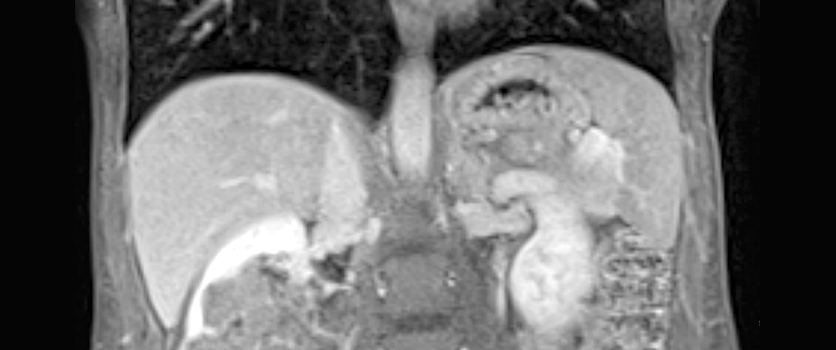
Advanced Body Imaging
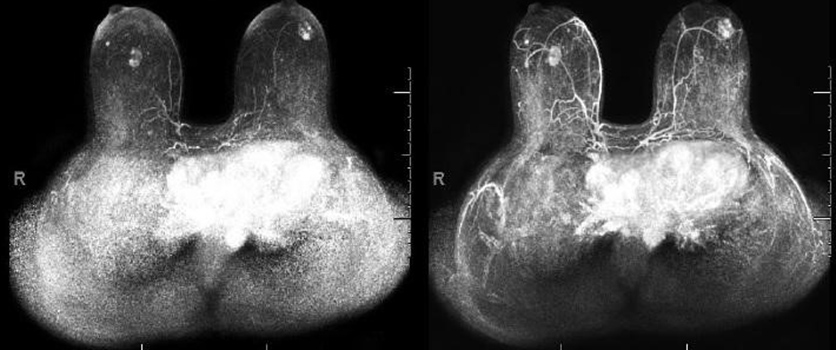
Breast Imaging
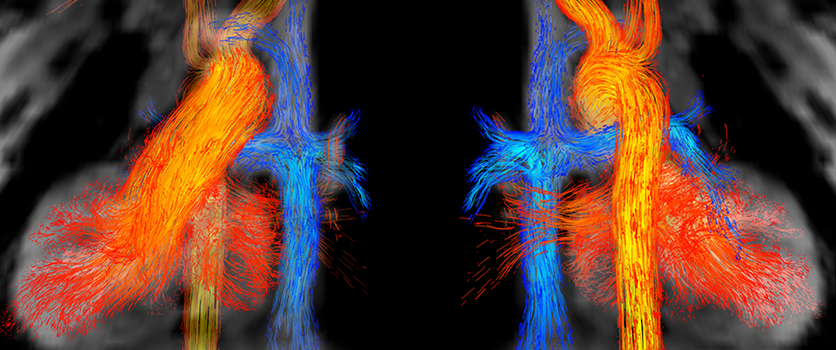
Cardiovascular & Thoracic Imaging
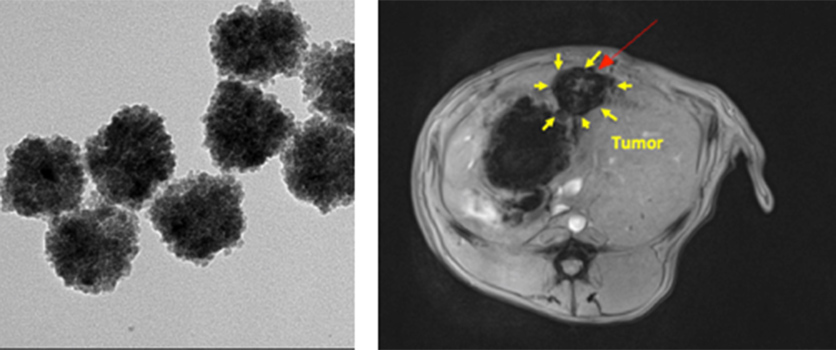
Interventional Radiology & Image-Guided Therapy
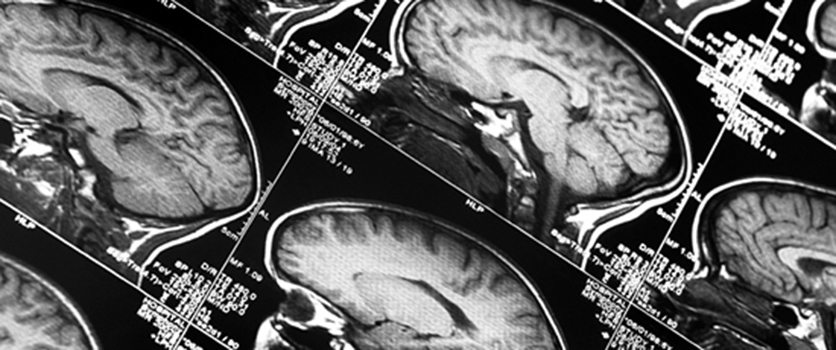
Molecular, Preclinical & Nanomedicine
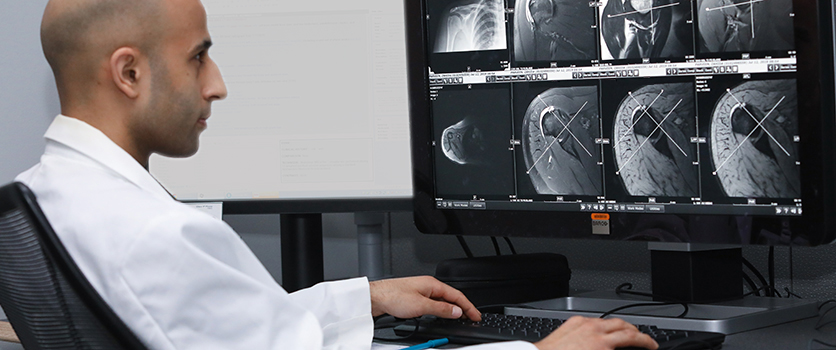
Musculoskeletal Imaging
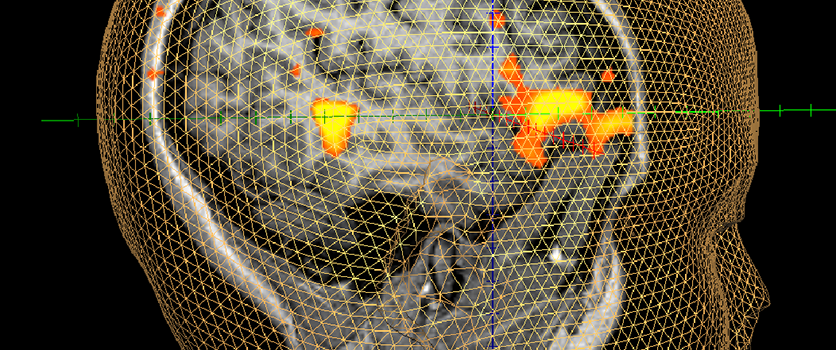
Neuroimaging & Interventions
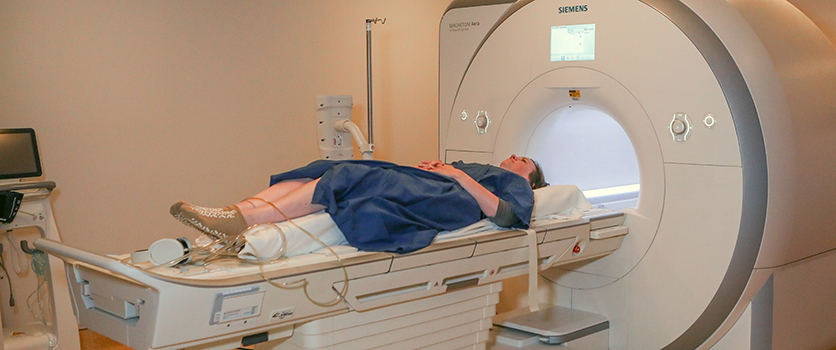
Oncologic Imaging
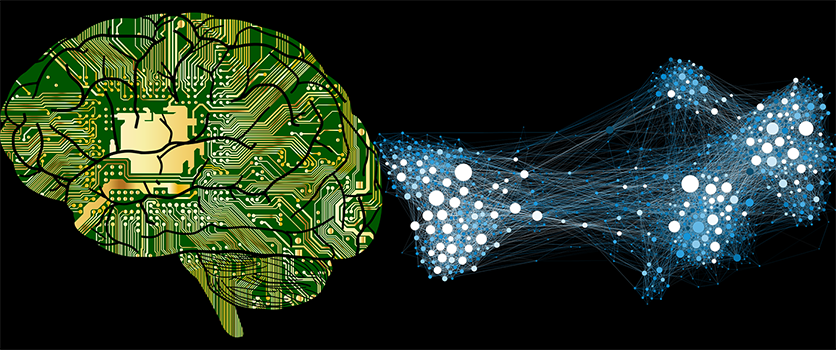
Quantitative Image Analysis & Artificial Intelligence
Research faculty, bradley allen, md, ms.

Chief of Cardiovascular and Thoracic Imaging in the Department of Radiology
Assistant Professor of Radiology (Cardiovascular and Thoracic Imaging)
My research and clinical interests include medical imaging, cardiovascular disease diagnosis and treatment, lung cancer, fluid mechanics, and computer science. As a cardiothoracic radiologist, I am interested in applying advanced imaging techniques, primarily cardiovascular and pulmonary magnetic resonance imaging (MRI), in diseases, cohorts, and clinical scenarios where these techniques have not been previously applied. For further details and images, visit the Northwestern CVMRI Group page.
For more information on my research, please view my Feinberg School of Medicine faculty profile .
Profile, Grants, & Publications
View my profile, grants, & publications on Northwestern Scholars .
Ulas Bagci, PhD
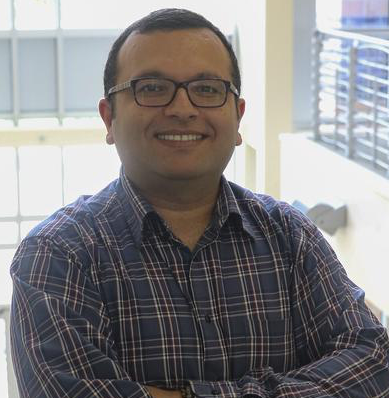
Associate Professor of Radiology (Basic and Translational Radiology Research)
View my profile, grants, & publications on Northwestern Scholars.
Yu Fen Chen, PhD

Research Assistant Professor of Radiology (Basic and Translational Radiology Research)
My research focuses on applications of MR perfusion methods such as arterial spin labeling (ASL) or dynamic susceptibility contrast (DSC) imaging. Some of my projects include using ASL to study brain changes after sports-related concussion, treatment-related recovery in aphasia patients and single dose DSC-DCE.
Donald Robinson Cantrell, MD, PhD

Assistant Professor of Radiology (Neurointerventional Radiology)
For more information on my research, please view my Feinberg School of Medicine faculty profile.
Mohammed Elbaz, PhD

Assistant Professor of Radiology (Basic and Translational Radiology Research)
My expertise intersects between computer science, medical imaging and applied fluid dynamics. I have 12+ years of experience in medical image analysis research and development in both academia and industry. Recently, I have been focusing my research on cardiovascular hemodynamics, where I employ my technical background in medical image analysis, cardiovascular 4D flow MRI and fluid dynamics to develop methods to improve diagnosis and treatment of heart disease using the state-of-the-art 4D Flow MRI technology. In particular,I have developed methods to utilize 4D Flow MRI for advanced visualization and quantification of 3D time-resolved intra-cardiac blood flow patterns and energetics. For further details, visit my lab's website or the Northwestern CVMRI Group page.
Laleh Golestani Rad, PhD

Assistant Professor of McCormick School of Engineering , Physical Therapy and Human Movement Sciences and Radiology (Basic and Translational Radiology Research)
I am an engineer and scientist with expertise in the application of computational electromagnetic techniques for the safety assessment of medical imaging and therapeutic devices. My work currently focuses on application of computational modeling to guide hardware design, safety assessments, and the optimization of imaging protocols for MRI scans in patients with conductive implants.
For more information on my research, please view my McCormick School of Engineering or my Feinberg School of Medicine faculty profiles.
Kelly Jarvis, PhD

Research Assistant Professor of Radiology
Jeesoo Lee, PhD

With a mechanical engineering Ph.D. background, my expertise lies in flow imaging and analysis for experimental fluid dynamics investigation. My key research interest is developing a multimodality quantitative cardiovascular flow assessment technique to understand cardiovascular fluid dynamics better and improve the diagnosis of cardiovascular diseases. My current work focuses on combining 4D flow MRI, echocardiography, and in-vitro flow modeling to understand valvular heart diseases better.
For more information on my research, please view my Feinberg School of Medicine faculty profile .
View my profile, grants, & publications on Northwestern Scholars .
Daniel Kim, PhD

Knight Family Professor of Cardiac Imaging
Professor of Radiology (Basic and Translational Radiology Research) and McCormick School of Engineering
I am the Director of CV Imaging at the Center for Translational Imaging. My research focuses on development of rapid MRI acquisition and reconstruction methods to address unmet needs in cardiovascular medicine. Our lab focuses on breaking new grounds in cardiovascular MRI by developing innovative pulse sequences and reconstruction methods to address unmet clinical needs in cardiovascular medicine. Building upon active collaboration with radiology and cardiology colleagues, our research activities span from imaging technology development to clinical translation in cardiovascular medicine.
Currently, ongoing projects include:
- Role of diffuse LV fibrosis in patients with atrial fibrillation
- Real-time CMR for diagnosing CAD
- Rapid pediatric CMR without requiring contrast agent or anesthesia
- Advanced CMR assessment of left atrial hemodynamic disorders in atrial fibrillation
- Wideband CMR for predicting pre-implant right heart failure in LVAD candidates
- Wideband CMR for imaging patients with ICDs
For details and images, visit the Northwestern CVMRI Group page.
Dong-Hyun Kim, PhD

Associate Professor of Radiology (Basic and Translational Radiology Research)
Image-guided medicine is rapidly growing to improve treatment regimens and advancing medical imaging, including magnetic resonance imaging (MRI), computed tomography (CT), radiography, ultrasound, positron emission tomography (PET), and single photon emission computed tomography (SPECT). A combination of modern nanoplatforms with high performance in imaging and therapeutics may be critical to improve medical outcomes.
One of emerging fields is image-guided therapy using various nanoparticles. Therapies include basic bench, preclinical in vitro/in vivo and clinical researches combining synthesis of multifunctional nanoparticle and tracking/navigation tools to improve accuracy and outcomes of the therapeutics. Most of the emerging interventional technique such as heat-activated targeted drug delivery, image guided ablation (microwave or HIFU), percutaneous injection gene/bacteria therapy, transcatheter treatments for tumor specific local therapy, serial biopsy, thrombolytic therapy, and so on, can be combined with nanotechnology in clinic.
My research engages in careful design/selection/synthesis of multifunctional imaging/therapeutic nanomaterials with therapeutic agents will be critical for the translational optimization these new image guided medicine techniques. The DHKIM Lab for Biomaterials of Image Guided NanoMedicine has focused on developing various therapeutic/imaging carriers for the treatment of various cancers. Micro/Nanoparticles and their hybrid derivatives have been exploited as vectors for drug/therapeutic delivery and molecular imaging agents of MRI, CT, ultrasound and luminescent/fluorescents. We are working closely with clinicians, medical scientists, biologist and imaging professionals to translate new therapeutic approaches using multifunctional carriers and diagnostic imaging technique to the clinical setting.
Lab Manager: Xiaoke Huang
Amber Leaver, PhD

Research Associate Professor of Radiology (Basic and Translational Radiology Research)
The INMRI research group founded by Dr. Leaver at Northwestern conducts precision neuroimaging research to understand and improve electrical neuromodulation therapies. Our studies encompass several topics spanning mental health and depression, chronic idiopathic tinnitus, noninvasive electrical neuromodulation technologies, and best practices in applied connectomics. Details about my projects can be found on the Leaver Lab website .
View my profile, Grants, & publications on Northwestern Scholars .
Kai Lin, MD, MS

I have a broad background in quantitative cardiovascular imaging, with specific training and expertise in coronary artery MRI. My research is focusing of identify subclinical coronary artery disease (CAD) in patients suffering type 2 diabetes mellitus (T2DM). In addition, I am also interested in evaluating regional myocardial changes in patients with various clinical or subclinical cardiovascular diseases. Recently, I am developing research projects for evaluating cardiovascular responses in treating cancers, immunological and neurodegenerative disorders, such as breast cancer, systemic lupus erythematosus (SLE), Alzheimer’s disease (AD) and Parkinson’s disease (PD). For details and images, visit the Northwestern CVMRI Group page.
Michael Markl, PhD

Vice Chair for Research, Department of Radiology
Lester B. and Frances T. Knight Professor of Cardiac Imaging
Professor of Radiology (Basic and Translational Radiology Research) / McCormick School of Engineering
I am currently the Vice Chair of Research for the Department of Radiology. I have established a strong interdisciplinary research consortium. My research has had a major impact on the diagnosis and management of heart disease and stroke including 1) development of novel imaging techniques for the assessment of cardiac structure, function and hemodynamics, and 2) discovery of mechanisms underlying cardiovascular diseases development and cryptogenic stroke (aortic hemodynamics as a mechanism in the development of BAV aortopathy; retrograde embolization from aortic plaques and left atrial flow dynamics in atrial fibrillation as risk factors for stroke). I am internationally recognized as the pioneer of 4D flow MRI and work in this area has advanced the understanding of cardiovascular disease processes as well as enhanced patient care. I have created a highly successful and inseminating training environment in MRI technique development and translational imaging research. For details and images, visit the Northwestern CVMRI Group page .
Todd Parrish, PhD

Professor of Radiology (Basic and Translational Radiology Research) , McCormick School of Engineering and Physical Therapy and Human Movement Sciences
I have a strong expertise in image processing and neuroimaging with a special emphasis on MR based methods. My group and I have been successful in using advanced neuroimaging methods to demonstrate changes in BOLD, diffusion, perfusion, magnetization transfer and structural measures associated with function, memory and learning in the brain as well as movement, sensory, and pain in the spinal cord. I have a long history of methods development and application of neuroimaging methods to pathologic and clinical conditions. My current interests are developing novel methodologies to explore brain physiology to generate new imaging techniques to study the brain. These areas include neurovascular physiology, perfusion/permeability in tissue, multimodal imaging and image analysis, mechanisms of spinal cord structure and function, the use of infrared thermometry for intraoperative functional mapping in awake surgery, and application of machine learning to medical images. I have extensive experience conducting multi-center neuroimaging studies and understand the issues well. For details and images, visit the Parrish Neuroimaging Laboratory .
Daniele Procissi, PhD

Research Professor of Radiology (Basic and Translational Radiology Research)
My research projects focuses on preclinical Molecular Imaging using MRI, PET and CT.
View my Profile, grants, & publications on Northwestern Scholars .
Ann Ragin, PhD

My research projects include Quantitative Magnetic Resonance Imaging strategies for in vivo measurement of the brain to investigate effects of aging and of viruses, particularly HIV infection. Brain network analysis to investigate effects of aging and for early detection of neural injury. Collaborative projects involve applications of 4D flow imaging to investigate alterations in cerebral blood flow and relation to brain status. For details and images, visit the Northwestern CVMRI Group page.
Yury Velichko, PhD
My scientific interests overlap in the areas of biomaterials, anticancer drug development, quantitative imaging and therapeutic response assessment. With a background in molecular physics and informatics, I strive to apply concepts from one field to questions in another. I am also the manager of the Quantitative Imaging Core Laboratory (QICL) at Northwestern University - Feinberg School of Medicine.
Lirong Yan, PhD
Dr. Yan is a tenured Associate Professor of Radiology at Northwestern University Feinberg School of Medicine. Before she joined Northwestern University in 2022, she was a tenure-track Assistant Professor at the University of Southern California. Dr. Yan directs the Laboratory for Neurovascular Imaging Technology and Translation (NITT) at Department of Radiology. The research of her group focuses on developing novel MRI techniques for cerebral vascular and perfusion imaging (e.g., arterial spin labeling). Her research expertise includes MRI pulse sequence development, fast image acquisition and reconstruction, image processing, etc. Over the last decade, Dr. Yan and her team have developed several cutting-edged MRI techniques, including non-contrast enhanced time-resolved rapid 4-dimensional MR angiography, cerebrovascular territory mapping, cerebral arterial compliance and pulsatility, concurrent BOLD/ASL, etc.
Dr. Yan is also interested in translating novel MRI technology into a variety of clinical applications, such as cerebrovascular disease (stroke, intracranial atherosclerosis, arteriovenous malformation, moyamoya disease) and neurodegenerative disease (Alzheimer’s disease, vascular dementia, aging). The mission of Dr. Yan’s research program is to develop non-invasive diagnostic MR imaging tools for cerebrovascular diseases and new imaging biomarkers for neurodegenerative diseases.
Follow Radiology on Facebook Twitter Instagram LinkedIn
- See us on linkedin
- See us on twitter
- See us on instagram
- See us on flickr
- See us on youtube

Throughout its history, the Stanford Department of Radiology has worked continuously to develop the infrastructure necessary to expand interdisciplinary research efforts in anatomic imaging, instrumentation development, molecular imaging, nanotechnology, information sciences, systems biology, and interventional therapeutic advances. Coupling this rich biomedical imaging foundation with an energetic, forward thinking, and creative faculty and staff, we are able to introduce leading-edge imaging solutions and technology to other research communities and into clinical practice.
Our Department is made up of five primary research divisions with each providing specific areas of focus but all collaborating in a highly interdisciplinary environment. These five Divisions (with year established) are:
- Radiological Sciences Laboratory (RSL) (established 1990)
- Molecular Imaging Program at Stanford (MIPS) (established 2003)
- Integrative Biomedical Imaging Informatics at Stanford (IBIIS) (established 2008)
- Canary Center at Stanford for Cancer Early Detection (established 2009)
- Precision Health and Integrated Diagnostics Center at Stanford (PHIND) (established 2017)
Stanford Radiology has been among the top ten NIH-funded radiology departments each year since 2005. Please visit the Academy of Radiology Research for a complete list of NIH funding to radiology departments nationwide.
Our excellent team, including faculty, staff, and trainees, excels at maintaining Stanford Radiology as a strong academic leader with recognized excellence in clinical and basic research. For details of NIH funding, please search NIH RePORTER for Stanford University Radiology.
Research Divisions
- Canary Center
Imaging Support for Non-Funded Research application and website
- Visit ISNFR Site
Research Cores & Centers
3d and quantitative (3dq) imaging.
Through interdisciplinary collaboration, Stanford Radiology's 3DQ Imaging Lab develops and applies innovative techniques for the efficient quantitative analysis and display of medical imaging data used in training, research, and the delivery of patient care.
Biostatistics
Stanford's Health Research and Policy, Division of Biostatistics, is involved in the research activities of every clinical division in the School of Medicine, many basic science departments, as well as national efforts. The Biostatistics Division expects to be an integral part of the growth of biomedical science in the near and long term.
Cell/Molecular Biology
Part of the Canary Center at Stanford for Cancer Early Detection, the Cell/Molecular Biology Core facilitates the development of tools for early diagnosis of cancers. Well equipped, the Core develops and characterizes antibody and ligand-based probes for targeted molecular imaging, thus supporting the development of highly sensitive multifunctional optical, PET and MRI probes for imaging cancers by targeting cancer-specific cellular targets.
One of the basic Research Cores at the Canary Center at Stanford for Cancer Early Detection, the Chemistry Core offers instrumentation capability for synthesis, analysis, and characterization of both small and large biologically significant molecules. The Core's chemists design and develop novel molecular agents for both in vivo and in vitro early detection of cancer. Molecular imaging agents in development include optical, photoacoustic, and multimodality probes, as well as agents for non-imaging strategies such as blood biomarker sensors.
Computational Modeling
Stanford Radiology's Integrative Biomedical Imaging Informatics at Stanford (IBIIS) offers critical computational modeling capabilities. This Core is developing the capability to collect annotated imaging, clinical and molecular data, and integrate them by creating databases that encode the relationships among them. These pioneering methods are improving the diagnostic and treatment planning value of images and leading the way to personalized, less-invasive approaches to early detection and treatment, while also improving our understanding of human biology and disease.
Magnetic Resonance Imaging (MRI)
The Richard M. Lucas Center for Imaging houses facilities for MR imaging at multiple fields and for magnetic resonance spectroscopy (MRS). Stanford Radiology's MR group also maintains and operates a 7T small bore system in the small animal imaging lab (SCI3). Members of the Radiological Sciences Lab (RSL) have pioneered MRI/MRS technology while developing new techniques that benefit patients with stroke, cancer, heart disease, and brain disorders. MRI research conducted at the Lucas Center includes collaborative and original research using human subjects and also intact animal models.
Medical Mixed Reality
The goal of medical mixed reality is to improve patient care by projecting patient data (images, measurements, interventional plans) directly onto the patient's body. This technology enables physicians to look inside the patient to see anatomy, function and disease in its actual location, thereby improving diagnosis, disease assessment, treatment planning and procedure guidance. At IMMERS, we aim to bring together researchers and physicians across Stanford and work with industry partners to envision, enable, and enact solutions to real challenges in healthcare. Furthermore, we work to link numerous AR and virtual reality (VR) groups across campus for efficient collaboration.
The Proteomics Core Facility in the Canary Center at Stanford for Cancer Early Detection is a state-of-the-art mass spectrometry resource dedicated to the discovery and verification of blood-based protein biomarkers. This Core is developing and implementing a high throughput biomarker verification platform that exploits magnetic nanoparticle-facilitated immunoaffinity capture as a prelude to mass spectrometric biomarker quantification.
Radiochemistry and Cyclotron
The Radiochemistry Facility and Cyclotron are located on the first floor of the Lucas Expansion building. The cyclotron produces radioisotopes for both clinical and research use and is surrounded by an FDG production lab and research hot labs. Used for production of research radiopharmaceuticals that support clinical and PET studies at the Stanford University Medical Center and the SCI3, these hot labs also house radiochemistry research for the development of new radiopharmaceuticals.
New Clinical Research Radiopharmaceutical Request Questionnaire Form
In-Vivo Imaging
Housed in the Clark Building, the Stanford Center for Innovation in In-Vivo Imaging (SCI3) applies and advances technologies for in-vivo biological assessment and imaging in animal models. The lab's instrumentation supports the development of reagents and approaches that reveal in-vivo changes at the molecular and cellular levels to gain a greater understanding from animal models. The SCI3 lab provides a test bed for evaluating human imaging reagents and strategies building upon the enrichment of data sets, as well as the flexibility and rapid analyses garnered from animal models.
Training Grants
Stanford Cancer Imaging Training (SCIT) Program (NIH/NCI T32 CA 09695) Contact: Sofia Gonzales
Stanford Molecular Imaging Scholars - SMIS (NIH/NCI 2R25CA118681-06) Contact: Sofia Gonzales
Cancer Systems Biology Scholars - CSBS (NIH) Contact: Pornprang Plangsrisakul
Center Grants
The National Center for Advanced Magnetic Resonance Technology at Stanford (CAMRT - P41) PI: Gary Glover, PhD
The Center for Cancer Nanotechnology Excellence and Translation (CCNE-T - U54) PI: Jianghong Rao, PhD
Cancer Center for Systems Biology (CCSB - U54) PI: Sylvia Plevritis, PhD
Thank you for visiting nature.com. You are using a browser version with limited support for CSS. To obtain the best experience, we recommend you use a more up to date browser (or turn off compatibility mode in Internet Explorer). In the meantime, to ensure continued support, we are displaying the site without styles and JavaScript.
- View all journals
Medical imaging articles from across Nature Portfolio
Medical imaging comprises different imaging modalities and processes to image human body for diagnostic and treatment purposes. It is also used to follow the course of a disease already diagnosed and/or treated.
Enhancing diagnostic precision in liver lesion analysis using a deep learning-based system: opportunities and challenges
A recent study reported the development and validation of the Liver Artificial Intelligence Diagnosis System (LiAIDS), a fully automated system that integrates deep learning for the diagnosis of liver lesions on the basis of contrast-enhanced CT scans and clinical information. This tool improved diagnostic precision, surpassed the accuracy of junior radiologists (and equalled that of senior radiologists) and streamlined patient triage. These advances underscore the potential of artificial intelligence to enhance hepatology care, although challenges to widespread clinical implementation remain.
- Jeong Min Lee
- Jae Seok Bae
Related Subjects
- Bone imaging
- Brain imaging
- Magnetic resonance imaging
- Molecular imaging
- Radiography
- Radionuclide imaging
- Three-dimensional imaging
- Ultrasonography
- Whole body imaging
Latest Research and Reviews

Diagnostic decisions of specialist optometrists exposed to ambiguous deep-learning outputs
- Josie Carmichael
- Enrico Costanza
- Konstantinos Balaskas
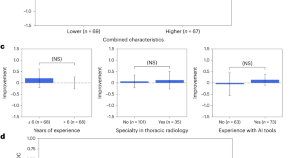
Heterogeneity and predictors of the effects of AI assistance on radiologists
A large-scale study examined the heterogeneous effects of artificial intelligence (AI) assistance on 140 radiologists across 15 chest X-ray diagnostic tasks and found that conventional experience-based factors, such as years of experience, subspecialty and familiarity with AI tools, fail to reliably predict the impact of AI assistance.
- Alex Moehring
- Pranav Rajpurkar

Fully automated landmarking and facial segmentation on 3D photographs
- Freek Bielevelt
- Guido de Jong
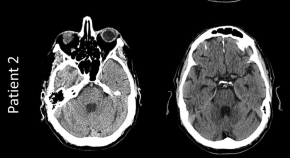
State-of-the-art mobile head CT scanner delivers nearly the same image quality as a conventional stationary CT scanner
- Lukas Goertz
- Yosef Al-Sewaidi
- Christoph Kabbasch

Lesion-conditioning of synthetic MRI-derived subtraction-MIPs of the breast using a latent diffusion model
- Lorenz A. Kapsner
- Lukas Folle
- Sebastian Bickelhaupt
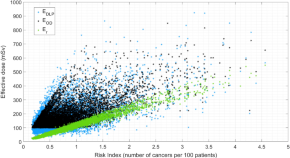
Characterizing imaging radiation risk in a population of 8918 patients with recurrent imaging for a better effective dose
- Francesco Ria
- Madan M. Rehani
- Ehsan Samei
News and Comment
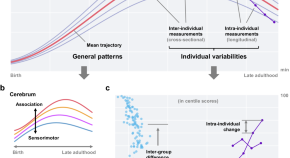
Population imaging cerebellar growth for personalized neuroscience
Growth chart studies of the human cerebellum, which is increasingly recognized as pivotal for cognitive development, are rare. Gaiser and colleagues utilized population-level neuroimaging to unveil cerebellar growth charts from childhood to adolescence, offering insights into brain development.
- Zi-Xuan Zhou
- Xi-Nian Zuo
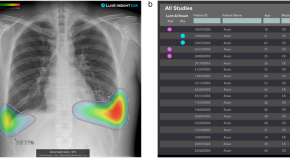
The lucent yet opaque challenge of regulating artificial intelligence in radiology
- James M. Hillis
- Jacob J. Visser
- Katherine P. Andriole
Deep learning models across the range of skin disease
We explore the evolving landscape of diagnostic artificial intelligence (AI) in dermatology, particularly focusing on deep learning models for a wide array of skin diseases beyond skin cancer. We critically analyze the current state of AI in dermatology, its potential in enhancing diagnostic accuracy, and the challenges it faces in terms of bias, applicability, and therapeutic recommendations.
- Kaushik P. Venkatesh
- Marium M. Raza
- Joseph C. Kvedar
Factors identified that predict resolution of subclinical synovitis
New findings provide insight into the natural history of subclinical synovitis, a reported predictor of the development of rheumatoid arthritis, and identify various factors associated with its reversal.
- Jessica McHugh
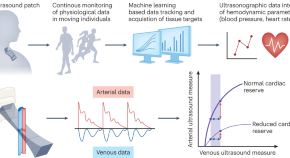
Wearable ultrasound for continuous deep-tissue monitoring
An integrated wearable and wireless ultrasound device enables the continuous monitoring of physiological information from tissues in moving individuals.
- Jon-Emile S. Kenny
Quick links
- Explore articles by subject
- Guide to authors
- Editorial policies

Radiology Research Topics
1. Revolutionizing Medical Imaging with Computed Tomography
Are you a medical imaging specialist looking to take your imaging capabilities to the next level? Look no further than high-precision computed tomography! Computed Tomography (CT) is an industry-leading medical imaging technology that provides clinicians with essential 3D images to diagnose potential illnesses as accurately as possible.
Using powerful x-ray beams and complex algorithms, CT scans create detailed internal images with far better resolution than most other diagnostic modalities, such as MRI or ultrasound. These highly intricate 3D depictions essentially act like a snapshot of the inner workings when scanning – making it easier for healthcare providers to detect problems related to cardiovascular diseases, cancer, trauma, infections, and soft tissue damage.
2. Gastro-Diagnostics: Taking an X-Ray of your Digestive System
This study will help you dive deep into the depths of your digestive system and take a good hard look at what’s happening inside you. The Gastro-Diagnostic system works safely and quickly to order special equipment for an endoscopy or colonoscopy procedure. This minimally invasive process involves only light anesthesia and is used for diagnostic purposes only — it does not establish any form of treatment.
Once complete, a radiologist will evaluate the results directly from the Imaging center via secure transfer to our facility. They are set up with full training and assistance in reading images securely online. The final diagnosis must be based upon a referral by physicians trained in this field of medical science
- Radiation Revolution: An Inside Look at Diagnostic Radiology
Are you curious to learn more about diagnostic radiology? Well, this is your chance! With this study, you’ll get all the necessary information.
Diagnostic radiology is an advanced imaging technology used in hospitals, clinics, and physician’s offices worldwide. It uses specialized equipment to produce cross-section images of body parts and identify problems that cannot be seen by just taking x-rays. These images are then used to diagnose and treat conditions like cancer, heart disease, stroke, neurodegenerative diseases, musculoskeletal ailments, and more!
Opting for diagnostic radiology instead of traditional x-ray procedure allows doctors to detect subtle changes related to or unrelated health issues much earlier. It enables them to plan suitable treatments accordingly. Moreover, this sophisticated imaging tool provides detailed information about bodily organs, often serving as a guide before undertaking minor or major surgeries.
- Magnifying Medical Miracles with MRI Technology
If you want to make medical miracles happen, it all starts with the right technology. Enter MRI technology – a powerful tool that gives doctors and physicians deep insight into human anatomy so they can effectively diagnose diseases and create successful treatment plans.
MRI stands for Magnetic Resonance Imaging, but we think of it as Major Resolution Imagery. Put simply; an MRI machine helps health care professionals locate problems ranging from fractures in bones to defects inside organs or arteries — something no other device on earth can do quite like this one! Plus, its cutting-edge imaging capabilities let them observe minute details without resorting to invasive surgery – true magnifying magic at work!
- Exploring Ultrasonography Medical Imaging
Ultrasonography is a medical imaging technology that creates images of inside organs and structures by using high-frequency sound waves. It is commonly used to assess the health of a fetus during pregnancy and diagnose and monitor conditions such as heart disease, cancer, and kidney stones. Examples include obstetric ultrasound for pregnant women and echocardiography for assessing heart health.
This cutting-edge medical imaging technology has revolutionized how medical professionals view the body’s inner workings. With ultrasonography, you can view organs, tissues, and even unborn babies with unparalleled clarity and detail.
- Role of RADS in Radiology
RADS stands for Radiology Assessment Database System. It is a system used by radiologists to store, manage, and analyze medical imaging data. Examples of popular RADS systems include PACS (Picture Archiving and Communication System) and RIS (Radiology Information System).
RADS also has powerful analytical tools that help you get the most out of your imaging datasets. It enables you to monitor patient outcomes, analyze diagnostic accuracy, and detect trends in image quality across your practice or institution. In addition, RADS includes a variety of reporting tools that let you generate custom reports and track results over time.
- Deciphering Exposure Indicators through Radiology
Exposure Indicators in Radiology are measurements used to determine the amount of radiation exposure a patient has received during a radiological procedure. Examples of popular exposure indicators include the dose-area product (DAP) and the computed tomography dose index (CTDI). The DAP is a measure of the total radiation dose delivered to a patient during an imaging procedure. At the same time, the CTDI is a measure of the radiation dose delivered to a specific region of the body.
These indicators are incredibly accurate and reliable, precisely measuring the radiation dose a patient receives during a radiological procedure. With this information, you can ensure your patients get the required dosage without exceeding it.
- Focal Spot/Area/Zone: Radiology
Do you want to get the most out of your radiology exams? This study will help you a lot!
Focal Spot/Area/Zone is a term used in radiology to refer to the area of the body that is being imaged. It is the area where the X-ray beam is focused and is usually the size of a pinhead. Popular examples include mammograms, which focus on the breast tissue, and CT scans, which focus on the head or chest.
Focal Spot/Area/Zone also provides safety benefits. With its pinpoint accuracy, radiation exposure time is limited and helps limit exposure to x-ray radiation. As a result, fewer images must be taken to get the desired results, reducing the risk to your patients.
- An Exploration of Contrast Medium
A contrast medium is a material that is used to improve the visibility of organs, vessels, and tissues during medical imaging procedures. The procedures include X-ray, computed tomography (CT), magnetic resonance imaging (MRI), and ultrasound. Popular examples of contrast media include barium sulfate for X-rays, gadolinium for MRI, and microbubbles for ultrasound.
Contrast medium helps in aiding quick diagnosis as it improves the accuracy and effectiveness of medical imaging procedures. The contrast medium lets your doctor get a detailed image for a great diagnosis. It also helps in warning about potential danger signs that may not be visible through standard imaging procedures.
Another advantage of using a contrast medium for medical imaging is its safety. It is FDA approved and noted to be safe for human usage.
10. A Clear Look at Mammography
A mammogram is a type of imaging test that uses low-dose X-rays to detect changes in the breast tissue. It is used to screen for and diagnose breast cancer and other conditions, such as cysts or benign tumors. Mammograms can also be used to monitor the progress of treatment for breast cancer.
Mammography involves squeezing the breasts between two plates and capturing an X-ray picture. This compression helps to spread out the breast tissue so that any abnormalities can be more easily seen on the X-ray image. The images are then sent to a radiologist, who will interpret them and report back with their findings.
11. A Guide to Abdominal Radiography
Abdominal radiography is an imaging technique used to view the internal organs and structures of the abdomen. It involves taking X-ray pictures of the abdomen, which can help diagnose various conditions such as gallstones, appendicitis, ulcers, hernias, and tumors. Abdominal radiography is also used to assess the abdominal organs’ health and monitor treatments such as chemotherapy or radiation therapy.
Whether you’re taking precautions or not sure what’s happening inside, abdominal radiography helps you and your doctor gain valuable insights into the health of your abdominal organs and provides an actual window into exactly what treatments — like chemotherapy or radiation therapy — are doing to make you feel better.
12. Marker Types – Nodules, Lesions, and Tumors:
Introducing the most comprehensive marker types – Nodules, Lesions, and Tumors! These markers provide a fast, easy and accurate way to identify different types of tissue changes with medical imaging and biopsy techniques.
Nodules are solid lumps that can form in any part of the body. They can be easily detected through CT, MRI, and ultrasounds. Lesions are an area of abnormal tissue caused by injury or disease. This can range from skin lesions such as moles and warts to brain lesions such as tumours. Finally, tumours are abnormal masses of tissue that can be either benign or malignant. Popular examples include breast cancer tumors and brain tumors
13. Exploring the Anatomy of Structures
Calling all curious learners who are interested in understanding the anatomy of structures! Explore the Skull, Chest Cavity, and Spine to satisfy your need for knowledge.
Learn the ins and outs of the Skeletal System by getting a closer look at these components. Start by delving into the Skull, the bony structure that houses and protects the brain – found in humans, cows, and other mammals. Then shift your focus to understanding the Chest Cavity and how it holds our most vital organs, like the heart and lungs. Finally, please take a look at the Spine, the column of bones that runs from head to toe and helps us stand and move.
- Exploring Necrosis and Its Effects
It is typically termed cell death which happens when cells are injured, infected, or otherwise destroyed. Necrotic tissue can be identified by its discolouration and the presence of an inflammatory response in the surrounding area. It is important to understand necrosis and its effects, as it can lead to serious health complications if not treated properly.
The process of necrosis begins with cellular damage, which may occur due to physical trauma, radiation exposure, extreme temperatures, toxic chemicals, or infectious agents such as bacteria and viruses. When this damage occurs on a cellular level, enzymes are released from lysosomes within the cell, which causes further destruction of the cell’s structure and membrane integrity.
- Understanding Inflammation and Its Impact
Inflammation is the body’s complicated biochemical response to injuries or illness. It is a natural process that aids in the body’s defence against external invaders such as germs and viruses while also mending damaged tissue. Inflammation can manifest itself in a variety of ways, ranging from modest redness and swelling to severe pain and fever.
While inflammation can be beneficial in some cases, it can also lead to chronic health problems if left unchecked. When inflammation becomes prolonged or excessive, it can damage healthy tissues and organs over time. This type of prolonged inflammation is known as chronic inflammation and may contribute to conditions like heart disease, diabetes, arthritis, asthma, and certain cancers.
- Embracing the Unconventional: Understanding Abnormality
In a world where conformity is often expected, it can be challenging to understand and accept those who are considered “abnormal.” But what does it mean to be abnormal? Abnormality is defined as any behavior or condition that deviates from the norm. This could include physical disabilities, mental health issues, social anxieties, religious beliefs and practices, or having different interests than those around you.
When we think of abnormality in society today, there is an inherent stigma associated with it. People may fear the unknown or feel uncomfortable when confronted with something unfamiliar; this can lead them to judge others without understanding why someone might act differently than they do. So don’t assume that just because someone acts differently than you do means they’re wrong or bad!
- Getting a Circular Look at Radial Angiography
Radial angiography is a medical imaging method that allows you to see the blood arteries in your body. It is commonly used to diagnose and treat coronary artery disease, aneurysms, and vascular malformations. Radial angiography utilizes X-ray images from different angles to create a circular view of the studied vessels. This allows doctors to get a better understanding of the anatomy and pathology of the vessels.
The process begins with an injection of contrast material into the patient’s bloodstream. This material helps to highlight any abnormalities or blockages that may be present in the vessels being studied. The patient is then placed in a special X-ray machine called a C-arm, which rotates around them while taking multiple images from different angles
18. Unlocking the Mysteries of a PET scan
Its full form is Positron Emission Tomography Scan. It is a powerful diagnostic tool used to detect and diagnose diseases in the body. It is a type of imaging test that uses a radioactive tracer to create detailed 3D images of the inside of the body. The tracer is injected into the patient’s bloodstream and then travels through the body. As it moves through organs and tissues, it emits signals detected by a special camera. This information is then used to create an image of the body’s internal structures.
PET scans help us diagnosing cancer, heart disease, brain disorders, and other conditions that affect organ function. They can also be used to monitor how well treatments for these conditions are working.
- An Inside Look at Fluoroscopy
Fluoroscopy in medical imaging employs X-rays to provide real-time pictures of the body. It is used to diagnose and treat a variety of conditions, including cancer, heart disease, and gastrointestinal disorders. Fluoroscopy can also be used to guide minimally invasive procedures such as biopsies and catheterizations.
During a fluoroscopy procedure, the patient lies on an examination table while an X-ray machine passes radiation through the body. A detector plate detects the radiation and displays a picture on a monitor in real time. This allows the doctor to observe the movement of organs or other structures within the body
- “The Not-so-Narrow Tunnel of Stenosis”
The study provides an in-depth look at the stenosis. Stenosis is a medical condition that occurs when a passageway or opening in the body narrows, such as the spinal canal or an artery. This narrowing can cause pressure on nerves and other structures, leading to pain and other symptoms. Many conditions, including age-related wear and tear of the spine, trauma, tumours, infection, and congenital abnormalities, can cause stenosis.
The most common type of stenosis is lumbar spinal stenosis (LSS). LSS occurs when the spinal canal narrows in the lower back area due to degenerative changes in the spine. This narrowing can pressure the nerves that travel through this area of the spine, causing pain and other symptoms.
- A Cross-Sectional Guide to Imaging Speak
Cross-sectional imaging creates a three-dimensional (3D) representation of the body by combining several images obtained from different angles. It diagnoses and monitors diseases, injuries, and other conditions. Cross-sectional imaging can be used to detect tumours, cysts, fractures, and other abnormalities in the body.
When performing cross-sectional imaging, doctors will often use contrast agents such as barium or iodine to help enhance the visibility of certain areas on the scan. Contrast agents are injected into the patient’s bloodstream before scanning so they can be seen more clearly on the scan.
- Bone Densitometry Classification System
Bone densitometry is a medical imaging technique used to measure the density of bones to diagnose and monitor bone diseases. The World Health Organization (WHO) Bone Densitometry Classification System is commonly used for classifying bone density. This approach was created in 1994 and has subsequently been recognized as the gold standard for measuring bone health by several nations.
The WHO Bone Densitometry Classification System uses a four-level scale to classify bone density. The first level, normal, indicates no signs of osteoporosis or other bone diseases. The second level, low-normal, suggests that there may be some signs of osteoporosis but not enough to warrant treatment. The third level, osteopenia, indicates an increased risk of developing osteoporosis and should be monitored closely. Finally, the fourth level, osteoporosis, indicates an advanced stage of bone loss and requires immediate treatment.
23. Unraveling the Mysteries of Computed Radiography
Computed radiography (CR) is a digital imaging technique that captures and stores X-ray images. It is an alternative to traditional film-based radiography, which uses photographic film to capture the image. CR technology has revolutionized the field of medical imaging, providing faster, more accurate results than ever before.
CR works by using a special phosphor plate that is exposed to X-rays. The plate absorbs the X-rays and stores them as an electrical charge. This charge is then scanned and turned into digital data, which may be displayed on a computer monitor or printed for further examination.
- Unlocking the Potential of Intraoperative Radiography
Intraoperative radiography (IORT) is a relatively new imaging technique that has the ability to alter how surgeons approach their profession. This technology allows for real-time imaging during surgery, providing surgeons with unprecedented accuracy and precision. IORT can be used to detect small tumours or other abnormalities that may not be visible to the naked eye, allowing for more precise surgical interventions.
The use of IORT in surgery has been steadily increasing over the past few years as its advantages have become more widely known. It is particularly useful in orthopedic surgeries, where it can help guide the placement of screws and other implants.
- Reimagining Radiography: The Power of Virtual Radiography
Virtual radiography (VR) uses computer-generated images to create detailed 3D models of the body. This allows doctors to quickly and accurately assess a patient’s condition without performing an invasive procedure or taking multiple X-rays. VR also eliminates the need for costly equipment, such as X-ray machines, which can be expensive to maintain and operate.
The use of virtual radiography has already been shown to improve accuracy and reduce costs in many areas of healthcare. For example, it has been used successfully in orthopedic surgery, where it can provide detailed images of bones and joints that are difficult to capture with traditional X-rays. It has also been used in cardiology, which can help identify blockages in arteries without requiring an invasive procedure.
- A Scintillating Look at Scintigraphy
Scintigraphy is a type of imaging technique used to diagnose and monitor various medical conditions. It involves using a radioactive tracer, injected into the body and then detected by a special camera. The camera produces images that can be used to identify areas of abnormal activity in the body, such as tumours or infections.
Scintigraphy has been used for decades to diagnose and monitor diseases such as cancer, heart disease, kidney disease, and thyroid disorders. It can also be used to detect bone fractures or other injuries. In addition, scintigraphy can be used to evaluate organ function and detect abnormalities in blood flow.
- The Science behind Doppler Flow Studies
Doppler flow studies are a type of medical imaging technique used to measure the speed and direction of blood flow in the body. This type of study is based on the Doppler Effect, which is an acoustic phenomenon that occurs when sound waves are reflected off moving objects. The Doppler Effect causes a change in the frequency of the sound waves, which can be detected by specialized equipment.
In medical imaging, Doppler flow studies use ultrasound technology to detect changes in blood flow. Ultrasound waves are sent into the body and bounce off red blood cells as they move through vessels. A transducer then picks up the reflected sound waves and converts them into electrical signals that a computer can analyse.
- Examining the Impact of Nuclear Medicine Studies
Nuclear medicine studies are a sort of medical imaging that employs small quantities of radioactive material to diagnose and cure disorders. Nuclear medicine studies can provide valuable information about the functioning of the body’s organs, bones, and other tissues. They are used to detect cancer, heart disease, kidney disease, and other conditions.
The use of nuclear medicine studies has increased significantly over the past few decades due to technological advances and an increased understanding of their potential benefits. However, there is still some debate about whether they should be used more widely.
- Take a Peek inside Apnea Imaging: A Visual Journey
Apnea imaging is a type of medical imaging that uses specialized techniques to visualize the airways and lungs. It is used to diagnose and monitor obstructive sleep apnea (OSA), a condition in which a person’s breathing stops and starts during sleep. Apnea imaging can be performed using X-rays, computed tomography (CT) scans, magnetic resonance imaging (MRI), or ultrasound.
X-Rays: X-rays are the most commonly used form of apnea imaging. They provide detailed images of the chest and lungs, allowing doctors to identify any blockages or abnormalities in the airway. X-rays are quick and easy to perform, but they provide less detail than other forms of apnea imaging.
- Anatomical Orientation: Coronal, Sagittal, Transverse
Anatomical orientation is a term used to describe the three-dimensional orientation of body structures, organs, and tissues. Medical professionals need to understand anatomical orientation to diagnose and treat patients accurately. The three main orientations are coronal, sagittal, and transverse.
The coronal orientation is referred to as a plane that divides the body into anterior (front) and posterior (back) parts. This plane runs from side to side, perpendicular to the body’s long axis. In this orientation, structures are viewed as if looking at them from the front or back.
Sagittal orientation describes a plane that divides the body into left and right halves. This plane runs from head to toe along the body’s long axis. In this orientation, structures are viewed as if looking at them from the side.
Transverse orientation describes a plane that divides the body into upper and lower sections. This plane runs across the body’s width, perpendicular to both coronal and sagittal planes. In this orientation, structures are viewed as if looking at them from above or below.
- Seeing Through the Mysteries of Radiopaque Materials
Radiopaque materials are substances that can be seen on X-ray imaging. These materials are used in a variety of medical and industrial applications, from diagnosing medical conditions to inspecting the integrity of pipelines. Radiopaque materials have unique properties that make them invaluable for these purposes, but what exactly makes them so special?
At its most basic level, radiopacity is the ability of a material to absorb X-rays and appear opaque on an X-ray image. The atomic structure of the material determines this property; some elements are naturally more radiopaque than others. For example, iodine is one of the most radiopaque elements, while carbon is relatively transparent to X-rays.
The most common type of radiopaque material used in medical imaging is barium sulfate. Barium sulfate has a high atomic number and therefore absorbs X-rays very well.
- Exploring Paracentric Radiation Therapy
Paracentric radiation therapy is a type of external beam radiation therapy used to treat cancer. It is a specialized form of radiotherapy that uses multiple beams of radiation from different angles to target the tumour while sparing surrounding healthy tissue. This technique has been used for many years in treating various types of cancer, including prostate, breast, lung, and head and neck cancers.
The paracentric approach utilizes several beams of radiation focused on the tumour from different angles. This allows for more precise tumour targeting while minimizing damage to nearby healthy tissue. The beams can be directed to varying depths within the body, allowing for more effective treatment of tumours located deep within the body.
- Achieving Optimal Clarity with Isotropic Resolution
Isotropic resolution refers to the ability of an imaging system to capture images with equal resolution in all directions. This means that the image will have the same level of detail regardless of the orientation or angle from which it is viewed.
The most common way to achieve isotropic resolution is through the use of multiple cameras, each capturing a different angle of view. By combining these images, a single image can be created that has equal detail in all directions. This technique is often used in medical imaging, allowing doctors tto understand better what they are looking at and make more accurate diagnoses.
- Taking a Closer Look at the Future of Tomosynthesis Scanning
Tomosynthesis scanning is a revolutionary imaging technique that has the potential to revolutionize medical diagnosis. This technology uses X-ray beams to create three-dimensional images of the body, allowing doctors to see more detail than ever before. Tomosynthesis scanning has already been used in mammography and is now being explored for use in other areas of medicine, such as orthopedics and cardiology.
Tomosynthesis scanning can also be used to detect diseases or conditions that may not appear on traditional X-rays. For example, tomosynthesis scans can detect small lesions or calcifications that may indicate breast cancer before they become visible on standard mammograms.
- Multiplanar Imaging: An Innovative Take on Diagnostics
Multiplanar imaging is an innovative approach to medical diagnostics that has revolutionized the way doctors and radiologists view and interpret images of the body. This technique combines multiple imaging modalities, such as MRI, CT, and ultrasound, to create a three-dimensional (3D) representation of the body’s anatomy. It allows for more accurate diagnosis and treatment planning by providing a comprehensive view of the patient’s condition.
The multiplanar imaging technique was first developed in the early 2000s to improve diagnostic accuracy and reduce radiation exposure. Multiplanar imaging is beneficial for diagnosing complex conditions such as cancer or heart disease. For example, it can help doctors determine if a tumour is malignant or benign by providing detailed information about its size, shape, and location within the body.
- Getting Radial: A Guide to Mastering Imaging Algorithms
Radial imaging algorithms are a powerful tool for medical professionals, allowing them to quickly and accurately diagnose a wide range of conditions. Radial imaging algorithms use mathematical equations to create images from data collected by medical devices such as MRI scanners or ultrasound machines. These images can then be used to diagnose diseases, detect abnormalities, and monitor the progress of treatments.
Radial imaging algorithms are based on the concept of “radial symmetry” – the idea that an object can be rotated around its center point without changing its shape or size. This allows medical professionals to take multiple images from different angles and combine them into one image that shows the entire object in detail. This is especially useful for diagnosing complex conditions such as tumors or heart defects, where multiple angles may be needed to get an accurate picture.
- Getting to the Core of Molecular Imaging
Molecular imaging is a rapidly growing field of medical science that has the potential to revolutionize the way we diagnose and treat diseases. Molecular imaging is a type of imaging technology that uses specialized techniques to visualize and measure molecular processes in living organisms. It is used to detect and monitor changes in biological systems at the molecular level, allowing for more accurate diagnosis and treatment of diseases.
Molecular imaging can study various biological processes, such as gene expression, protein synthesis, cell metabolism, and drug delivery. It can also be used to detect changes in tissue structure or function due to disease or injury. By providing detailed information about the underlying biology of a disease, molecular imaging can help physicians make more informed decisions about diagnosis and treatment.
- Exploring the Potential of Teleradiology Systems
Teleradiology systems are becoming increasingly popular in the medical field as they offer several advantages over traditional radiology services. Teleradiology is the practice of sending images and other medical data from one location to another via electronic means. This technology has revolutionized how radiologists can care for patients, allowing them to access imaging studies from any location with an internet connection.
Additionally, teleradiology systems allow for faster diagnosis and treatment decisions due to their ability to transmit images quickly between multiple locations. This can be especially beneficial in emergencies where time is of the essence.
- Computer Assisted Diagnosis (CAD) in Radiology
Computer Assisted Diagnosis (CAD) in radiology is a rapidly growing field of medical imaging technology. It involves using computer algorithms to analyze medical images and provide diagnostic information to radiologists. CAD systems are designed to detect abnormalities in medical images, such as tumours or lesions, and can be used to assist radiologists in making more accurate diagnoses.
Advances in computer technology and artificial intelligence have fueled the development of CAD systems (AI). AI algorithms are used to analyze medical images and identify patterns that may indicate an abnormality. These algorithms can also be trained on large datasets of medical images to improve their accuracy over time.
- Exploring New Radio-Pharmaceutical Drugs to Improve Care
The development of new radio-pharmaceutical drugs has been a major focus of medical research in recent years. Radio-pharmaceutical drugs are pharmaceuticals that contain radioactive elements, which allow them to be used for diagnostic and therapeutic purposes. These drugs can be used to diagnose diseases such as cancer, heart disease, and neurological disorders and treat certain conditions.
Radiopharmaceuticals have the potential to transform healthcare delivery by enabling more accurate diagnostic and treatment choices. For example, they can be used to detect cancer at an earlier stage than traditional imaging techniques, allowing for earlier intervention and improved outcomes. They can also target specific body areas with radiation therapy or chemotherapy, reducing side effects and improving patient comfort.
- Developing Protocols for Diagnostic Procedures and Interventions
Interoperability solutions for radiology involve the use of standards-based protocols and technologies to enable the sharing of medical images, patient records, and other data between different systems. This includes both hardware and software components, such as image viewers, digital archiving systems, and communication networks. Using these solutions, radiologists can access patient information from any location to make informed decisions about diagnosis and treatment.
One example of an interoperability solution for radiology is the Digital Imaging Network Architecture (DINA). DINA is a set of standards developed by the American College of Radiology (ACR) that enables the secure exchange of medical images between different systems. It also supports various imaging modalities, including X-rays, CT scans, MRI scans, ultrasound, PET scans, and nuclear medicine scans.
42. Spectroscopy: An Introduction to the Science of Spectra
Spectroscopy is a powerful analytical technique used to identify and quantify the chemical composition of a sample. It works by measuring the interaction between electromagnetic radiation and matter, which can be used to determine the structure, composition, and physical properties of a material. Spectroscopy is widely used in many fields, such as chemistry, physics, astronomy, medicine, and engineering.
Spectroscopy involves the use of light or other forms of electromagnetic radiation to measure the energy levels of atoms or molecules in a sample. This information can then be used to determine the chemical composition and structure of the sample. The type of spectroscopic technique used depends on the type of radiation being measured (e.g., visible light, infrared light, ultraviolet light) and what kind of information is desired from the sample (e.g., molecular structure or elemental composition).
43. Nomenclature of X-Ray Imaging Tracers
X-ray imaging tracers are substances used to visualize and diagnose medical conditions. They are usually given intravenously and identified using X-ray imaging techniques like computed tomography (CT) or fluoroscopy. The nomenclature of these tracers is important for accurate diagnosis and treatment.
Tracer nomenclature is based on the type of atom that is being imaged. For example, an “iodine” tracer would contain iodine atoms, while a “barium” tracer would contain barium atoms. Other common elements in X-ray imaging tracers include gadolinium, technetium, and thallium.
The name of the tracer also includes information about its chemical structure. For example, a “diethylenetriaminepentaacetic acid” (DTPA) tracer contains five carboxylic acid groups attached to an amine group. This type of tracer is often used to image kidney function because it binds strongly to certain metals in the body, such as calcium and iron.
44. Exploring Effective Radiation Therapy Processes
Radiation therapy is a type of cancer treatment in which high-energy radiation is used to destroy cancer cells. It is a successful treatment for many forms of cancer, and it can be used alone or in conjunction with other therapies, including surgery and chemotherapy. The radiation therapy process involves several steps, from the initial consultation to the completion of treatment.
Consultation with a radiation oncologist is the first step, who will assess the patient’s condition and determine if radiation therapy is an appropriate treatment option. During this consultation, the doctor will discuss the risks and benefits of radiation therapy and any potential side effects.
The next step in the process is a simulation, which helps create a 3D image of the tumor so doctors can accurately target it with radiation beams during treatment. During simulation, patients are asked to lie still on a table while images are taken from multiple angles using X-rays or CT scans. This information is then used to create a 3D model of the tumor so that doctors can precisely direct radiation beams at it during treatment sessions.
Once the simulation has been completed, patients begin their actual course of radiation therapy treatments. These treatments typically last between 10-30 minutes each day for several weeks, depending on the type and severity of the cancer being treated. During each session, patients lie still on a table. At the same time, beams of high-energy X-rays are directed at them from multiple angles using sophisticated machines called linear accelerators (or LINACs).
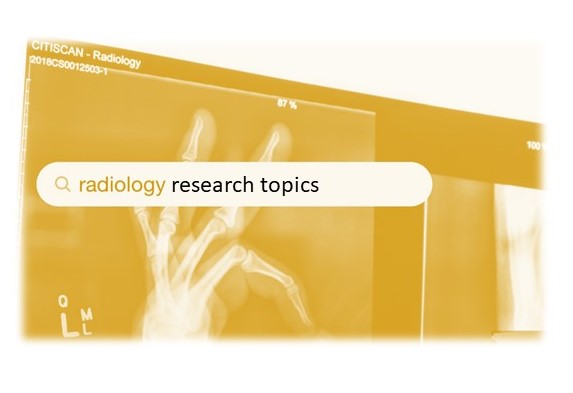
About The Author
Related Posts
Corporate finance research topics.

Animal Biochemistry Research Topics

Plant Biochemistry Research Topics

Physics Research Topics

Environmental Science Research Topics

Microeconomics Research Paper Topics

Leave a Comment Cancel Reply
Your email address will not be published. Required fields are marked *
Save my name, email, and website in this browser for the next time I comment.

Ask The Rad Tech
A blog with the medical professional in mind
15 Great Radiography Research Topic Ideas for Students

It’s finally here! You’re at the end of your programme and it’s time to pick a research topic for general radiography.
When picking a research topic, it’s important to choose a unique topic that also provides a clear path for applying statistics.

Here’s a list of some general topics for your research paper:
- Level of radiation safety awareness among non-radiology staff (This was my topic 😀)
- Professionalism in Radiography
- The effects of ‘splitting’ the image receptor
- The reliability of Exposure Index as it relates to patient dose
- The efficacy of skull examinations in x-ray as opposed to CT
- Reducing risk in the x-ray department
- Radiation safety in the operating theatre
- The role of chest x-rays in the diagnosis of COVID-19
- Thermoluminescent Dosimeter (TLD) vs. Optically Stimulated Luminescence (OSL)
- The effects of radiation on pediatric patients
- The role of radiography in the early detection of UTIs
- Challenges faced in pediatric imaging and solutions for positioning
- Stress measurement and management for the radiography student
- Environmental factors of the x-ray room and its effects on the pediatric patient
- The practicalities of the anode heel effect – A myth?
You may also like...

Which Radiography Imaging Modality Best Suits Me?

10 Things Every Clinical Practicum Student/ Intern Should Do

20 Tips for the Operating Theatre (OT) Radiographer
Popular posts.

Pneumonia & its Plain Radiographic (X-Ray) Appearances

DIY Reversible Pattern Face Mask Tutorial

12 Essentials for Clinical Practicum That Radiography Students Should Have in Their Bag

You Know That You’re a Radiographer If…

5 Affordable Men’s Shoes for Healthcare Professionals

Tips on The Proper Way to Wear Your Protective Face Mask
- How it works
Useful Links
How much will your dissertation cost?
Have an expert academic write your dissertation paper!
Dissertation Services

Get unlimited topic ideas and a dissertation plan for just £45.00
Order topics and plan

Get 1 free topic in your area of study with aim and justification
Yes I want the free topic

Radiology Dissertation topics – Based on Latest Study and Research
Published by Ellie Cross at December 29th, 2022 , Revised On August 16, 2023
A dissertation is an essential part of the radiology curriculum for an MD, DNB, or DMRD degree programme. Dissertations in radiology can be very tricky and challenging due to the complexity of the subject.
Students must conduct thorough research to develop a first-class dissertation that makes a valuable contribution to the file of radiology. The first step is to choose a well-defined and clear research topic for the dissertation.
We have provided some interesting and focused ideas to help you get started. Choose one that motivates so you don’t lose your interest in the research work half way through the process.
Other Subject Links:
- Evidence-based Practice Nursing Dissertation Topics
- Child Health Nursing Dissertation Topics
- Adult Nursing Dissertation Topics
- Critical Care Nursing Dissertation Topics
- Palliative Care Nursing Dissertation Topics
- Mental Health Nursing Dissertation Topics
- Nursing Dissertation Topics
- Coronavirus (COVID-19) Nursing Dissertation Topics

List of Radiology Dissertation Topics
- The use of computed tomography and positron emission tomography in the diagnosis of thyroid cancer
- MRI diffusion tensor imaging is used to evaluate the traumatic spinal injury
- Analyzing digital colour and subtraction in comparison patients with occlusive arterial disorders and doppler
- Functional magnetic resonance imaging is essential for ensuring the security of brain tumour surgery
- Doppler uterine artery preeclampsia prediction
- Utilizing greyscale and doppler ultrasonography to assess newborn cholestasis
- MRI’s reliability in detecting congenital anorectal anomalies
- Multivessel research on intrauterine growth restriction (arterial, venous) doppler speed
- Perfusion computed tomography is used to evaluate cerebral blood flow, blood volume, and vascular permeability for brain neoplasms
- In post-radiotherapy treated gliomas, compare perfusion magnetic resonance imaging with magnetic resonance spectroscopy to identify recurrence
- Using multidetector computed tomography, pediatric retroperitoneal masses are evaluated. Tomography
- Female factor infertility: the role of three-dimensional multidetector CT hysterosalpingography
- Combining triphasic computed tomography with son elastography allows for assessing localized liver lesions
- Analyzing the effects of magnetic resonance imaging and transperineally ultrasonography on female urinary stress incontinence
- Using dynamic contrast-enhanced and diffusion-weighted magnetic resonance imaging, evaluate endometrial lesions
- For the early diagnosis of breast lesions, digital breast tomosynthesis and contrast-enhanced digital mammography are also available
- Using magnetic resonance imaging and colour doppler flow, assess portal hypertension
- Magnesium resonance imaging enables the assessment of musculoskeletal issues
- Diffusion magnetic resonance imaging is a crucial diagnostic technique for neoplastic or inflammatory brain lesions
- Children with chest ailments that are HIV-infected and have a radiological spectrum high-resolution ultrasound for childhood neck lumps
- Ultrasonography is useful when determining the causes of pelvic discomfort in the first trimester
- Magnetic resonance imaging is used to evaluate diseases of the aorta or its branches. Angiography’s function
- Children’s pulmonary nodules can be distinguished between benign and malignant using high-resolution ct
- Research on multidetector computed urography for treating diseases of the urinary tract
- The evaluation of the ulnar nerve in leprosy patients involves significantly high-resolution sonography
- Utilizing computed tomography and magnetic resonance imaging, radiologists evaluate musculoskeletal tumours that are malignant and locally aggressive before surgery
- The function of MRI and ultrasonography in acute pelvic inflammatory disorders
- Ultrasonography is more efficient than computed tomographic arthrography for evaluating shoulder discomfort
- For patients with blunt abdominal trauma, multidetector computed tomography is a crucial tool
- Compound imaging and expanded field-of-view sonography in the evaluation of breast lesions
- Focused pancreatic lesions are assessed using multidetector CT and perfusion ct
- Ct virtual laryngoscopy is used to evaluate laryngeal masses
- In the liver masses, triple phase multidetector computed tomography
- The effect of increasing the volume of brain tumours on patient survival
- Colonic lesions can be diagnosed using perfusion computed tomography
- A role for proton MRI spectroscopy in the diagnosis and management of temporal lobe epilepsy
- Functions of multidetector CT and doppler ultrasonography in assessing peripheral arterial disease
- There is a function for multidetector computed tomography in paranasal sinus illness
- In neonates with an anorectal malformation, transperineal ultrasound
- Using multidetector CT, comprehensive imaging of an acute ischemic stroke is performed
- The diagnosis of intrauterine neurological congenital disorders requires the use of fetal MRI
- Children with chest masses may benefit from multidetector computed angiography
- Multimodal imaging for the evaluation of palpable and non-palpable breast lesions
- As measured by sonography and relation to fetal outcome, fetal nasal bone length at 11–28 gestational days
- Relationship between bone mineral density, diffusion-weighted MRI imaging, and vertebral marrow fat in postmenopausal women
- A comparison of the traditional catheter and CT coronary imaging angiogram of the heart
- Evaluation of the descending colon’s length and diameter using ultrasound in normal and intrauterine-restricted fetuses
- Investigation of the hepatic vein waveform in liver cirrhosis prospectively. A connection to child pugh’s categorization
- Functional assessment of coronary artery bypass graft patency in symptomatic patients using CT angiography
- MRI and MRI arthrography evaluation of the labour-ligamentous complex lesion in the shoulder
- The evaluation of soft tissue vascular abnormalities involves imaging
- Colour doppler ultrasound and high-resolution ultrasound for scrotal lesions
- Comparison of low-dose computed tomography and ultrasonography with colour doppler for diagnosing salivary gland disorders
- The use of multidetector CT to diagnose lesions of the salivary glands
- Low dose CT venogram and sonography comparison for evaluating varicose veins: a pilot study
- Comparison of dynamic contrast-enhanced MRI and triple phase CT in patients with liver cirrhosis
- Carotid intima-media thickness and coronary artery disease are examined in individuals with coronary angiography for suspected CAD
- Unenhanced computed tomography assessment of hepatic fat levels in fatty liver disease
- Bone mineral density in postmenopausal women and vertebral marrow fat on spectroscopic and diffusion-weighted MRI images are correlated
- Evaluation of CT coronary angiography against traditional catheter coronary angiography in comparison
- “High-frequency ultrasonography and colour doppler evaluation of the median nerve in carpal tunnel syndrome in contrast to nerve conduction tests”
- Role of MR urethrography in the surgical therapy of obliterative urethral stricture compared to conventional urethrography
- “High resolution computed tomography evaluation of the temporal bone in cholesteatoma patients.”
- “Ultrasonographic assessment of sore shoulders and linkage of clinical examination and rotator cuff diseases”
- “A Study to Evaluate the Performance of Magnetization Transfer Ratio in Distinguishing Neurocysticercosis from Tuberculoma”
Hire an Expert Writer
Orders completed by our expert writers are
- Formally drafted in an academic style
- Free Amendments and 100% Plagiarism Free – or your money back!
- 100% Confidential and Timely Delivery!
- Free anti-plagiarism report
- Appreciated by thousands of clients. Check client reviews

Final Words
You can use or get inspired by our selection of the best radiology diss. You can also check our list of critical care nursing dissertation topics and biology dissertation topics because these areas also relate to the discipline of medical sciences.
Choosing an impactful radiology dissertation topic is a daunting task. There is a lot of patience, time and effort that goes into the whole process. However, we have tried to simplify it for you by providing a list of amazing and unique radiology dissertation topics for you. We hope you find this blog helpful.
Also learn about our dissertation services here .
Free Dissertation Topic
Phone Number
Academic Level Select Academic Level Undergraduate Graduate PHD
Academic Subject
Area of Research
Frequently Asked Questions
How to find radiology dissertation topics.
For radiology dissertation topics:
- Research recent advancements.
- Identify unexplored areas.
- Consult experts and journals.
- Focus on patient care or tech.
- Consider ethical or practical issues.
- Select a topic resonating with your passion and career objectives.
You May Also Like
Need interesting and manageable Sexual Harassment of Women dissertation topics? Here are the trending Sexual Harassment of Women dissertation titles so you can choose the most suitable one.
The talent management field is advancing rapidly when it becomes easier to find talent around the world. The management of talent is a subcategory of human resources that is not specific to any particular industry.
Need interesting and manageable Mental Health dissertation topics or thesis? Here are the trending Mental Health dissertation titles so you can choose the most suitable one.
USEFUL LINKS
LEARNING RESOURCES

COMPANY DETAILS

- How It Works
- Frontiers in Radiology
- Neuroradiology
- Research Topics
Recent Advances in Pediatric Neuroradiology
Total Downloads
Total Views and Downloads
About this Research Topic
Pediatrics neuroradiology is a subspeciality of radiology that focuses on the use of advanced neuroimaging techniques to study brain growth and to diagnose diseases and malformations in neonates, infants, toddlers, children, and adolescents. Recent technical and methodological developments, and the use of ...
Keywords : Pediatrics, Neuroimaging, Radiology, Development, Disease diagnosis
Important Note : All contributions to this Research Topic must be within the scope of the section and journal to which they are submitted, as defined in their mission statements. Frontiers reserves the right to guide an out-of-scope manuscript to a more suitable section or journal at any stage of peer review.
Topic Editors
Topic coordinators, recent articles, submission deadlines, participating journals.
Manuscripts can be submitted to this Research Topic via the following journals:
total views
- Demographics
No records found
total views article views downloads topic views
Top countries
Top referring sites, about frontiers research topics.
With their unique mixes of varied contributions from Original Research to Review Articles, Research Topics unify the most influential researchers, the latest key findings and historical advances in a hot research area! Find out more on how to host your own Frontiers Research Topic or contribute to one as an author.
- Clinical Research
- Interventional
- Radiation Oncology
- Women's
- Artificial Intelligence
- Enterprise Imaging
- Imaging Informatics
- Informatics
- Compensation
- Education & Training
- Patient Care
- Policy & Regulations
- Practice Management
- Professional Associations
- Experience Stories
- Webinars & Videos
Search form
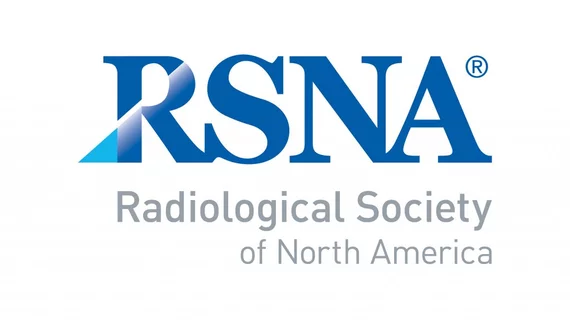
The inaugural open-access journal from the Radiological Society of North America (RSNA) is now live and publishing articles. Radiology Advances aims to make international radiology research available to everyone, without a subscription.
Susanna Lee, MD, PhD , a radiology researcher from Massachusetts General Hospital , serves as editor of the new journal, which will primarily publish original multidisciplinary research with an emphasis on emerging technologies and clinical innovations expected to impact radiology practices and patients.
“ Radiology Advances is entirely open access, and all of the contents will be freely available from the moment of publication,” Lee said in a statement. “The journal will reflect the best and the breadth of the imaging sciences and all of the glorious innovations in technology and clinical practice that are currently underway.”
In compliance with open-access principles, Radiology Advances publishes peer-reviewed articles that are promptly released in advance of publication to facilitate rapid dissemination, with subsequent publication in an open issue featuring a consistent digital object identifier.
The new journal is published as a collaborative initiative with Oxford University Press to improve the access to the latest research for technologists, radiologists and medical students.
The first articles have been published and are available here .
Related Articles:
Rsna-sponsored imaging informatics course returns for 2024, rsna announces course on deploying ai in emergency care, rsna extends contract in chicago, reaffirms schedule changes, photo gallery: new technology at rsna 2023, rsna announces winners of abdominal trauma ai challenge.

Chad is an award-winning writer and editor with over 15 years of experience working in media. He has a decade-long professional background in healthcare, working as a writer and in public relations.
Related Content
- Google Meet
- Mobile Dialer

Resent Search

Management Assignment Writing

Technical Assignment Writing

Finance Assignment Writing

Medical Nursing Writing

Resume Writing

Civil engineering writing

Mathematics and Statistics Projects

CV Writing Service

Essay Writing Service

Online Dissertation Help

Thesis Writing Help

RESEARCH PAPER WRITING SERVICE

Case Study Writing Service

Electrical Engineering Assignment Help

IT Assignment Help

Mechanical Engineering Assignment Help

Homework Writing Help

Science Assignment Writing

Arts Architecture Assignment Help

Chemical Engineering Assignment Help

Computer Network Assignment Help

Arts Assignment Help

Coursework Writing Help

Custom Paper Writing Services

Personal Statement Writing

Biotechnology Assignment Help

C Programming Assignment Help

MBA Assignment Help

English Essay Writing

MATLAB Assignment Help

Narrative Writing Help

Report Writing Help

Get Top Quality Assignment Assistance

Online Exam Help

Macroeconomics Homework Help

Change Management Assignment Help

Operation management Assignment Help

Strategy Assignment Help

Human Resource Management Assignment Help

Psychology Assignment Writing Help
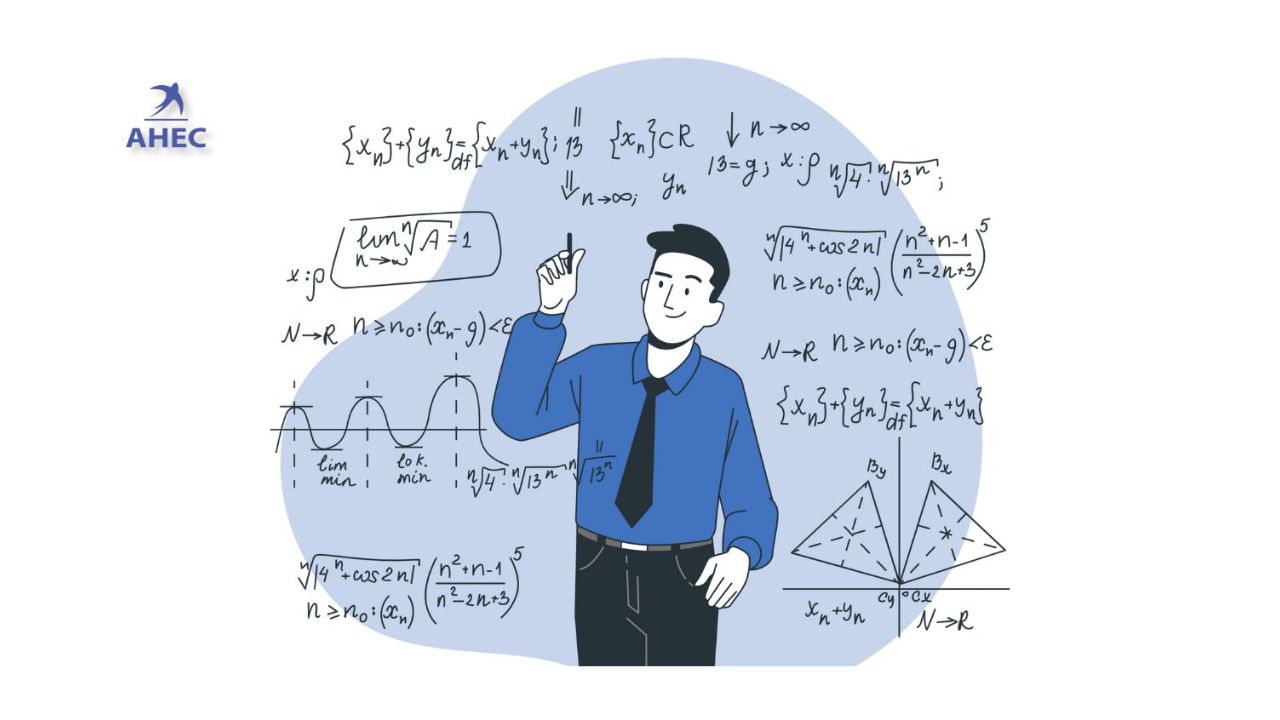
Algebra Homework Help

Best Assignment Writing Tips

Statistics Homework Help

CDR Writing Services

TAFE Assignment Help

Auditing Assignment Help

Literature Essay Help

Online University Assignment Writing

Economics Assignment Help

Programming Language Assignment Help

Political Science Assignment Help

Marketing Assignment Help

Project Management Assignment Help

Geography Assignment Help

Do My Assignment For Me

Business Ethics Assignment Help

Pricing Strategy Assignment Help

The Best Taxation Assignment Help

Finance Planning Assignment Help

Solve My Accounting Paper Online

Market Analysis Assignment

4p Marketing Assignment Help

Corporate Strategy Assignment Help

Project Risk Management Assignment Help

Environmental Law Assignment Help

History Assignment Help

Geometry Assignment Help

Physics Assignment Help

Clinical Reasoning Cycle

Forex Assignment Help

Python Assignment Help

Behavioural Finance Assignment Help

PHP Assignment Help

Social Science Assignment Help

Capital Budgeting Assignment Help

Trigonometry Assignment Help

Java Programming Assignment Help

Corporate Finance Planning Help

Sports Science Assignment Help

Accounting For Financial Statements Assignment Help

Robotics Assignment Help

Cost Accounting Assignment Help

Business Accounting Assignment Help

Activity Based Accounting Assignment Help

Econometrics Assignment Help

Managerial Accounting Assignment Help

R Studio Assignment Help

Cookery Assignment Help

Solidworks assignment Help

UML Diagram Assignment Help

Data Flow Diagram Assignment Help

Employment Law Assignment Help

Calculus Assignment Help

Arithmetic Assignment Help

Write My Assignment

Business Intelligence Assignment Help

Database Assignment Help

Fluid Mechanics Assignment Help

Web Design Assignment Help

Student Assignment Help

Online CPM Homework Help

Chemistry Assignment Help

Biology Assignment Help

Corporate Governance Law Assignment Help

Auto CAD Assignment Help

Public Relations Assignment Help

Bioinformatics Assignment Help

Engineering Assignment Help

Computer Science Assignment Help

C++ Programming Assignment Help

Aerospace Engineering Assignment Help

Agroecology Assignment Help

Finance Assignment Help

Conflict Management Assignment Help

Paleontology Assignment Help

Commercial Law Assignment Help

Criminal Law Assignment Help

Anthropology Assignment Help

Biochemistry Assignment Help

Get the best cheap assignment Help

Online Pharmacology Course Help

Urgent Assignment Help

Paying For Assignment Help

HND Assignment Help

Legitimate Essay Writing Help

Best Online Proofreading Services

Need Help With Your Academic Assignment

Assignment Writing Help In Canada

Assignment Writing Help In UAE

Online Assignment Writing Help in the USA

Assignment Writing Help In Australia

Assignment Writing Help In the UK

Scholarship Essay Writing Help

University of Huddersfield Assignment Help

Ph.D. Assignment Writing Help

Law Assignment Writing Help

Website Design and Development Assignment Help
Radiology Thesis Research Topics
A dissertation, or thesis, is an integral part the Radiology curriculum. It can be called MD, DNB, or DMRD. For your convenience, we have tried to collect radiology thesis topics from different sources. Writing a Radiology thesis is not for everyone. There is no way around it so accept it and get on with it. #PhilosophyGyan!). Get started on your thesis as soon as you can. You can finish your thesis before the exams to avoid stress. Your thesis may need to be edited many times so be ready for this and plan your time accordingly.
Here are some tips for choosing the right topic and thesis in Radiology research:
- Prospective studies are more effective than retrospective ones.
- For your radiology thesis, choose a topic that is simple.
- You can choose a new topic if you're really interested in research and have a mentor to guide you. After you're done, make sure you publish your research.
- It is a good idea to stick with a topic for your thesis that won't take too much of your time in most cases.
- This does not mean you should abandon your thesis or 'Ctrl L + CtrlV' it from someone from another university. Writing your thesis is the first step in research methodology. Please do it honestly.
- However, don't spend too much time writing/collecting data to support your thesis.
- Don't put off preparing your thesis. Once you have been given a guideline, begin researching the topics and writing the review.
- Do not rush to finish your thesis until a few months before the exam.
- Some people have been unable to appear on the exam due to not having submitted their thesis on time. Do not take your thesis lightly.
- I will reiterate once more: Do not choose the thesis topic of someone else. Learn about the types of cases your Hospital treats. A good thesis on a common topic is better than one that is poorly written on a more obscure one.
List of Radiology Thesis Topics
- The state of the art in MRI for the diagnosis of hepatic focal lesion
- Multimodality imaging evaluation for sacroiliitis in patients newly diagnosed with spondyloarthropathy
- Multidetector computed Tomography in Oesophageal Varices
- The role of positron emission imaging tomography and computed tomography for the diagnosis of thyroid cancer
- Ultrasound elastography is used to evaluate focal breast lesions
- Assessment of traumatic spinal injuries: role of MRI diffusion tensor imagery
- Sonographic imaging for male infertility
- Comparative analysis of digital subtraction and color Doppler in patients with occlusive arterial diseases
- CT urography and haematuria: What is its role?
- Functional magnetic resonance imaging plays a vital role in brain tumor surgery safety
- Prediction of preeclampsia by Doppler uterine artery
- Evaluation of neonatal Cholestasis: Role of Doppler ultrasonography and gray scale
- Validity of MRI for diagnosis of congenital anorectal abnormalities
- Assessment of clubfoot: Role of sonography
- Diffusion MRI plays a role in the preoperative evaluation for brain neoplasms
- Pre-anaesthetic evaluation and laryngeal conditions.
- Study of intrauterine growth restriction: multivessel (arterial, venous) Doppler velocity
- Multiparametric 3tesla-MRI for suspected prostatic malignancy
- Sonography is an important tool for identifying benign nodules in the thyroid.
- Multiple sclerosis: Role of advanced magnetic resonance imaging sequences
- Evaluation of jaw lesions: role of multidetector computed Tomography
- Ultrasound and MR Imaging are important in the evaluation of Musculotendinous Pathologies of Shoulder Joint
- Perfusion computed tomography plays a role in the assessment of cerebral blood flow, blood volume, and vascular permeability for cerebral neoplasms
- MRI flow quantification is used to assess the most common csf flow abnormalities
- Diffusion-weighted MRI is important in the evaluation of prostate lesions. It also helps to determine histopathological correlation.
- CT enterography for evaluation of small bowel problems
- To detect recurrence, compare perfusion magnetic resonance imaging and magnetic resonance spectroscopy in post-radiotherapy treated gliomas.
- Evaluation of paediatric retroperitoneal masses using multidetector computed Tomography
- Multidetector computed tmography plays a role in neck lesions
- Indian population estimates standard liver volume
Topics for a Radiology dissertation
- Multislice CT scan, barium swallow and their role in the estimation of the length of oesophageal tumors
- Malignant Lesions-A Prospective Study.
- Ultrasonography is an important tool for the diagnosis of acute abdominal disease in children.
- Role of three dimensional multidetector CT hysterosalpingography in female factor infertility
- Comparative evaluation of multidetector computedtomography (MDCT), virtual tracheobronchoscopy, and fiberoptic traceo-bronchoscopy for airway diseases
- The role of multidetector CT for small bowel obstruction evaluation
- Sonographic evaluation of adhesive capsulitis in the shoulder
- Utility of MR Urography Versus Other Techniques in Obstructive Uropathy
- An MRI of the postoperative knee
- 64-slice multi detector computed tomography plays an important role in the diagnosis of mesenteric and bowel injury after blunt abdominal trauma.
- In the evaluation of focal liver lesion, sonoelastography is combined with triphasic computed Tomography
- Evaluation of the role of transperineal ultrasound and magnetic resonance imaging in urinary stress incontinence in women
- Multidetector computed morphographic features of abdominal hernias
- Ultrasound elastography is used to evaluate lesions in major salivary glands
- Female urinary incontinence: Transvaginal ultrasound and Magnetic Resonance Imaging
- Evaluation of colonic lesions using MDCT colonography and double contrast barium enema
- Role of MRI for diagnosis and staging urinary bladder carcinoma
- Children with febrile neutropenia: Spectrum of imaging findings
- Children with chest tuberculosis: Spectrum of radiographic appearances
- Computerized tomography plays a role in the evaluation of mediastinal masses during paediatrics
- Diagnosis of renal artery stenosis by comparison of multimodality imaging in diabetics
- Multidetector CT virtual Hysteroscopy is an important tool in the diagnosis of female infertility.
- Evaluation of Crohn's Disease: The role of multislice computed Tomography
- CT quantification of airway and parenchymal parameters using 64-slice MDCT in patients with chronic obstructive lung disease
- Comparative evaluation of MDCT versus 3t MRI in radiographically diagnosed jaw lesions.
- Evaluation of the diagnostic accuracy of ultrasonography, colour-Doppler sonography, and low dose computed Tomography in acute appendicitis
- Ultrasonography , magnetic resonance cholangio-pancreatography (MRCP) in assessment of pediatric biliary lesions
- Multidetector computed Tomography in Hepatobiliary Lesions
- Assessment of peripheral nerve lesions using high resolution ultrasonography (HRU) and colour Doppler
- Multidetector computed Tomography in Pancreatic Lesions
Thesis topics in DNB radiology
- Magnetic resonance perfusion weighted imagery & spectroscopy are used to grade gliomas by correlating the perfusion parameter of the lesion and the final histopathological grade
- Magnetic resonance assessment of abdominal tuberculosis.
- Low dose spiral HRCT for diffuse lung disease is useful in diagnosing
- Evaluation of endometrial lesion evaluations using dynamic contrast enhanced and diffusion-weighted magnetic resonance imaging
- Digital breast tomosynthesis and contrast enhanced digital mammography are both available for early diagnosis of breast lesions.
- Assessment of Portal Hypertension using Colour Doppler flow and magnetic resonance imaging
- Magnetic resonance imaging allows for the evaluation of musculoskeletal problems
- Diffusion magnetic resonance imaging is an important tool in the diagnosis of brain lesions that are neoplastic or inflammatory.
- Radiological spectrum of HIV-infected children with chest diseases High resolution ultrasonography for neck masses in children
- With surgical findings
- Evaluation of spinal trauma: Role of MRI
- Type 2 diabetes mellitus: Sonographic evaluation of the peripheral nerves
- Perfusion computed tomography plays a role in the evaluation neck masses and correlation
- Ultrasonography plays a role in diagnosing knee joint problems
- Ultrasonography plays a role in the evaluation of different causes of pelvic pain during the first trimester.
- The Evaluation of Diseases of the Aorta or its Branches: Magnetic Resonance Angiography's Role
- MDCT fistulography for evaluation of fistulas in Ano
- Multislice CT plays a role in the diagnosis of small intestinal tumors
- High resolution CT plays a role in the differentiation of benign and malignant pulmonary nodules among children
- Multidetector computed urography in the treatment of urinary tract disorders: A study
- High resolution sonography plays an important role in the assessment of the ulnar nerve for patients suffering from leprosy.
- Radiological pre-operative evaluation of malignant and locally aggressive musculoskeletal tumors using magnetic resonance imaging and computed tomography.
- In acute pelvic inflammatory diseases, the role of MRI and ultrasound
- In the evaluation of shoulder pain, ultrasonography is more effective than computed tomographicarthrography
- Multidetector Computed Tomography is an important tool for patients suffering from blunt abdominal trauma.
- Evaluation of breast lesions: The role of extended field-of-view sonography and compound imaging
- Multidetector CT, perfusion CT are used to evaluate focal pancreatic lesion.
- Assessment of breast masses using sono-mammography or colour Doppler imaging
- Evaluation of laryngeal masses: role of CT virtual laryngoscopy
- Triple phase multi-detector computed tomography in the liver masses
Radiology thesis topics for reference
- Ultrasound elastography is used to evaluate hepatic dysfunction in chronic liver disease.
- Assessment of hydrocephalus in children: Role of MRI
- Sonoelastography is an important tool in the diagnosis of breast lesions
- Patients with intracranial tumors: The impact of volumetric tumor doubling on survival
- Perfusion computed tomography plays a role in the diagnosis of colonic lesions
- Proton MRI spectroscopy plays a role in the evaluation and treatment of temporal lobe epilepsy
- Evaluation of peripheral arterial disease: role of multidetector CT and Doppler ultrasound
- Multidetector computed Tomography plays a role in paranasal sinus disease
- Virtual endoscopy with MDCT is an effective tool for diagnosing and evaluating gastric problems
- High resolution 3 Tesla MRI for the assessment of hindfoot and ankle pain.
- Ultrasonography transperineal in infants suffering from anorectal malformation
- In order to detect varices in patients with cirrhotics, CT portography uses MDCT instead of color Doppler
- CT urography plays a role in the evaluation of a dilapid ureter
- Dynamic contrast-enhanced multidetector CT characterizes pulmonary nodules
- Comprehensive CT imaging of an acute ischemic stroke using multidetector CT
- Fetal MRI plays a vital role in diagnosing intrauterine neurological congenital abnormalities
- Multidetector computed angiography plays a role in pediatric chest mass
- Multimodality imaging for the assessment of breast lesions that are palpable or non-palpable.
- Sonographic Assessment of Fetal Nasal Bone Length at 11-28 Gestational Days and Its Relationship to Fetal Outcome.
- The Role Of Sonoelastography and Contrast-Enhanced Computed Tomography in Evaluation Of Lymph Node Metastasis in Head and Neck Cancers
- Unenhanced computed Tomography allows for assessment of the hepatic fat in fatty liver disease.
- Correlation between vertebral marrow fat and spectroscopy, diffusion-weighted MRI imaging, and bone mineral density in postmenopausal females
- Comparative assessment of CT coronary imaging with conventional catheter coronary angiography
- Ultrasound evaluation of the length and diameter of the descending colon in normal and intrauterine-restricted foetuses
- Prospective study of the hepatic vein waveform in liver cirrhosis. Correlation with Child Pugh's classification.
- CT angiography for evaluation of coronary artery bypass graft patency in symptomatic patients' functional assessment myocardium using cardiac MRI in patients suffering from myocardial injury
- MRI Evaluation of HIV Positive Patients with Central Nerv System Manifestations
- MDCT evaluation of mediastinal hilar masses
- Evaluation of labro-ligamentous complex lesion by MRI & MRI arthrography shoulder joint
- Imaging plays a role in the assessment of soft tissue vascular malformations
Thesis topics in MD radiology:
- The Role of CT Virtual Cystoscopy in Urinary Bladder Neoplasia Diagnosis
- Multislice CT is an essential diagnostic technique for small intestinal tumours.
- "Mri Flow Quantification in the Evaluation of the Most Common CSF Flow Anomals"
- "The Fetal Mri Role in the Diagnosis of Intrauterine Neurological CongenitalAnomalies"
- Transcranial Ultrasound in the Diagnosis of Neonatal Brain Insults
- "Interventional Imaging Procedures' Role in the Treatment of Specific Gynecological Disorders"
- The Role of Radiological Imaging in Endometrial Carcinoma Diagnosis
- "The Role of High Resolution CT in the Diagnosis of Benign and Malignant Pulmonary Nodules in Children"
- Ultrasonography is a valuable diagnostic technique for knee joint pathologies.
- "The Role of Diagnostic Imaging Modalities in Assessing Post-Liver Transplantation Recipient Complications"
- "In Diagnosis, Diffusion-Weighted Magnet Resonance Imaging
- Brain Tumor Characterization in Relation to Conventional Mri
- PET-CT and Hepatic Tumor Evaluation
- "The Role of CT in the Evaluation of Mediastinal Masses in Pediatric Patients"
- "Female Urinary Incontinence: Transvaginal Ultrasound and Magnetic Resonance Imaging
- Multidetector CT is an important tool in diagnosing urinary bladder cancer
- "The Role Of Transvaginal Ultrasound in Diagnosis and Treatment Of Female Infertility
- Role Of Diffusion-Weighted Mri Imaging In Evaluation Of Cancer Prostate
- "Role Of Emission Tomography With Computed Tomography In Diagnosis Of Cancer Thyroid"
- CT Urography in the Case of Haematuria: What Role Does It Play?
- "The Role of Ultrasonography in the Diagnosis of Acute Abdominal Disorders in Children"
- "The Role of Functional Magnetic Resonance Imaging in Increasing the Safety of Brain Tumor Surgery"
- The Role of Sonoelastography in the Characterization of Breast Lesions
- "Ultrasonography and Magnetic Resonance Cholangiopancreatography (MRCP) in Pediatric Biliary Lesions"
- "The Role of Ultrasound and Color Doppler Imaging in the Evaluation of Acute Abdominal Pain Caused by Female Genital Causes"
- "The Role of Multidetector CT Virtual Laryngoscopy in the Diagnosis of Laryngeal Mass Lesions"
- The Postoperative Knee MRI
- Mri's Role in Valvular Heart Disease Assessment
- Fetal Abdominal Abnormalities: The Role of 3D and 4D Ultrasonography
- State-of-the-Art Hispatic Focal Lesions
Get Trustworthy Thesis Assistance Offerd From AHECounselling
Take a deep breath, and think about the issues. What are your problems when writing a thesis. Why can't your thesis be transferred to our thesis-helpers? Are you looking for additional assistance in writing your thesis? These concerns can be frustrating. However, losing your marks is not something you want. Consider all the reasons you should visit AHECounselling to get dissertation help.
We are proud to offer our thesis writing services and assist scholars with these problems. You will find qualified thesis helpers at AHECounselling that can meet all your needs. We can answer all your questions about any topic. Professional thesis assistance is also available to help with the drafting, editing, and proofreading. It is now time to click the Order Now button. Place your order quickly before it is too late to submit your thesis!
Frequently asked questions
How do i choose a thesis for my radiology .
Select a straightforward subject for your radiology thesis. You can pick a unique topic if you have a competent mentor who will help you and are really engaged in research. Once you've completed that, be sure to publish your study as soon as it's finished.
What are the problems in radiology ?
The "invisible" radiologist, tissue characterization, and micro resolution are among the problems. Opportunities exist in interventional radiology and quantitative imaging. Radiological screening practices will alter due to in vitro diagnostics. Radiology may have varied effects from automation.
What are the 5 most common errors in radiology ?
In 2016, Johnson found that failure to consult earlier studies or reports, limitations in imaging technique (inappropriate or incomplete protocols), inaccurate or incomplete history, the lesion's location outside of the region of interest, and a failure to search were the most frequent causes of diagnostic errors.
What do radiology means ?
Imaging technology is used in the medical specialty of radiology to identify and treat illness. Diagnostic radiology and interventional radiology are two subfields of radiology. Radiologists are medical professionals with a focus on radiology.
What is an example of radiology ?
The most typical kinds of radiological diagnostic tests include: The term "computed tomography" (CT) is also used for CAT scans, which include CT angiography. upper gastrointestinal and barium enema fluoroscopy. MRI and MR angiography are terms for magnetic resonance imaging.
Does radiologist do surgery ?
A surgical operation, for instance, may be supported by medical imaging used by an interventional radiologist. With the use of this imaging, operations may be performed more safely and with a quicker recovery. Typically, interventional radiologists do keyhole surgery.
What does the future hold for radiology ?
Future phases of AI in radiology will build sophisticated deep learning algorithms, more complicated artificial neural networks, and intricate integration of several data systems (pathology and radiology) so that AI in medicine and radiology will continue to advance and become more potent.
Is AI going to replace radiologists ?
Radiologists cannot be replaced by AI. However, it can make radiologists' routine work easier. Early adopters of AI will therefore probably lead the radiology industry in the future. Some radiology medical students have changed their perspectives in response to this topic, which has raised concerns.
Which field is better nursing or radiology ?
Radiologic technologists made an average yearly pay of $56,450 as of 2012, according to the BLS. This is significantly greater than the average yearly salary of LPNs and certified vocational nurses, which was $42,400. But the majority of nurses make more money than radiologic technologists.
How do radiology techs make more money ?
You will be paid extra if you select a shift that starts later in the day. You will get paid extra if you pick shifts on the weekends. A radiologic technician who works the night shift gets paid much more per hour than one who works the day shift.
Do radiologists talk to patients ?
Direct patient interaction is already a common practice in several radiology subspecialties. Before, during, and after tests, sonologists, fluoroscopists, interventional radiologists, women's imagers, and pediatric radiologists frequently speak with their patients directly.
How long does it take to become a radiologist ?
You must complete a minimum of seven years of formal medical education. A master's in radiology follows a bachelor's in radiography with a biology and physics emphasis, similar to an MBBS or premedical degree.
Can radiologist do pain management ?
Numerous operations that our radiologists may carry out can aid in the pain reduction of suffering individuals. Many of those procedures can be very beneficial for people with joint pain, back pain, or chronic face discomfort.
List of Radiology Thesis Topics ?
- The role of positron emission imaging tomography and computed tomography in the diagnosis of thyroid cancer
Radiology thesis topics for reference ?

Top 10 Best Universities Ranking list in India 2022

Generic Conventions: Assignment Help Services

Research Paper Topics For Medical

Top 5 Resources for Writing Excellent Academic Assignments

How to Write a Literature Review for Academic Purposes

Tips for Writing a killer introduction to your assignment

How To Write A Compelling Conclusion For Your University Assignment

Research Papers Topics For Social Science

Best 150 New Research Paper Ideas For Students

7 Best Plagiarism Checkers for Students And Teachers in 2024
Enquiry form.
An official website of the United States government
The .gov means it’s official. Federal government websites often end in .gov or .mil. Before sharing sensitive information, make sure you’re on a federal government site.
The site is secure. The https:// ensures that you are connecting to the official website and that any information you provide is encrypted and transmitted securely.
- Publications
- Account settings
Preview improvements coming to the PMC website in October 2024. Learn More or Try it out now .
- Advanced Search
- Journal List
- Wiley-Blackwell Online Open

Identification of research priorities of radiography science: A modified Delphi study in Europe
Sanna törnroos.
1 Department of Nursing Science, University of Turku and Metropolia University of Applied Sciences, Turku Finland
Miko Pasanen
2 Department of Nursing Science, University of Turku, Turku Finland
Helena Leino‐Kilpi
3 Department of Nursing Science, University of Turku and Turku University Hospital, Turku Finland
Eija Metsälä
Associated data.
The data that support the findings of this study are openly available in Zenodo at http://doi.org/10.5281/zenodo.6322928
Radiography science is a new discipline among health sciences. It is a discipline that investigates phenomena in medical imaging, radiation therapy, and nuclear medicine. It has merged from the need to provide research evidence to support these services. The domain of the discipline needs clarification and more research should be focused on its paradigmatic issues. Radiography research priorities have been previously charted on a national level in different countries but the viewpoint has been that of the needs of the profession, not of the discipline. This study aimed to identify the priorities of the discipline. The method chosen was a modified version of the Delphi technique with two rounds. The expert panel consisted of 24 European radiography researchers with long professional experience. This study shows that the research priorities in radiography science are related to the phenomena of radiographers' profession, clinical practices, and the safe and high‐quality use of radiation and technology for medical imaging, radiotherapy, and nuclear medicine. Identifying these priorities can help focus research onto most important topics and clarify disciplinary perspective.
- The research priorities in radiography science are related to the phenomena of radiographers' profession, clinical practices, and the safe and high quality use of radiation and technology for medical imaging, radiotherapy, and nuclear medicine
- Eight research topics were rated high in importance. These were the benefits of using artificial intelligence in radiography, safe integration of artificial intelligence into practice, impact of new technology, evidence‐based clinical practices, radiation safety, radiation optimization, patient outcomes in medical imaging, and image interpretation.
- Radiography science differs from other health sciences in its priorities
1. INTRODUCTION
The European Commission's Horizon Europe ( 2021 ), a major funder of health research, includes in its policy aims finding new ways to keep people healthy, and developing better diagnostics and more effective therapies. Almost all patients in health care go through diagnostic examinations at some stage of their care pathway. Medical imaging rates are increasing due to innovations in technology and treatment methods (Smith‐Bindman et al., 2019 ), new applications in screening (Fedewa et al., 2021 ), the rising number of older people (United Nations, 2019 ), and increases in multimorbidity (Head et al., 2021 ) and in cancer cases (Tanskanen et al., 2021 ). Cancer is a growing health problem, and radiotherapy is used in cancer treatment in about 50 per cent of cases (Baskar et al., 2012 ). Radiography is an allied health science acting in the field of diagnostic imaging and radiotherapy. The knowledge base in radiography science is a combination of patient care and high technology and consists of medical imaging, radiotherapy, and nuclear medicine (Lundgren et al., 2015 ). Research in radiography has a long history, but as a discipline of its own it is still evolving. Rapid changes in the field set demands for high‐quality research, which is difficult to execute without solid foundations and a clear disciplinary perspective. It would be vital to conduct research from the discipline's own paradigm to develop clinical practices at the grass‐roots level where the patients encounter the diagnostic and therapeutic services. Radiography science in Europe is not a unified discipline. There are differences in the education, curricula, and research practices (Couto et al., 2018 ; McNulty et al., 2016 ). Advantages of a unified discipline would be closer research collaboration between researchers and academic institutions offering radiography as a discipline, better understanding of what the focus of the discipline is and its philosophical assumptions, not to mention the benefits of sharing limited research funding of small subspecialties. In order to clarify a unified disciplinary perspective, it is important to identify the research priorities of radiography science.
1.1. Background
Radiographers consider their own research important but are not actively involved in research (Vikestad et al., 2017 ). The number of radiographers with a doctorate degree is around 0.1 to 0.3 per cent of the workforce (Andersson et al., 2020 ; Ekpo et al., 2017 ). This is significantly lower than the number of nurses with doctorates, around 1 to 1.9 per cent of the workforce (Rosenfeld et al., 2022 ; Orton et al., 2020 ). There is an active research community in the discipline but the majority of the published articles are from a small group of researchers (Snaith, 2013 ). Radiographers are engaged in research activities as assistants or collectors of data but many studies are led by other professionals due to radiographers' limited experience and confidence in conducting research (Saukko et al., 2021 ; Dennett et al., 2021 ). However, most radiography professionals tend to think that radiographers should conduct research and lead research projects (Saukko et al., 2021 ; Ooi et al., 2012 ). Advancement of research engagement would require knowledge about scientific methods, support from colleagues and other professionals, and a positive research culture in workplaces (Bolejko et al., 2021 ).In health sciences, research interests and priorities have been studied for reasons such as developing an informed set of research priorities (Shepherd et al., 2017 ), augmenting previously identified research priorities with a new group (Frankenberger et al., 2019 ), identifying research topics (Wielenga et al., 2015 ), developing a research agenda (Brenner et al., 2014 ), and prioritizing efforts and resources (Garner et al., 2021 ). In nursing science, research priorities have been set to both broad foci (such as health, practice, education, and leadership) and to various clinical categories (Strobehn et al., 2021 ). Research regarding dissertation topics in nursing identified quality of life, perception, job satisfaction, sleep, nursing roles, physical activity/exercise, turnover, leadership styles, simulation, and cancer as the most frequent topics (Strobehn et al., 2021 ). In the Nordic countries, research in nursing focuses mainly on patients' health problems (Lundgren et al., 2009 ). By contrast, in radiography, dissertations have focused on structural factors, clinical radiography, radiographic technology, and pedagogical approaches (Lundgren et al., 2019 ), indicating that radiography and nursing have diverging research priorities. The current discourse about radiography science resembles much of the discussion that nursing science faced in the early ages about its disciplinary perspective and focus (Lundgren et al., 2009 ).Areas of research interests for European radiography researchers have not previously been charted from the perspective of the discipline. Previous studies have explored the needs of the profession. Radiotherapists' research interests have been charted at the national level in Norway and Australia (Egestad & Halkett, 2016 ; Halkett et al., 2017 ). Studies in the research interests in radiotherapy indicate that the research interests are connected to patients, technical issues of radiotherapy, radiation safety, and issues of the staff (Egestad & Halkett, 2016 ). Research areas prioritized as most important were linked to the development of treatment techniques and their benefits and side effects to patients, as well as to concerns of the radiotherapist profession (Cox et al., 2010 ). Researchers have also stated patient focus and patient outcomes in radiotherapy as areas of research interest (Halkett et al., 2017 ).The College of Radiographers ( 2017 ) studied research priorities for the radiographer profession in the United Kingdom. A Delphi expert panel reached consensus in 133 priority areas. Five key themes for research were identified. These were technical innovations, patient and public experience, service and workforce transformation, accuracy and safety, and education and training. The Society of Radiographers working group for artificial intelligence (AI; Malamateniou et al., 2021 ) found that radiography research priorities should be set to investigate the impact of AI technologies on patients in medical imaging and radiotherapy, radiographer role development, and the development of practices with emerging AI‐based technology. In Finland, the research focus in radiography science is reportedly in clinical radiographers' work, technical radiation usage and radiation protection, patient care and service, and service for a health care context (Sorppanen, 2006 ). Metsälä and Fridell ( 2018 ) found that radiography science primarily has technical and practical knowledge interests, but that critical knowledge interests exist as well.
In this study, our aim is to identify research priorities in radiography science. The objective is to chart the opinions of radiography experts. We ask three questions to guide this study:
- Which research topics do radiography science experts in Europe consider important for radiography science?
- Which research topic do they see as most important?
- Which research topics do experts in the field of radiography agree upon?
Agreement on topics is achieved when there is a consensus. The topics that reach consensus and are rated as being of high importance are considered the priorities of the discipline.
The Delphi technique was selected as the method. The Delphi technique is a widely used method in health sciences and it has been used in developing guidelines and establishing research priorities. The Delphi technique is characterized by the use of an expert panel, the members of which are anonymous to each other, and iterative rounds with feedback and the opportunity to alter one's opinion. The classical Delphi technique has at least three successive rounds but modified variations are numerous. The classical Delphi technique starts with an open first round (Varndell et al., 2021 ). The benefit of using a Delphi technique is the possibility of having an anonymous group opinion from a wide geographical area. It is especially suitable when there is a lack of agreement or incomplete knowledge (Trevelyan & Robinson, 2015 ). The Delphi technique has been widely used in identifying and building consensus on research interests and priorities in health sciences among health care professionals (e.g., Shepherd et al., 2017 ; Frankenberger et al., 2019 ).
2.1. Design
A modified Delphi method with two rounds was performed. Instead of an open first round, we used a scoping review as the starting point of our study. In an earlier study (Törnroos et al., 2021 ), we identified 117 research interests for radiography science. They formed the basis of the first‐round questionnaire. Some of the similar items were further merged by two authors (S.T. and E.M.) and eventually 84 items were included in the first‐round questionnaire. The first‐round questionnaire was piloted in Finland in August 2021 by four radiographers with experience and training in research. They commented on the readability and clarity of the questionnaire. The comments concerned the instruction text for the questionnaire, background questions about the discipline, headings, and the size of the open‐ended answer box. The questionnaire was modified accordingly. The entire Delphi process is presented in Figure 1 .

Description of the Delphi process. The two steps comprising the top row (scoping review) conducted prior to the current study have been reported in Törnroos et al. (2021)
2.2. Expert panel sampling
Experts were recruited through the European Federation of Radiographer Societies (EFRS). A recruitment invitation was sent by the EFRS to all member societies (40 national societies and 60 academic institutions of radiography education in Europe). The criteria for a panelist were (i) minimum of a bachelor's degree in any field of radiography (diagnostics, radiation therapy, or nuclear medicine); (ii) at least two published research articles in a scientific journal in the past 5 years; (iii) clinical work experience in the field; (iv) English‐language skills (reading and writing); and (v) willingness to participate voluntarily. A total of 29 experts answered the invitation, with all but one expert meeting all the criteria. The first round of the questionnaire was thus sent to 28 experts.
2.3. Data collection and analysis
Data were collected with the REDCap platform (hosted by the University of Turku). They were analyzed with IBM SPSS Statistics version 27. Categorical variables were summarized with counts and percentages. Variables did not follow normal distribution. High rankings on importance of the topics (6 or 7) were observed with most variables, with a few outliers distorting the mean. Median values and quartiles were thus selected to describe the level of agreement. The level of consensus was set to an interquartile range (IQR) value of ≤1. IQR is a measure of dispersion for the median. IQR of less than one means that more than 50% of all opinions are within one point on the scale. It is often used in Delphi studies as an objective way of determining consensus (von der Gracht, 2012 ). Stability of the responses between rounds was measured with a bootstrapped paired t ‐test, which is a valid test for two dependent samples with non‐normal distribution (Dwivedi et al., 2017 ). A p ‐value of >0.05 indicates that there is no statistically significant difference between the responses in round two. A smaller p ‐value would indicate that there has been a significant change in the response. To test whether experts' educational background or position at work had a significant effect on their responses, we used the Fisher's extended test. We were unable to use the chi‐square test because the expected number of answers per cell was under five.
2.4. Round one
The 84 research topics (items) in the questionnaire were structured under six categories identified in the scoping review: (i) radiographer's profession (17 items); (ii) clinical practice in radiography (31 items); (iii) safe and high‐quality use of radiation (12 items); (iv) technology in radiography (8 items); (v) discipline of radiography science (5 items); and (vi) management and leadership (11 items). Panelists were asked to rate the importance of the topic to radiography science on a 7‐point Likert scale (not at all important, unimportant, low importance, neutral, somewhat important, important, and very important), where 1 represents “not at all important” and 7 is “very important.” The questionnaire contained an open‐ended question after each category, asking if there ought to be any other topics in that category. The experts were also asked to give a rationale if they considered some topic important or very important. At the end of the questionnaire, there was an open‐ended question asking if there would be any other topics outside the six categories mentioned in the questionnaire.The experts rated all items and most of the items were rated important or very important (median of 6 or 7). Only 15 items were ranked below a median of 6. The experts presented 25 new research topics for the second round. Twenty‐three new topics were placed into existing categories but two of the new topics, veterinary radiography and forensic radiography, did not fit into any pre‐existing category and were placed at the end of the second round questionnaire.
2.5. Round two
In the second round, participants received a reminder of their own answers in round one, and the median answers of the entire expert panel and the range of the answers. Participants were asked to reflect on their own answer and they were given a chance to alter their opinion or remain with the same answer. All research topics (84) and the 25 newly generated topics from the round one answers were included in the second round for a second rating (see Appendix Table A1 for all items). The experts were also asked to choose one most important topic from each of the six categories.
2.6. Ethical considerations
The Ethics Committee for Human Sciences at the University of Turku granted ethical review approval (ref 21/2021). Informed consent was received from all participants and they were provided information on how their data was processed. All data were processed according to the European Union's General Data Protection Regulation (GDPR).
3.1. Demographics of the panelists
Of the 28 experts who indicated willingness to participate, 24 experts eventually (86%) responded to the first round. There was also some attrition between rounds, and only 20 experts answered (71%) for the second round, even though two reminders were sent. The expert panelists participating in the first round were from the United Kingdom ( n = 7), Norway ( n = 4), Denmark ( n = 3), Switzerland ( n = 3), Sweden ( n = 2), Hungary ( n = 1), Italy ( n = 1), Malta ( n = 1), Portugal ( n = 1) and Spain ( n = 1). The mean age of the panelists was 50 years (range 30–70). On average, they had been working 25 years in the field of radiography (range 2–48). They had each published between 2 to 36 scientific publications in the past 5 years, with the mean being 13 publications. There were 23 degrees higher than Bachelor's. Most of the panelists were academics, with only two working as a clinical radiographer or radiotherapist. Those who described their position at work as “other” were working as clinical consultants, senior advisers, or working in a professional association (Table 1 ).
Demographics of the expert panel in round 1 and round 2
3.2. The importance of the research topics after two rounds
Out of all research topics (109 items) under the six categories identified in the scoping review, there were eight research topics that gained a high median score of 6.5 or 7 after two rounds, and the experts were like‐minded in their answers. These eight were as follows: (i) the benefits of using artificial intelligence in radiography; (ii) safe integration of artificial intelligence into practice; (iii) the impact of new technology; (iv) evidence‐based clinical practices; (v) radiation safety; (vi) radiation optimization; (vii) patient outcomes in medical imaging; and (viii) image interpretation. Another 27 research topics were rated important, with a median score of 6 and an IQR of 1. Research topics in advanced practice and patient‐centered care were also rated high in importance (median 7) but the experts' opinions were divided on these topics and they did not reach consensus (IQR of 2). The lowest rated topics that reached consensus were multidisciplinary education, role and territory of radiography, ergonomics of radiographers, workplace well‐being, complementary medicine, and the impact of radiographers' gender on the profession. There were no significant differences in answers with relation to experts' educational background or current position at work. All items included in the second round and statistical analysis are presented in Appendix Table A1 .
The expert's rationales for the topics they selected as important or very important are presented next by the six categories identified in the scoping review, under which they were structured in the questionnaire. The topics chosen as most important in each category are also described.
3.2.1. Radiographers profession
The importance of these topics was primarily rationalized by the developing needs of the profession. As technology in medical imaging and radiotherapy advances, the demands for the profession rise and more research is required for the competences and education of the professionals. Eventually this will have an impact on patient outcome and experience. The development of the radiographer profession requires research in the area.
The technical development makes it very important to be ready to acquire new competence and work in changing organizations (multidisciplinary, new technology, new procedures, new demands on the profession, etc.). (Expert 5)
Development of the profession is important as technology changes. In addition, the quality of the professionals is important for the profession to evolve. (Expert 6)
3.2.2. Clinical practice in radiography
Evidence‐based practice was deemed important for avoiding unnecessary imaging and treatment, and to improve the services and the quality in clinical practice. Patient‐centered care should be a priority and it is important to hear patient voices regarding the services they need.
Good working practices, protocols and procedures are essential in creating time and space to concentrate on the patient and his/her experiences. (Expert 13)
The radiographers work with technology, so they must know well this aspect but at the same time the radiographers are the bridge between the patient and the machine and if the interaction is not optimized, the examination and/or treatment can be compromised. The interaction with other professionals is also important to be sure that we are providing the best diagnostic/therapeutic to the patients. (Expert 4)
3.2.3. Safe and high‐quality use of radiation
Radiation protection was said to be at the heart of radiography and patient safety and the main expertise area of radiographers.
Radiographers are the professionals to handle radiation. Therefore, research in radiation is naturally performed by radiographers. (Expert 8)
Recent advances in radiotherapy dose regimens to include ultra hypofractionated treatments for prostate and breast cancer warrant further investigation of side effects and the radiobiological effect. (Expert 19)
3.2.4. Technology in radiography
Research into technological development was seen as important, as radiography operates with high technology. There was discussion about radiographers taking an active role in its development.
AI requires robust, prospective research to assess performance in a clinical setting and how this will be safely integrated into future practice. (Expert 11)
Radiographers have a lot of room to grow in the field of new technologies. They must be among the actors of these developments and must not be only the users. (Expert 16)
3.2.5. Discipline of radiography science
Research into the discipline was deemed important for the development of the discipline and research.
Research is the only way to develop Radiography as a Science and what is involved in the discipline. (Expert 24)
Good research is founded on good methods. (Expert 14)
3.2.6. Management and leadership
These topics were mostly seen as important because of their connection to smooth operation of the clinical practice and well‐being.
Everyone contributes toward smooth workflow for patient care and health and well‐being of staff. (Expert 15)
These topics are important given their link to an advanced level of radiography practice. (Expert 7)
3.2.7. The most important topic in each category
In addition to rationales, experts were asked to choose the most important topic in each category. The opinions were divided between various topics. Most support was given to “evidence‐based clinical practices” backed up by seven experts and “radiation safety” by six experts. The research topics regarded as most important from other categories were “advanced practice,” “the benefits of using artificial intelligence in radiography,” “the importance of support programs for research activity,” and “communication issues.”
3.3. Research topics that reached consensus after two rounds
Forty‐one research topics reached consensus (Table 2 ) and sixty‐eight did not. There was very little change in the experts’ opinions between rounds; only five items had a statistically significant difference ( p < 0.05) between the first and second round. There were altogether 22 topics in the category of “radiographer's profession” and 8 of them had medians of 6 or over and an IQR of 1 (36% of items), the “clinical practice in radiography” category had 38 topics of which 15 had medians of 6 or greater (39% of the items), “safe and high‐quality use of radiation” had 15 topics and 6 of these had a median of 6 or over (40% of the items), “technology in radiography” had 12 topics with 5 having a median of 6 or greater (42% of the items), “discipline of radiography science” had 8 topics and only 1 received a median of 6 (13%), and in the category of “management and leadership” there were 12 topics but none of them received a median of 6 or over with an IQR of 1. Of these six categories, “radiographer's profession,” “clinical practice in radiography,” “safe and high‐quality use of radiation,” and “technology in radiography” had quite equal proportions of high‐ranking items, while the remaining two, “discipline of radiography science” and “management and leadership,” had but a single research topic between them that was rated important by the experts of this Delphi panel. Therefore, it seems that priority in research should not be given to research topics in these two categories.
Research topics that received consensus after two rounds in each category
Abbreviations: BCa, bias‐corrected and accelerated; IQR, interquartile range.
4. DISCUSSION
The eight topics that received a high median of over 6.5 relate to the clinical practices and radiographers' profession, as well as to radiation safety and new technology in radiography. These are rather similar to the findings of the College of Radiographers (2017) for the research priorities of the radiographer profession: technical innovations, patient and public experience (about clinical practices), service and workforce transformation (in relation to advancing roles), accuracy and safety (quality and safe use of radiation), and education and training (of the radiographer profession). Similar priorities on technological development, radiation safety, patient outcomes and matters of the profession have been reported among radiotherapists (Halkett et al., 2017 ; Egestad & Halkett, 2016 ).The two topics related to artificial intelligence were rated high in importance. This is where Malamateniou et al. ( 2021 ) also recommended that priorities should be set. Artificial Intelligence‐based solutions in medical imaging and radiotherapy, and their effect on the entire discipline, including the role of the radiographer profession in the future, have been widely discussed in the radiography community for the past few years ( International Society of Radiographers and Radiological Technologists and the European Federation of Radiographer Societies, 2020 ). This might have influenced expert panelists' opinions. In the rationales given by the experts for the importance of the research areas, technological development—and in particular, the impact that rapidly developing technology has on clinical practices and the radiographer's profession—was often mentioned as the reason for conducting research in the field. When the development in the technology was used as rationale for investigating radiographers' profession, in those cases, the scope was in the competences required, rather than in the actual technology.Evidence‐based clinical practices were rated with a high median score of 7. Although discussion of evidence‐based practice, which began in the 1990s, soon came to include radiography as well (Hafslund et al., 2008 ), it still seems to be badly implemented in this field (Munn, 2020 ; Abrantes et al., 2020 ). The topic therefore is an ever‐relevant area for research. Research alone does not improve the situation; radiographers working in clinical practice would also require skills for implementation. The patient outcomes in medical imaging, another highly rated topic, relate to the same matter: how to secure effective imaging methods to improve diagnostics and eventually the patients' care. In radiation therapy, it is equally important to secure effective therapeutic procedures for the best outcome for patients.According to the expert panelists' reasoning, radiation safety and optimization are at the heart of radiography and radiographers' special expertise area. The topics were also rated high in importance. Radiation safety has improved over the years but there is still room for development and research. Constantly changing technology keeps radiation safety always topical. Even though radiation in health care is highly regulated, at least in the European Union ( 2013 ), there is indication that obsolete practices still exist (Maina et al., 2020 ; Ciraj‐Bjelac et al., 2011 ) and there are gaps in the knowledge of radiation protection measures (Faggioni et al., 2017 ).The eighth topic rated high, image interpretation, relates to a larger discussion on role extension and transfer of responsibilities from radiologists to radiographers. In the United Kingdom the role extension is well established (Hardy & Snaith, 2009 ), but there is ongoing debate surrounding the issue internationally due to a shortage of trained radiologists (van de Venter & ten Ham‐Baloy, 2019 ; Ofori‐Manteaw & Dzidzornu, 2019 ). Similar discussions of task‐shifting have been topical in other health sciences and we need more research in this area. It will be interesting to see how the rise of AI technology in image interpretation affects this discussion.Studies have shown that radiographers want to conduct research but lack the skills and confidence (Saukko et al., 2021 ; Dennett et al., 2021 ). Bolejko et al. ( 2021 ) propose a strategy for establishing a research culture that is enhanced by support from colleagues and management. We think that the implantation of research culture requires also a clear perspective of the domain of radiography science. Radiography science differs from nursing science and other health sciences in its priorities. Health and health‐related problems that are seen as priorities in nursing research (Strobehn et al., 2021 ; Lundgren et al., 2009 ) do not stand out as a priority in this study. Research into clinical practice is a shared research area in health sciences but the locus is in different areas. In the early years of nursing science, a lot of research and theories were focused on nurses and the actions they perform. As the discipline has matured, research has been directed toward the clinical problems of the patients and the essential phenomena of nursing (Tobbell, 2018 ). Radiography as a scientific discipline is still evolving, and in the future we might see the essential phenomena of radiography science emerging and the professional connection to a radiographer's work fade. In medical imaging and radiotherapy technology, change seems to be continuous. Research topics may vary over time but some phenomena that radiography science investigates are constant. Whatever improvements in technology there might be, it is important to translate the changes into clinical practice and in a manner that is suitable and safe for patients.
4.1. Limitations
The panelists of this Delphi study had a long professional history in the field of radiography and expertise in research. They represented different countries in Europe and different educational backgrounds. From some European countries there was only one expert in the panel and therefore we cannot make any generalizations that the results of this study would represent the opinion of the whole of Europe. Experts with diagnostic radiography education were over‐represented, constituting over half of the experts. Generally, of the European radiographers, about 63% have a combined qualification (diagnostic imaging, radiotherapy, and nuclear medicine), 34% diagnostic imaging only, and a small percentage are specifically qualified in radiotherapy and nuclear medicine only (McNulty et al., 2016 ). The research topics were previously identified through the literature, and the experts were asked to judge the topics in relation to their importance to radiography science (not to their own research field), so the over‐representation of diagnostic radiography researchers did not significantly bias the results. Of course, this might have had an effect on the prioritizing of research topics. It is possible that with a larger group of experts and wider geographical representation, the results of the study might be somewhat different. We received a confirmation from the EFRS that the invitation to participate in the study had been sent to all member organizations, but we could have enhanced the participation rates by advertising further.It is important to understand that achieving consensus does not mean that the correct answer has been definitively found (Keeney et al., 2006 ). For example, patient‐centered care, which has been recognized as an important research area in radiography (Halkett et al., 2012 ), was rated high in importance in this study, yet the topic did not achieve consensus. Some of the research topics might be more important to radiotherapists than to diagnostic radiographers and vice versa, but it was not the scope of this study to compare differences but rather to find commonalities that could be studied inside the discipline of radiography science. A further stated limitation of the Delphi method is a poor response rate in the sequential rounds (Keeney et al., 2006 ), and we also had a decline of participants in the second round. However, the response rate of 71% in the second round can be still considered sufficient.
5. CONCLUSIONS
This study has provided knowledge on research priorities of radiography science that are shared by experts of the Delphi panel, who were from different fields of radiography and different areas of Europe. Radiography science in this study is understood as a common field of inquiry that researchers in diagnostic imaging, radiotherapy, and nuclear medicine share. The priorities therefore are the research areas where a common ground, a consensus, can be found. We had previously discovered six main phenomena from the literature which radiography science investigates; however, the results of this study indicate that only four of them are priority areas for the discipline. The research priorities in radiography science are related to the phenomena of radiographers' profession, clinical practices, safe and high‐quality use of radiation and technology used in medical imaging, radiotherapy, and nuclear medicine. This finding is also supported by previous studies of priorities of the profession. There are several research topics inside these categories and the topics that received the most support from the experts were identified.
5.1. Relevance for clinical practice
The application of evidence‐based practices, and the development of diagnostic and therapeutic services provided in health care, require strong research evidence. This evidence can be produced with research done in radiography science. As we have now identified the priorities of radiography science, researchers in the discipline could focus their studies on these topics.
AUTHOR CONTRIBUTIONS
Study design: Sanna Törnroos, Miko Pasanen, Helena Leino‐Kilpi, Eija Metsälä. Data collection: Sanna Törnroos. Data analysis: Sanna Törnroos, Miko Pasanen. Manuscript writing: Sanna Törnroos, Helena Leino‐Kilpi, Eija Metsälä.
ACKNOWLEDGMENTS
This study was supported by the Finnish Concordia Fund with a research grant to the first author. The Fund had no role in the actual study. The coauthors did not receive funds for executing this study. We want to thank the European Federation of Radiographer Societies for its assistance with the recruitment of the expert panelists.
APPENDIX A.
All items included for round two, in same order as they appear in the questionnaire and statistical significance (Fisher's extended test) of experts' answers by the level of education, background education, and position at work, with items that were only rated in round two are marked as new
Törnroos, S. , Pasanen, M. , Leino‐Kilpi, H. , & Metsälä, E. (2022). Identification of research priorities of radiography science: A modified Delphi study in Europe . Nursing & Health Sciences , 24 ( 2 ), 423–436. 10.1111/nhs.12938 [ PMC free article ] [ PubMed ] [ CrossRef ] [ Google Scholar ]
Funding information Finnish Concordia Fund, Grant/Award Number: 20210014
DATA AVAILABILITY STATEMENT
- Abrantes, A. , Ribeiro, L. , da Silva, C. , England, A. , Azevedo, K. , Almeida, R. , & Canha Reis, M. (2020). Evidence‐based radiography: A new methodology or the systematisation of an old practice? Radiography , 26 ( 2 ), 127–132. [ PubMed ] [ Google Scholar ]
- Andersson, B. T. , Lundén, M. , & Lundgren, S. M. (2020). Radiographers' academic development in Sweden: Towards and after a doctoral degree . Radiography , 26 ( 4 ), 275–281. [ PubMed ] [ Google Scholar ]
- Baskar, R. , Lee, K. A. , Yeo, R. , & Yeoh, K. W. (2012). Cancer and radiation therapy: Current advances and future directions . International Journal of Medical Sciences , 9 ( 3 ), 193–199. [ PMC free article ] [ PubMed ] [ Google Scholar ]
- Bolejko, A. , Andersson, B. T. , Debess, J. , Fridell, K. , Henner, A. , Sanderud, A. , Saukko, E. , & Mussmann, B. R. (2021). Facilitators for and barriers to radiography research in public healthcare in Nordic countries . Radiography , 28 ( 1 ), 88–94. [ PubMed ] [ Google Scholar ]
- Brenner, M. , Hilliard, C. , Regan, G. , Coughlan, B. , Hayden, S. , Drennan, J. , & Kelleher, D. (2014). Research priorities for Children's nursing in Ireland: A Delphi study . Journal of Pediatric Nursing , 29 , 301–308. [ PubMed ] [ Google Scholar ]
- Ciraj‐Bjelac, O. , Beganovic, A. , Faj, D. , Gershan, V. , Ivanovic, S. , Videnovic, I. R. , & Rehani, M. M. (2011). Radiation protection of patients in diagnostic radiology: Status of practice in five eastern‐European countries, based on IAEA project . European Journal of Radiology , 79 ( 2 ), e70–e73. [ PubMed ] [ Google Scholar ]
- Couto, J. G. , McFadden, S. , Bezzina, P. , McClure, P. , & Hughes, C. (2018). An evaluation of the educational requirements to practise radiography in the European Union . Radiography , 24 , 64–71. [ PubMed ] [ Google Scholar ]
- Cox, J. , Halkett, G. , Anderson, C. , & Heard, R. (2010). A Delphi study on research priorities in radiation therapy: The Australian perspective . Radiography , 16 , 26–39. [ Google Scholar ]
- Dennett, A. , Cauchi, T. , Harding, K. , Kelly, P. , Ashby, G. , & Taylor, N. (2021). Research interest, experience and confidence of allied health professionals working in medical imaging: A cross‐sectional survey . Journal of Medical Radiation Sciences , 68 , 121–130. [ PMC free article ] [ PubMed ] [ Google Scholar ]
- Dwivedi, A. K. , Mallawaarachchi, I. , & Alvarado, L. A. (2017). Analysis of small sample size studies using nonparametric bootstrap test with pooled resampling method . Statistics in Medicine , 36 , 2187–2205. [ PubMed ] [ Google Scholar ]
- Egestad, H. , & Halkett, G. (2016). A Delphi study on research priorities in radiation therapy: The Norwegian perspective . Radiography , 22 , 65–70. [ Google Scholar ]
- Ekpo, E. , Snaith, B. , Harris, M. , & McEntee, M. (2017). Doctoral profile of the medical radiation sciences: A baseline for Australia and New Zealand . Journal of Medical Radiation Sciences , 64 , 195–202. [ PMC free article ] [ PubMed ] [ Google Scholar ]
- European Commission . (2021). Horizon Europe . https://ec.europa.eu/info/research-and-innovation/funding/funding-opportunities/funding-programmes-and-open-calls/horizon-europe_en
- European Union . (2013). Council Directive 2013/59/Euratom . https://eur-lex.europa.eu/eli/dir/2013/59/oj
- Faggioni, L. , Paolicchi, F. , Bastiani, L. , Guido, D. , & Caramella, D. (2017). Awareness of radiation protection and dose levels of imaging procedures among medical students, radiography students, and radiology residents at an academic hospital: Results of a comprehensive survey . European Journal of Radiology , 86 , 135–142. [ PubMed ] [ Google Scholar ]
- Fedewa, S. , Kazerooni, E. , Studts, J. , Smith, R. , Bandi, P. , Goding Sauer, A. , Cotter, M. , Sineshaw, H. , Jemal, A. , & Silvestri, G. (2021). State variation in low‐dose computed tomography scanning for lung cancer screening in the United States . Journal of the National Cancer Institute , 113 ( 8 ), 1044–1052. [ PMC free article ] [ PubMed ] [ Google Scholar ]
- Frankenberger, W. , Pasmann, A. , Noll, J. , Abbadessa, M. K. , Sandhu, R. , Brodecki, D. , & Ely, E. (2019). Nursing research priorities in the pediatric emergency care applied research network (pecarn): Reaching consensus through the delphi method . Journal of Emergency Nursing , 45 , 614–621. [ PubMed ] [ Google Scholar ]
- Garner, J. , Proaño, G. , Kelley, K. , Banna, J. , Emenaker, N. , & Sauer, K. (2021). Revising the Academy's research priorities: Methods of the research priorities and strategies development task force, 2017‐2019 . Journal of the Academy of Nutrition and Dietetics , 121 ( 11 ), 2275–2286.e2. [ PubMed ] [ Google Scholar ]
- Halkett, G. , Cox, J. , Anderson, C. , & Heard, R. (2012). Establishing research priorities for Australian radiation therapists: What patient care priorities need to be addressed? European Journal of Cancer Care , 21 , 31–40. [ PubMed ] [ Google Scholar ]
- Halkett, G. , Berg, M. , Ebert, M. , Cutt, D. , Davis, M. , Hegney, D. , House, M. , Judson, M. , Kearvell, R. , Krawiec, M. , Lester, L. , Maresse, S. , McLoone, P. , & McKay, J. (2017). Radiation therapists' perspectives on participating in research . Journal of Medical Radiation Science , 64 , 299–309. [ PMC free article ] [ PubMed ] [ Google Scholar ]
- Hafslund, B. , Clare, J. , Graverholt, B. , & Wammen Nortvedt, M. (2008). Evidence‐based radiography . Radiography , 14 , 343–348. [ Google Scholar ]
- Hardy, M. , & Snaith, B. (2009). Radiographer interpretation of trauma radiographs: Issues for radiography education providers . Radiography , 15 , 101–105. [ Google Scholar ]
- Head, A. , Fleming, K. , Kypridemos, C. , Schofield, P. , Pearson‐Stuttard, J. , & O'Flaherty, M. (2021). Inequalities in incident and prevalent multimorbidity in England, 2004–19: A population‐based, descriptive study . The Lancet Healthy Longevity , 2 ( 8 ), e489–e497. [ Google Scholar ]
- International Society of Radiographers and Radiological Technologists and the European Federation of Radiographer Societies . (2020). Artificial Intelligence and the Radiographer / Radiological Technologist Profession. A Joint Statement of the International Society of Radiographers and Radiological Technologists and the European Federation of Radiographer Societies . https://www.isrrt.org/pdf/ISRRT-EFRS-042020.pdf . [ PubMed ]
- Keeney, S. , Hasson, F. , & McKenna, H. (2006). Consulting the oracle: Ten lessons from using the Delphi technique in nursing research . Journal of Advanced Nursing , 53 ( 2 ), 205–212. [ PubMed ] [ Google Scholar ]
- Lundgren, S. , Valmari, G. , & Skott, C. (2009). The nature of nursing research: Dissertations in the Nordic countries . Scandinavian Journal of Caring Sciences , 23 , 402–416. [ PubMed ] [ Google Scholar ]
- Lundgren, S. , Lundén, M. , & Andersson, B. (2015). Radiography – How do students understand the concept of radiography? Radiography , 21 ( 2 ), e68–e73. [ Google Scholar ]
- Lundgren, S. , Andersson, B. , & Lundén, M. (2019). Radiographic research in Sweden ‐ A review of dissertations . Radiography , 25 , s25–s32. [ PubMed ] [ Google Scholar ]
- Malamateniou, C. , McFadden, S. , McQuinlan, Y. , England, A. , Woznitza, N. , Goldsworthy, S. , Currie, C. , Skelton, E. , Chu, K.‐Y. , Alware, N. , Matthews, P. , Hawkesford, R. , Tucker, R. , Town, W. , Matthew, J. , Kalinka, C. , & O'Regan, T. (2021). Artificial intelligence: Guidance for clinical imaging and therapeutic radiography professionals, a summary by the Society of Radiographers AI working group . Radiography , 27 ( 4 ), 1192–1202. [ PubMed ] [ Google Scholar ]
- McNulty, J. P. , Rainford, L. , Bezzina, P. , Henner, A. , Kukkes, T. , Pronk‐Larive, D. , & Vandulek, C. (2016). A picture of radiography education across Europe . Radiography , 22 ( 1 ), 5–11. [ Google Scholar ]
- Maina, P. M. , Motto, J. A. , & Hazell, L. J. (2020). Investigation of radiation protection and safety measures in Rwandan public hospitals: Readiness for the implementation of the new regulations . Journal of Medical Imaging and Radiation Sciences , 51 , 629–638. [ PubMed ] [ Google Scholar ]
- Metsälä, E. , & Fridell, K. (2018). Insights into the methodology of radiography science . Radiography , 24 ( 4 ), e105–e108. [ PubMed ] [ Google Scholar ]
- Munn, Z. (2020). Why isn't there an evidence‐based radiography? Reflections and a call to action . Radiography , 26 ( s2 ), s14–s16. [ PubMed ] [ Google Scholar ]
- Ofori‐Manteaw, B. B. , & Dzidzornu, E. (2019). Accuracy of appendicular radiographic image interpretation by radiographers and junior doctors in Ghana: Can this be improved by training? Radiography , 25 , 255–259. [ PubMed ] [ Google Scholar ]
- Ooi, C.‐C. , Lee, S. , & Soh, B. (2012). A survey on the research awareness and readiness among radiographers in Singapore General Hospital (SGH) . Radiography , 18 , 264–269. [ Google Scholar ]
- Orton, M.‐L. , Nelson Follin, N. , Dannapfel, P. , & Wengström, Y. (2020). Roles and functions in clinical care for registered nurses with a PhD—A systematic literature review . Scandinavian Journal of Caring Sciences , 36 , 16–26. [ PubMed ] [ Google Scholar ]
- Rosenfeld, P. , Glassman, K. , Vetter, M. , & Smith, B. (2022). A comparative study of PhD and DNP nurses in an integrated health care system . Nursing Outlook , 70 , 145–153. [ PubMed ] [ Google Scholar ]
- Saukko, E. , Andersson, B. T. , Bolejko, A. , Debess, J. , Fridell, K. , Henner, A. , Mussmann, B. R. , & Sanderud, A. (2021). Radiographers' involvement in research activities and opinions on radiography research: A Nordic survey . Radiography , 27 , 867–872. [ PubMed ] [ Google Scholar ]
- Shepherd, V. , Wood, F. , & Hood, K. (2017). Establishing a set of research priorities in care homes for older people in the UK: A modified Delphi consensus study with care home staff . Age and Ageing , 46 , 284–290. [ PMC free article ] [ PubMed ] [ Google Scholar ]
- Smith‐Bindman, R. , Kwan, M. , Marlow, E. , Theis, M. K. , Bolch, W. , Cheng, S. , Bowles, E. , Duncan, J. , Greenlee, R. , Kushi, L. , Pole, J. , Rahm, A. , Stout, N. , Weinmann, S. , & Miglioretti, D. (2019). Trends in use of medical imaging in US health care systems and in Ontario, Canada, 2000‐2016 . JAMA , 322 ( 9 ), 843–856. [ PMC free article ] [ PubMed ] [ Google Scholar ]
- Snaith, B. (2013). An evaluation of author productivity in international radiography journals 2004–2011 . Journal of Medical Radiation Sciences , 60 ( 3 ), 93–99. [ PMC free article ] [ PubMed ] [ Google Scholar ]
- Sorppanen, S. (2006). Focus of the clinical science of radiography and radiotherapy. A concept‐analytical study on the defining concepts and connections between them . [Doctoral dissertation, Faculty of Medicine, University of Oulu]. Jultika: University of Oulu repository. http://urn.fi/urn:isbn:951428058X (in Finnish)
- Strobehn, P. K. , Bellury, L. M. , King, A. C. , & Randolph, J. J. (2021). Content analysis of dissertations for examination of priority areas of nursing science . Nursing Outlook , 69 , 982–990. [ PubMed ] [ Google Scholar ]
- Tanskanen, T. , Seppä, K. , Virtanen, A. , Malila, N. , & Pitkäniemi, J. (2021). Cancer incidence and mortality in the oldest old: A Nationwide study in Finland . American Journal of Epidemiology , 190 ( 5 ), 836–842. [ PMC free article ] [ PubMed ] [ Google Scholar ]
- The College of Radiographers . (2017). The College of Radiographers research priorities for the radiographic profession : A Delphi consensus study . https://www.sor.org/getmedia/4893542f-3849-4fc8-a950-e7461c4cbfe9/research_priorities_final_version.pdf_2
- Tobbell, D. (2018). Nursing's boundary work. Theory development and the making of nursing science, ca. 1950–1980 . Nursing Research , 67 ( 2 ), 63–73. [ PubMed ] [ Google Scholar ]
- Trevelyan, E. , & Robinson, N. (2015). Delphi methodology in health research: How to do it? European Journal of Integrative Medicine , 7 , 423–428. [ Google Scholar ]
- Törnroos, S. , Leino‐Kilpi, H. , & Metsälä, E. (2021). Phenomena of radiography science ‐ a scoping review . Radiography , 27 ( 4 ), 1231–1240. [ PubMed ] [ Google Scholar ]
- United Nations . (2019). World population prospects 2019 . https://population.un.org/wpp/
- van de Venter, R. , & ten Ham‐Baloyi, W. (2019). Image interpretation by radiographers in South Africa: A systematic review . Radiography , 25 , 178–185. [ PubMed ] [ Google Scholar ]
- Varndell, W. , Fry, M. , Lutze, M. , & Elliott, D. (2021). Use of the Delphi method to generate guidance in emergency nursing practice: A systematic review . International Emergency Nursing , 56 , 100867. [ PubMed ] [ Google Scholar ]
- Vikestad, K. G. , Hafskjold, L. , Kjelle, E. , Sebuødegård, S. , & Hofvind, S. (2017). Radiographers' opinions on radiography research in Norway ‐ A national survey . Radiography , 23 , 135–140. [ PubMed ] [ Google Scholar ]
- von der Gracht, H. (2012). Consensus measurement in Delphi studies: Review and implications for future quality assurance . Technological Forecasting and Social Change , 79 , 1525–1536. [ Google Scholar ]
- Wielenga, J. M. , Tume, L. N. , Latour, J. M. , & van den Hoogen, A. (2015). European neonatal intensive care nursing research priorities: An e‐Delphi study . Archives of Disease in Childhood. Fetal and Neonatal Edition , 100 , F66–F71. [ PubMed ] [ Google Scholar ]
- Alzheimer's disease & dementia
- Arthritis & Rheumatism
- Attention deficit disorders
- Autism spectrum disorders
- Biomedical technology
- Diseases, Conditions, Syndromes
- Endocrinology & Metabolism
- Gastroenterology
- Gerontology & Geriatrics
- Health informatics
- Inflammatory disorders
- Medical economics
- Medical research
- Medications
- Neuroscience
- Obstetrics & gynaecology
- Oncology & Cancer
- Ophthalmology
- Overweight & Obesity
- Parkinson's & Movement disorders
- Psychology & Psychiatry
- Radiology & Imaging
- Sleep disorders
- Sports medicine & Kinesiology
- Vaccination
- Breast cancer
- Cardiovascular disease
- Chronic obstructive pulmonary disease
- Colon cancer
- Coronary artery disease
- Heart attack
- Heart disease
- High blood pressure
- Kidney disease
- Lung cancer
- Multiple sclerosis
- Myocardial infarction
- Ovarian cancer
- Post traumatic stress disorder
- Rheumatoid arthritis
- Schizophrenia
- Skin cancer
- Type 2 diabetes
- Full List »
share this!
March 21, 2024
This article has been reviewed according to Science X's editorial process and policies . Editors have highlighted the following attributes while ensuring the content's credibility:
fact-checked
peer-reviewed publication
trusted source
Scientists using novel hydrogel to create 'lollipops' for mouth cancer diagnostic
by University of Birmingham

Researchers from the University of Birmingham, U.K., are creating a new 'lollipop' diagnostic for mouth cancer using a novel smart hydrogel.
Developed by Dr. Ruchi Gupta and colleagues from the School of Chemistry, the biocompatible hydrogel concentrates and labels proteins with a fluorescent marker in a single step, making it suitable for diagnostics that aim to detect low abundance proteins from small sample sizes.
The hydrogel achieves protein capture via the fluorescent marker (fluorescein isothiocyanate or FITC), which is attached to the hydrogel by a photocleavable bond. On exposure to light, the protein, which is now attached to the fluorescein, is released from the hydrogel.
Initial studies on the gel, published last year in Analyst showed the gel offered a concentration factor of 236 with a reference protein (streptavidin), and 50% of the proteins in the hydrogel were released after 100 seconds exposure to UV light.
Diagnostics are a new landscape for biogels, which until now have been used for drug delivery and tissue regeneration.
The gel developed by Dr. Gupta offers distinct benefits over existing diagnostic techniques. It has far fewer steps than ELISA-based assays or preconcentration using beads and electrophoresis and can be conducted at room temperature.
Cancer Research Horizon, the innovation engine built to complement Cancer Research UK's network, has filed a patent application for the novel hydrogel, and the Birmingham researchers are seeking collaborators or partners to develop further applications.
The gel's biocompatibility means the hydrogel can be used either in vitro or directly on patients, as with the current project, which aims to replace current invasive, time-consuming diagnostic procedures that need to be conducted by medical professionals.
Dr. Ruchi Gupta, Associate Professor of Biosensors at the University of Birmingham, said, "Smart hydrogels have really exciting potential for diagnosing mouth cancer . They can be easily molded into shapes as a solid to 'catch' proteins in saliva, and we're hoping that we can be the first to make a device which is much kinder for diagnosing mouth cancer for patients and easier for GPs to use.
"Beyond this project, we're keen to investigate other possibilities for the hydrogel , and will welcome approaches from research or commercial organizations who want to collaborate on research or commercialization."
Explore further
Feedback to editors

Researchers determine underlying mechanisms of inherited disorder that causes bone marrow failure
17 hours ago

Intervention after first seizure may prevent long-term epilepsy

New genomic method offers diagnosis for patients with unexplained kidney failure

Researchers uncover protein interactions controlling fertility in female mice

Scientists close in on TB blood test that could detect millions of silent spreaders

New study reveals preventable-suicide risk profiles
18 hours ago

Anti-inflammatory molecules show promise in reducing risks of further heart damage

A boost to biomedical research with statistical tools: From COVID-19 analysis to data management
19 hours ago

UK study provides insights into COVID-19 vaccine uptake among children and young people

Researchers describe tools to better understand CaMKII, a protein involved in brain and heart disease
Related stories.

Researchers achieve higher precision with biocompatible hydrogel photoresist
Jun 12, 2023

Novel multicolor fluorescent hydrogel system developed for on-demand information display
May 22, 2023

Researchers develop thermo-responsive protein hydrogel
Sep 18, 2019

Team fabricates chitin hydrogel via chemical transformation of chitosan
Jul 17, 2023

Researchers develop a hydrogel for enhanced cell encapsulation and delivery
Mar 26, 2019

Jelly invention can heal itself like human skin
Dec 5, 2019
Recommended for you

Scientists consider fighting potentially lethal form of breast cancer with chemical produced by the disease
22 hours ago

New alveolar soft-part sarcoma chip can mimic the microenvironment during angiogenesis
21 hours ago

Revitalizing vision: Metabolome rejuvenation can slow retinal degeneration
Mar 21, 2024

Scientists develop contact lenses that release a healing agent triggered by enzymes found in the eye

Activating a specific pathway in a subset of immune cells eradicates immunologically 'cold' tumors, study shows

World's first high-resolution brain model created with 3D printer
Let us know if there is a problem with our content.
Use this form if you have come across a typo, inaccuracy or would like to send an edit request for the content on this page. For general inquiries, please use our contact form . For general feedback, use the public comments section below (please adhere to guidelines ).
Please select the most appropriate category to facilitate processing of your request
Thank you for taking time to provide your feedback to the editors.
Your feedback is important to us. However, we do not guarantee individual replies due to the high volume of messages.
E-mail the story
Your email address is used only to let the recipient know who sent the email. Neither your address nor the recipient's address will be used for any other purpose. The information you enter will appear in your e-mail message and is not retained by Medical Xpress in any form.
Newsletter sign up
Get weekly and/or daily updates delivered to your inbox. You can unsubscribe at any time and we'll never share your details to third parties.
More information Privacy policy
Donate and enjoy an ad-free experience
We keep our content available to everyone. Consider supporting Science X's mission by getting a premium account.
E-mail newsletter

IMAGES
VIDEO
COMMENTS
Access 400+ radiology research topics to prepare your thesis/dissertation or radiology publication. Includes tips on how to prepare a good radiology thesis. ... He is a Clinical Associate Professor in Diagnostic Imaging (Radiology) at the University of Calgary and is board-certified in radiology. Dr. Udare completed his medical degree from KEM ...
Radiology in Diagnostic Imaging: Diagnostic imaging is one of the core areas of radiology, encompassing various modalities such as X-ray, computed tomography (CT), magnetic resonance imaging (MRI), ultrasound, and nuclear medicine. Research topics in this domain may include advancements in imaging techniques, comparative analysis of modalities ...
April 25, 2023. Research is critical to the future growth of radiology. The specialty has a rich history in innovation and today's investigators ensure a bright future for radiology by uncovering new discoveries and advancing radiologic research. Innovations in radiology have led to better patient outcomes through improved screening ...
Higher numbers in each of these categories is related to higher impact. The following publications in Radiology were the most-viewed articles of 2021, in order: Six-month Follow-up Chest CT Findings after Severe COVID-19 Pneumonia ( 1) Lymphadenopathy in COVID-19 Vaccine Recipients: Diagnostic Dilemma in Oncologic Patients ( 2)
Areas of Research. The Department of Radiology has a robust research enterprise, with our faculty members and trainees taking part in scientific advances in a number of areas. Browse our Areas of Research below to learn more about our current work within each topic.
Sotirios Bisdas. 21,623 views. 6 articles. An exciting new journal in its field, innovating every technical aspect of radiology and radiologist's practice to improve quality, productivity and efficiency.
X-ray imaging is a low-cost, powerful technology that has been extensively used in medical diagnosis and industrial nondestructive inspection. The ability of X-rays to penetrate through the body presents great advances for noninvasive imaging of its internal structure. In particular, the technological importance of X-ray imaging has led to the ...
Throughout its history, the Stanford Department of Radiology has worked continuously to develop the infrastructure necessary to expand interdisciplinary research efforts in anatomic imaging, instrumentation development, molecular imaging, nanotechnology, information sciences, systems biology, and interventional therapeutic advances.
Diagnostic Radiology - Science topic. Explore the latest full-text research PDFs, articles, conference papers, preprints and more on DIAGNOSTIC RADIOLOGY. Find methods information, sources ...
Materials and methods. Based on the Essential Science Indicators, this study employed a bibliometric method to examine the highly cited papers in the subject category of Radiology, Nuclear Medicine & Medical Imaging in Web of Science (WoS) Categories, both quantitatively and qualitatively. In total, 1325 highly cited papers were retrieved and assessed spanning from the years of 2011 to 2021.
Current Problems in Diagnostic Radiology is a peer-reviewed, PubMed-indexed journal that publishes high-quality, comprehensive image-rich review articles, giving radiologists in-depth current clinical information for their daily practice. The Journal focuses on clinical practice, practice management, original research applicable to clinical radiology practice, quality improvement, and ...
Radiology published the Images in Radiology report entitled "CT Imaging of the 2019 Novel Coronavirus (2019-nCoV) Pneumonia" on January 31, 2020 ( 1 ). This case became the first CT image of COVID-19 that was broadly circulated in the radiologic community. The "Images" submission was not "state-of-the-art" like prior publications in ...
A large-scale study examined the heterogeneous effects of artificial intelligence (AI) assistance on 140 radiologists across 15 chest X-ray diagnostic tasks and found that conventional experience ...
INTRODUCTION. The current standard for the definitive diagnosis of coronavirus disease 2019 (COVID-19) is reverse-transcription polymerase chain reaction (RT-PCR) from the upper respiratory tract via nasopharyngeal and oropharyngeal swabs[].The diagnostic accuracy of real-time RT-PCR is as high as 95%[].However, the limitations of RT-PCR lies in its much lower diagnostic accuracy; it has high ...
The Johns Hopkins Department of Radiology is internationally recognized for its leadership in innovation and leading-edge research in all aspects of molecular, functional, and anatomic imaging. This is reflected in the funding it attracts, the number of Gold Medals awarded to faculty, the impact of faculty publications, service by faculty on ...
Research Open Access 16 Mar 2024 Scientific Reports Volume: 14, P: 6391 Characterizing imaging radiation risk in a population of 8918 patients with recurrent imaging for a better effective dose
Diagnostic radiology is an advanced imaging technology used in hospitals, clinics, and physician's offices worldwide. It uses specialized equipment to produce cross-section images of body parts and identify problems that cannot be seen by just taking x-rays.
Here's a list of some general topics for your research paper: Level of radiation safety awareness among non-radiology staff (This was my topic ) Professionalism in Radiography. The effects of 'splitting' the image receptor. The reliability of Exposure Index as it relates to patient dose.
Radiology Dissertation topics - Based on Latest Study and Research Published by Ellie Cross at December 29th, 2022 , Revised On August 16, 2023 A dissertation is an essential part of the radiology curriculum for an MD, DNB, or DMRD degree programme.
Pediatrics neuroradiology is a subspeciality of radiology that focuses on the use of advanced neuroimaging techniques to study brain growth and to diagnose diseases and malformations in neonates, infants, toddlers, children, and adolescents. Recent technical and methodological developments, and the use of artificial intelligence (AI) has improved the field of pediatric neuroradiology ...
This article describes these trends and how experimental research in radiology (and this new journal) can play a role. ... new imaging-derived parameters are deemed to remain research topics only. ... 2015 Annual oration in diagnostic radiology. Radiology. 2016; 279:660-666. doi: 10.1148/radiol.2016160293.
The inaugural open-access journal from the Radiological Society of North America (RSNA) is now live and publishing articles. Radiology Advances aims to make international radiology research available to everyone, without a subscription.. Susanna Lee, MD, PhD, a radiology researcher from Massachusetts General Hospital, serves as editor of the new journal, which will primarily publish original ...
150 Thesis Research Topics in Radiology for 2022 from best academic experts. Read all topics of Radiology Thesis Topics, Topics for a Radiology dissertation, Thesis topics in DNB radiology. ... Evaluation of the diagnostic accuracy of ultrasonography, colour-Doppler sonography, and low dose computed Tomography in acute appendicitis;
The analysis, published March 19 in Nature Medicine, is based on data from an earlier working paper by the same research group released by the National Bureau of Economic Research. In some instances, the research showed, use of AI can interfere with a radiologist's performance and interfere with the accuracy of their interpretation.
The breadth of research topics relevant to radiology is constantly expanding and includes development in technology and its applications, epidemiology, molecular biology, computer science and other basic research fields. ... Radiology identifies the first 3 years devoted to developing the core skills and knowledge in all aspects of diagnostic ...
International research team achieves first-reported, complete vascularization of organoids on microfluidic chip 20 hours ago New study reveals long-term mental health risks after COVID-19
As radiology has grown in importance and now touches all areas of medicine, the School of Medicine recognized the need to incorporate it into all medical curriculum. The Gateway Curriculum , a new and innovative course of study recently implemented by Washington University, reflects these
The research topics were previously identified through the literature, and the experts were asked to judge the topics in relation to their importance to radiography science (not to their own research field), so the over‐representation of diagnostic radiography researchers did not significantly bias the results. ... Radiation protection of ...
Researchers from the University of Birmingham, U.K., are creating a new 'lollipop' diagnostic for mouth cancer using a novel smart hydrogel. Developed by Dr. Ruchi Gupta and colleagues from the ...